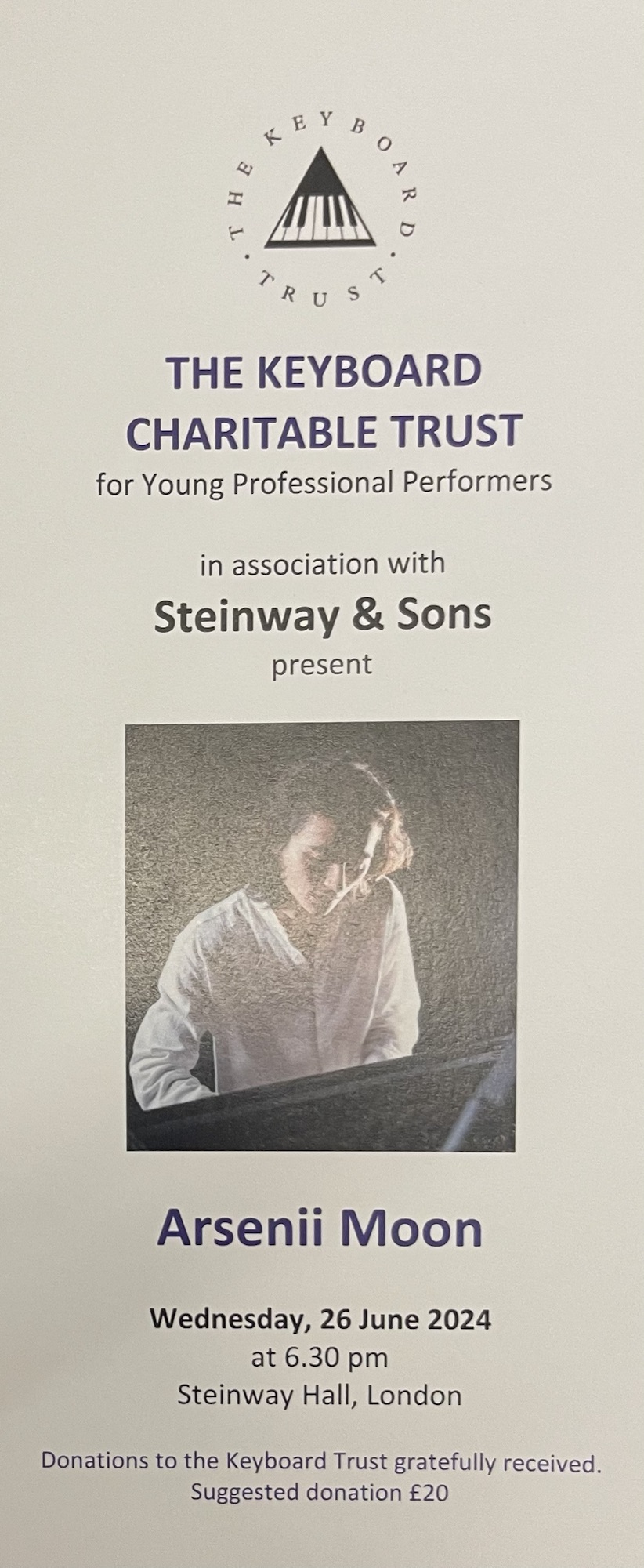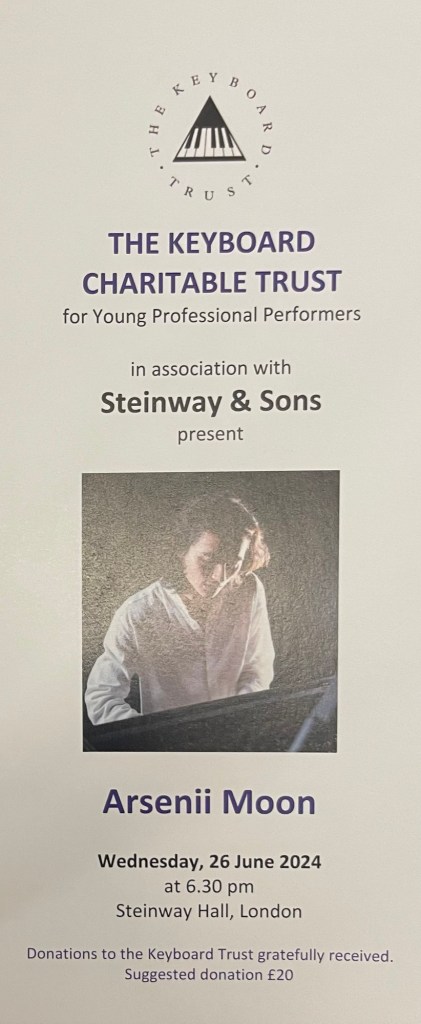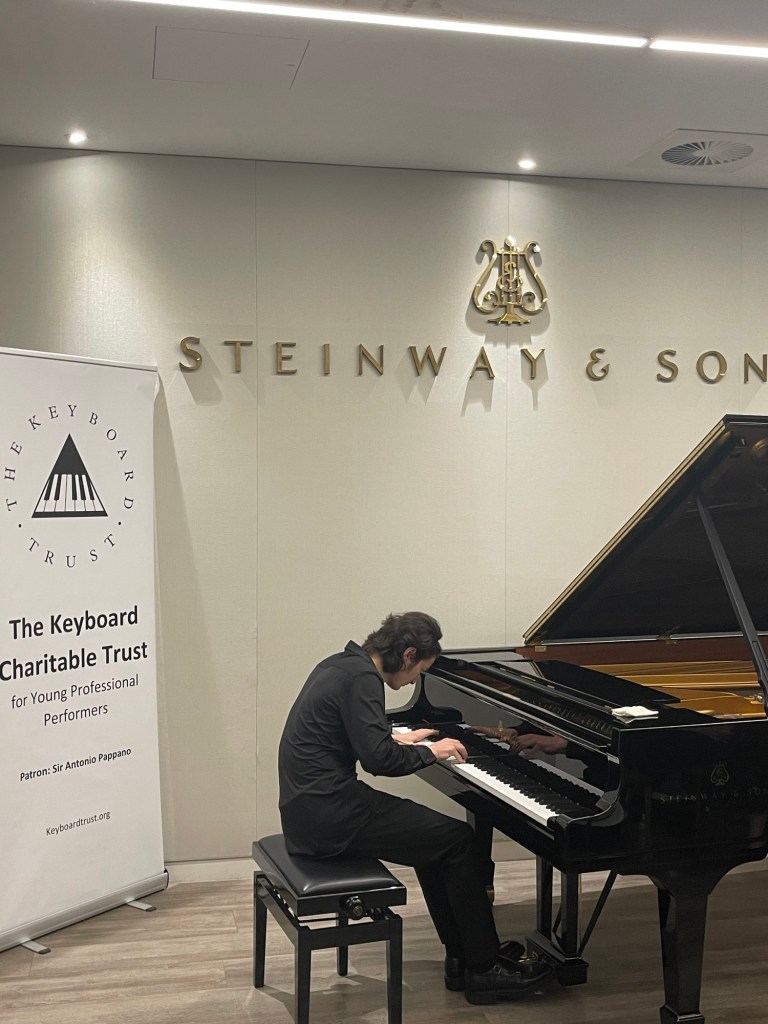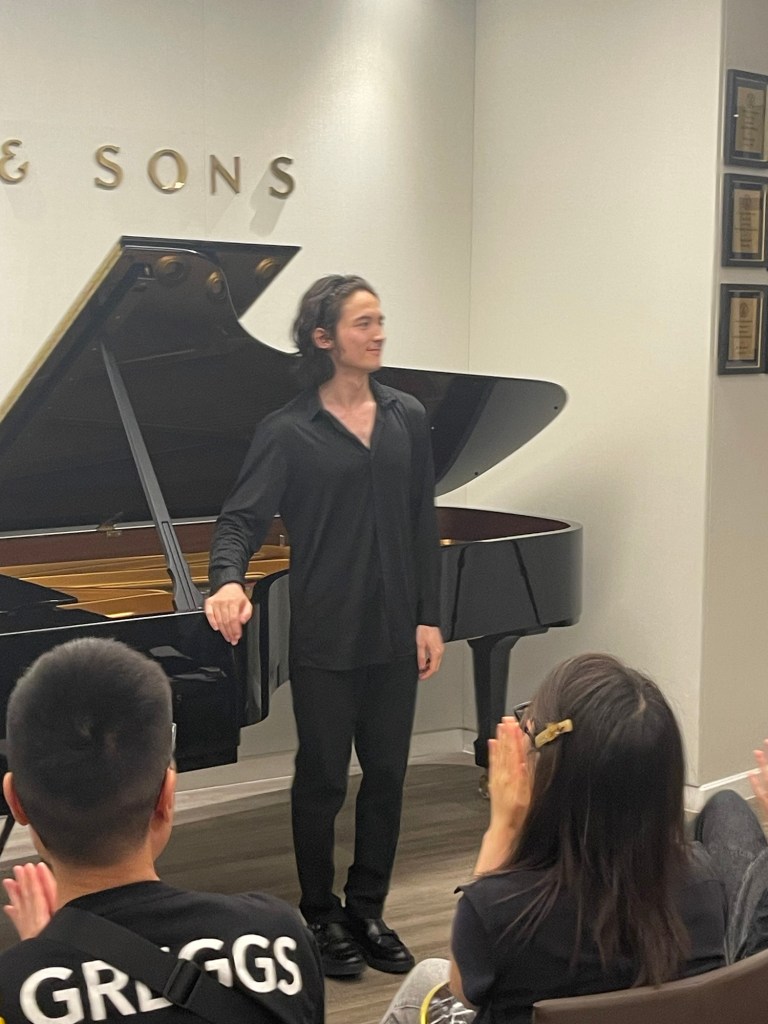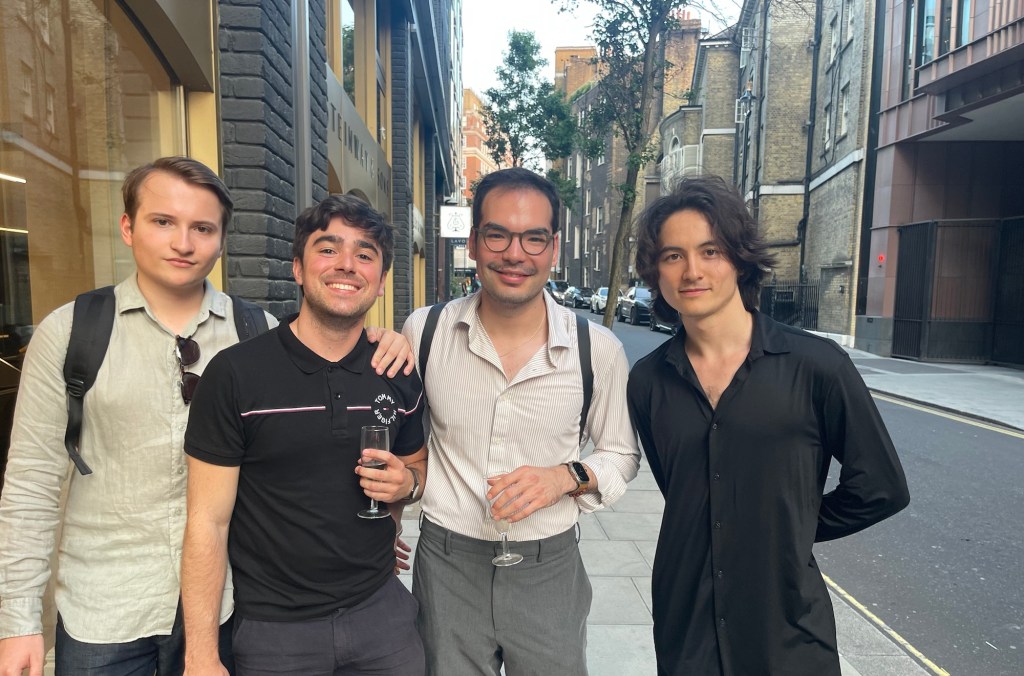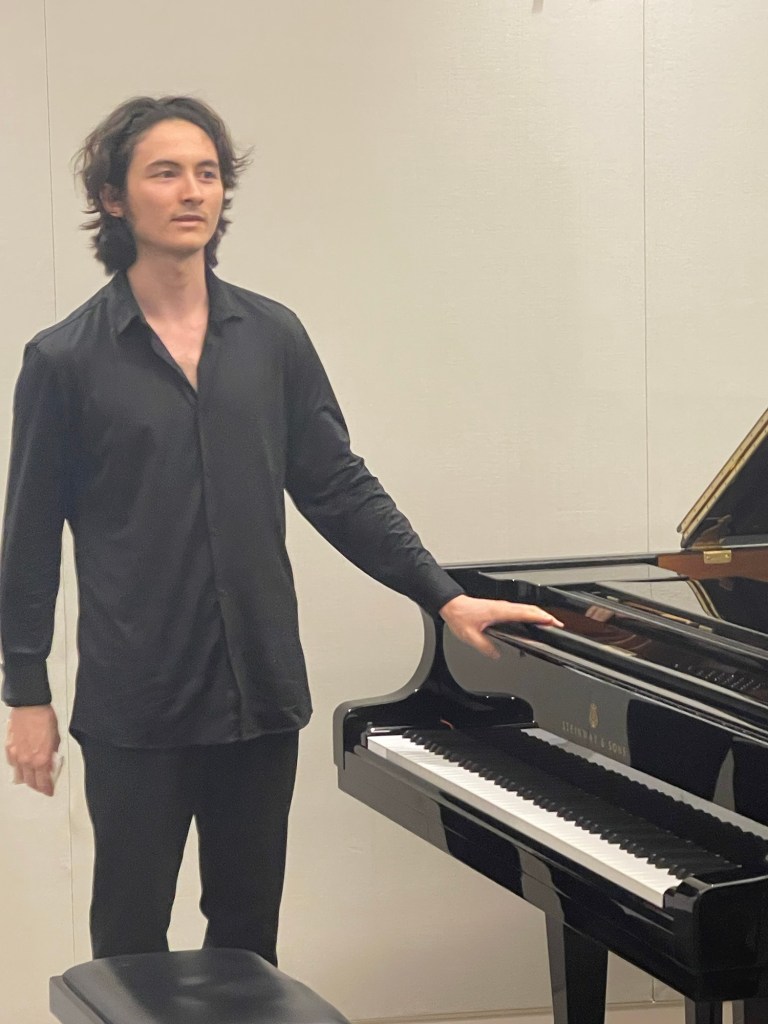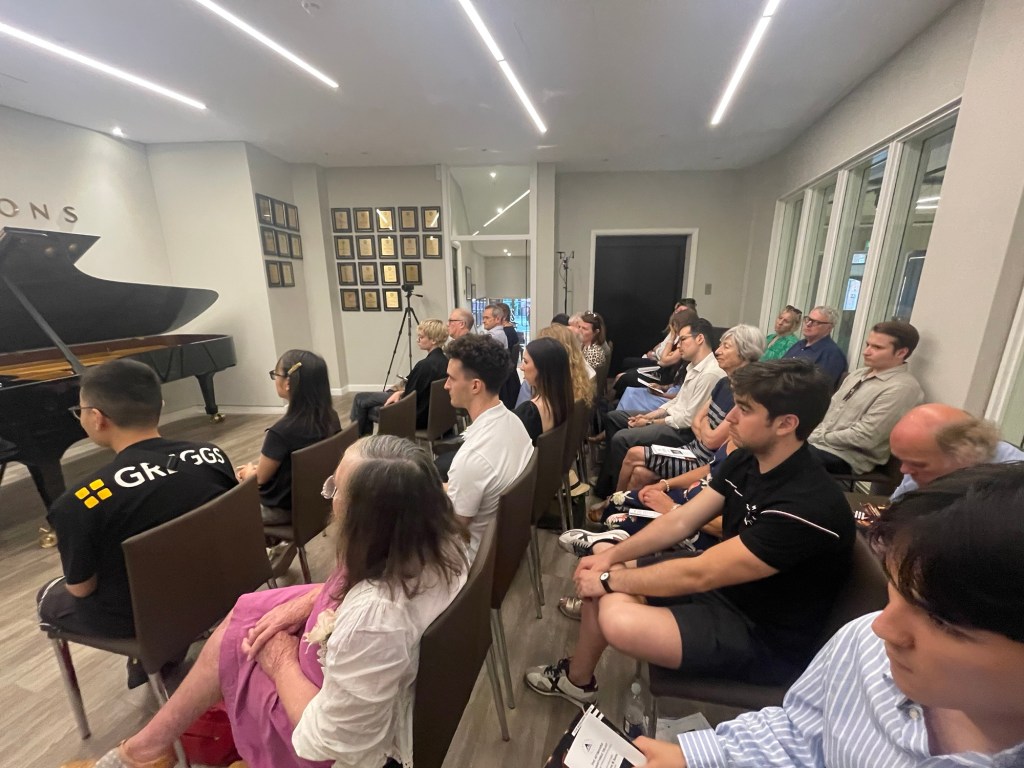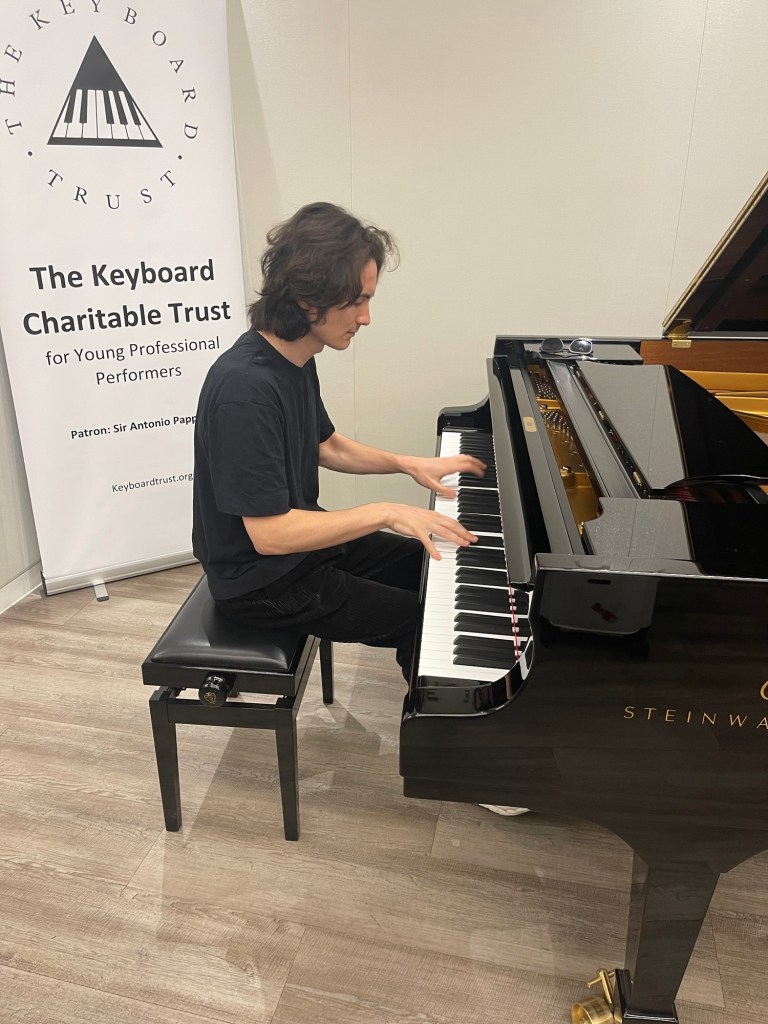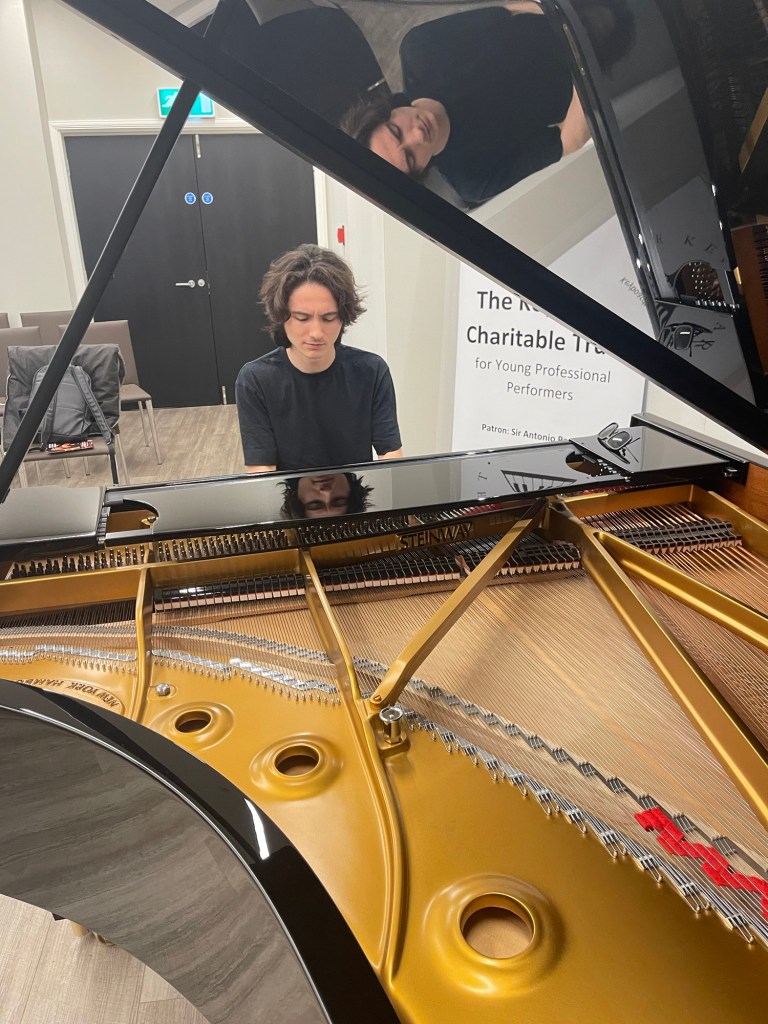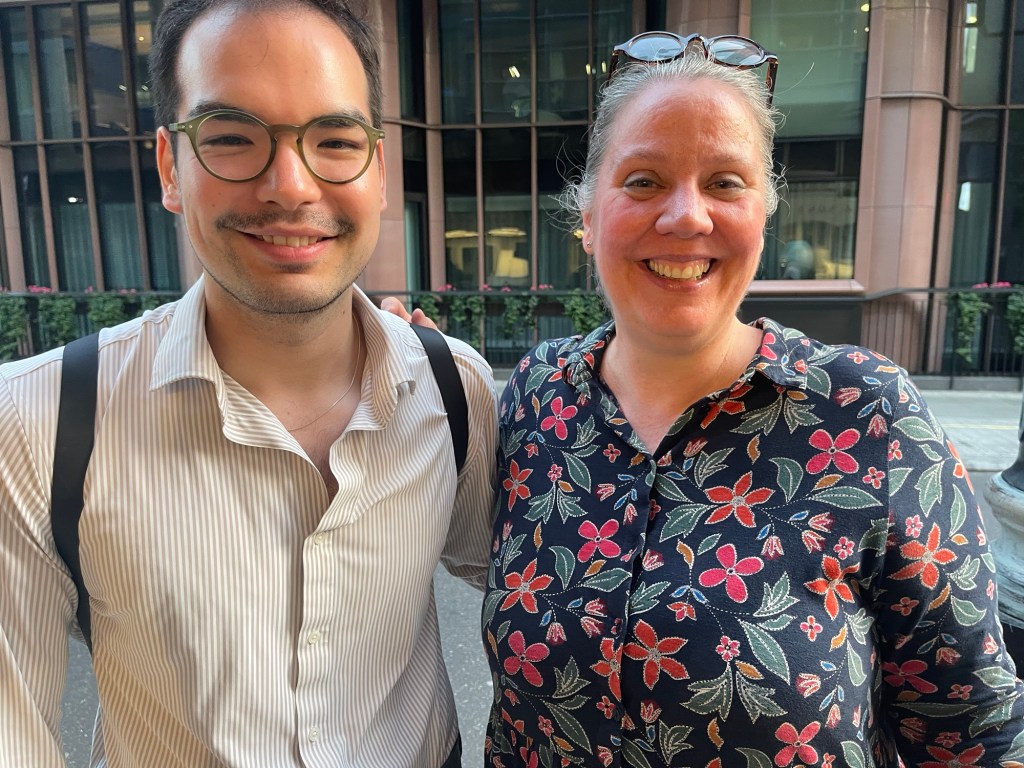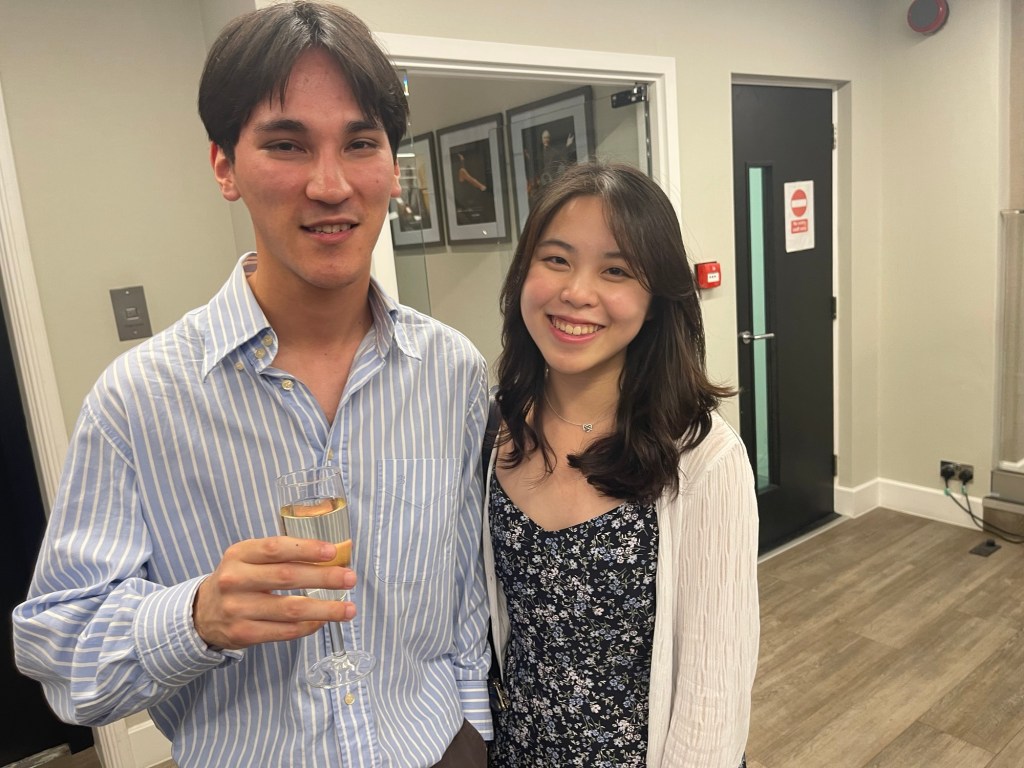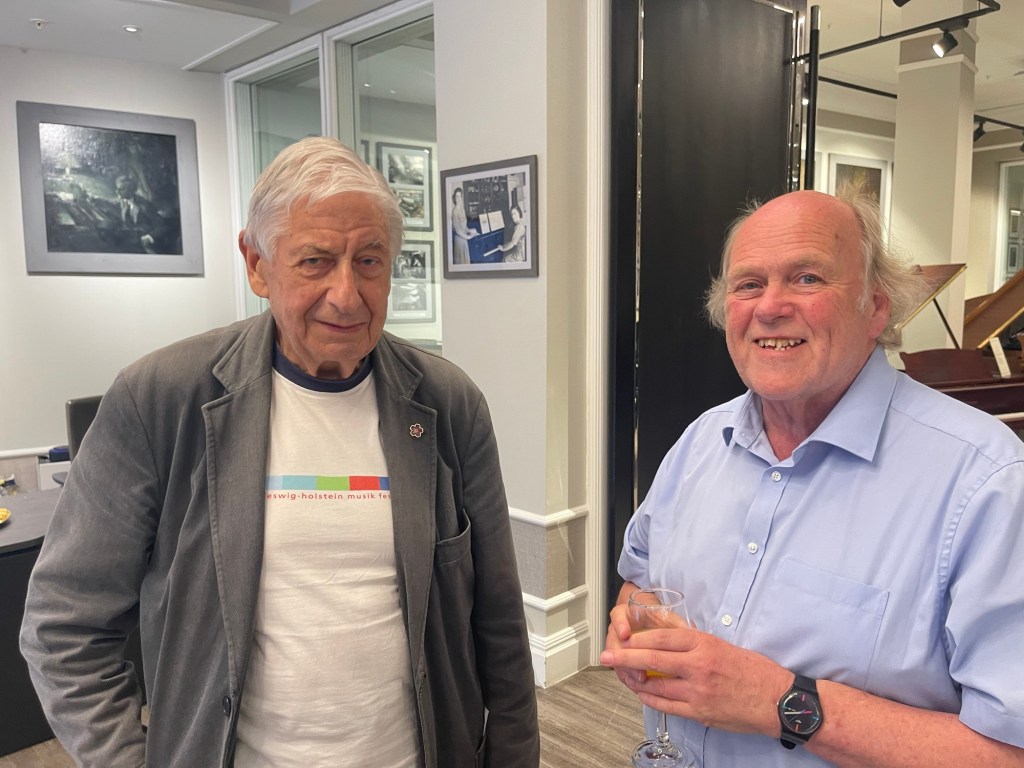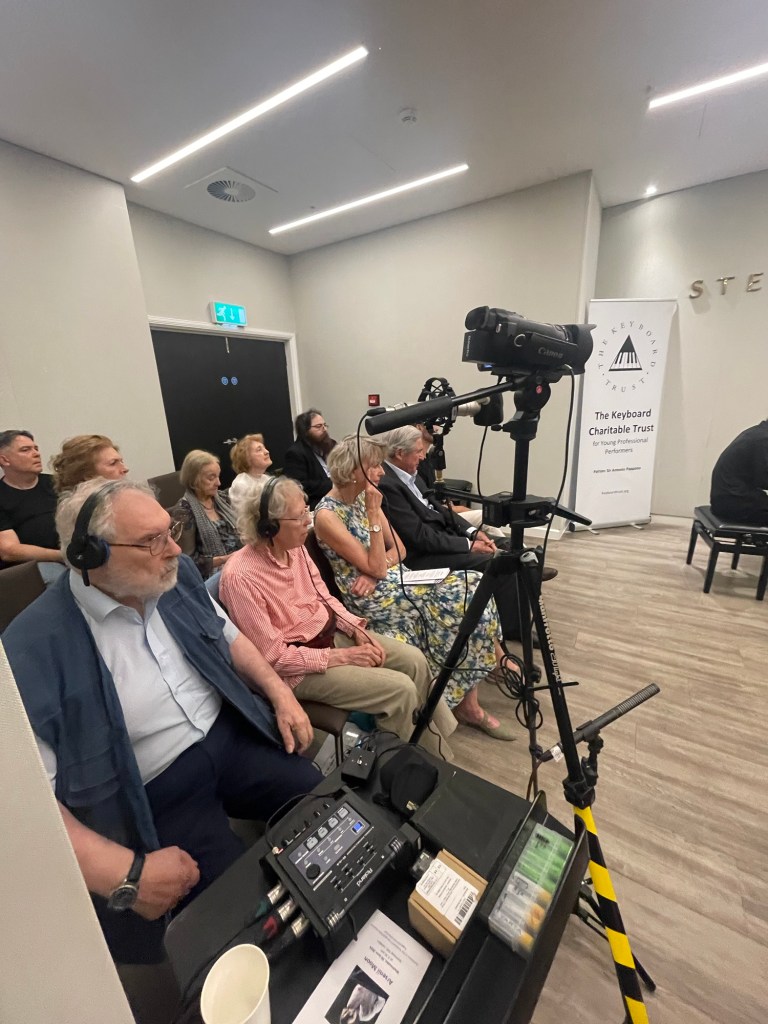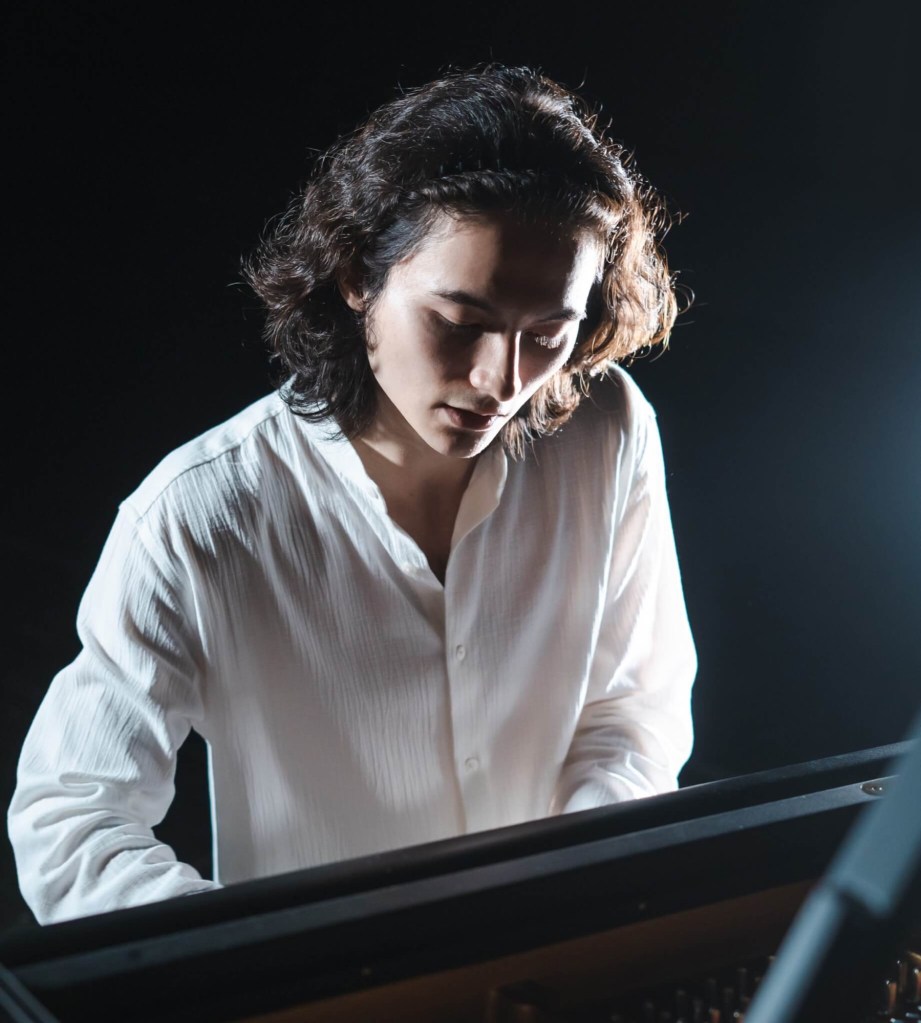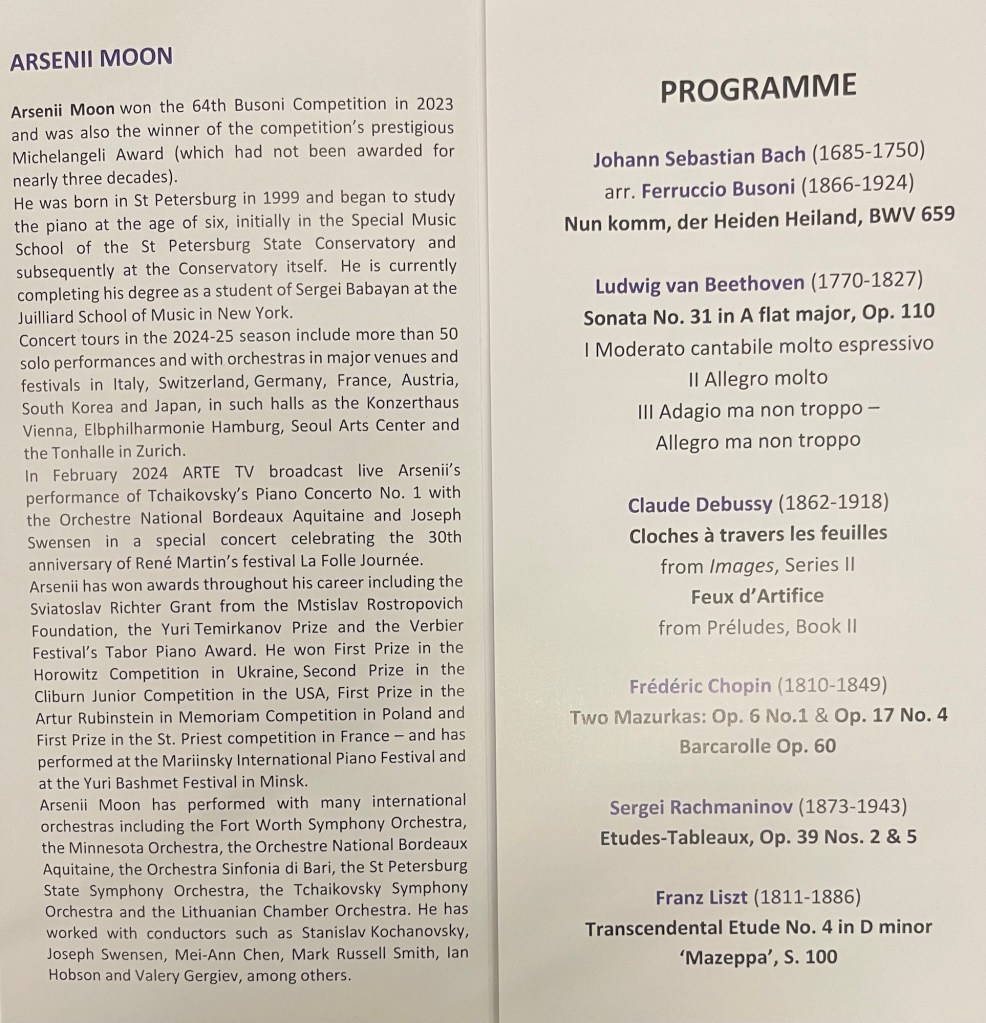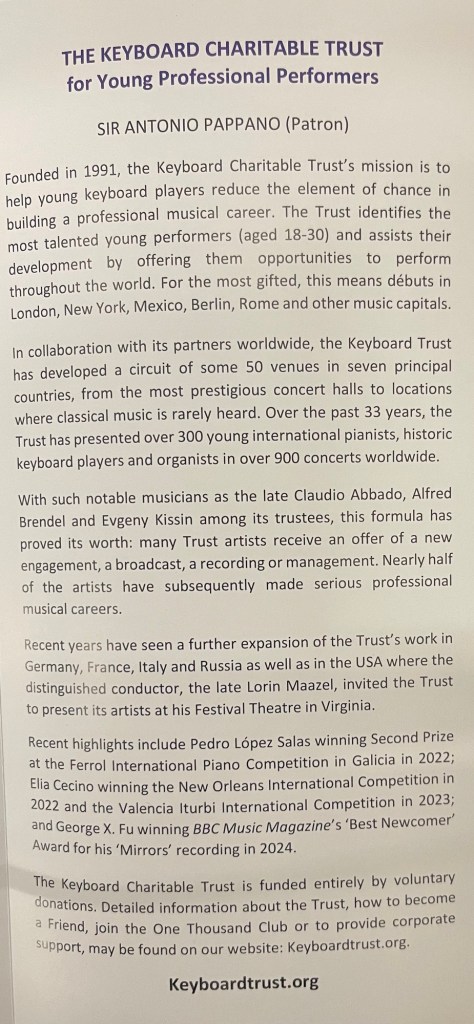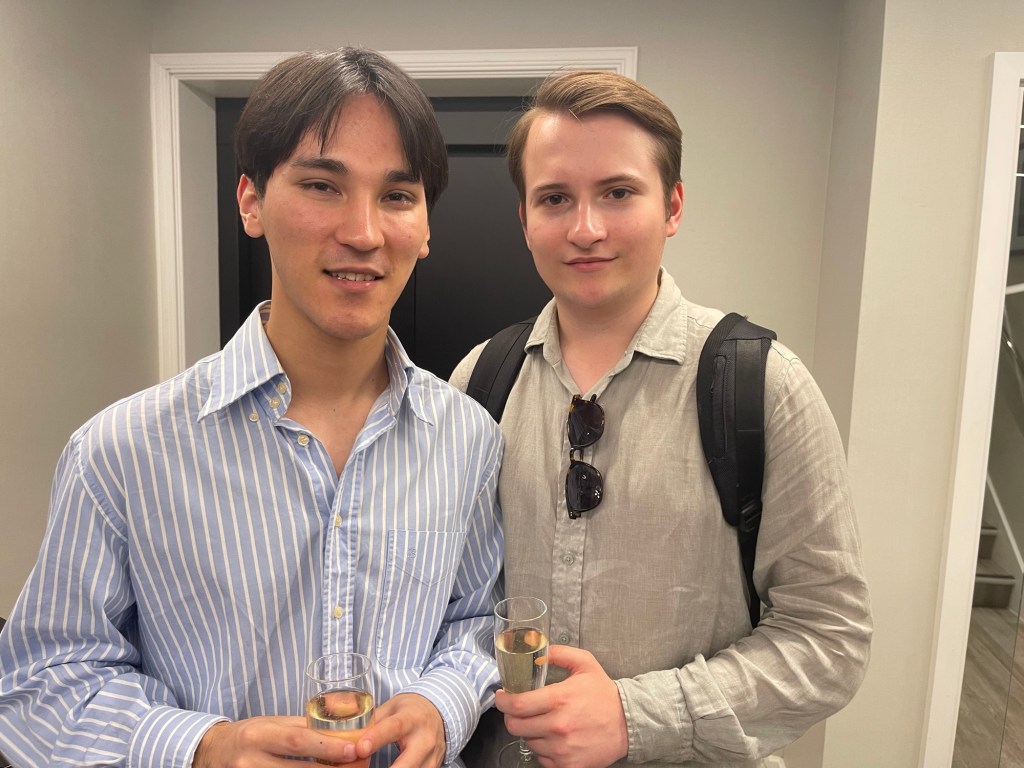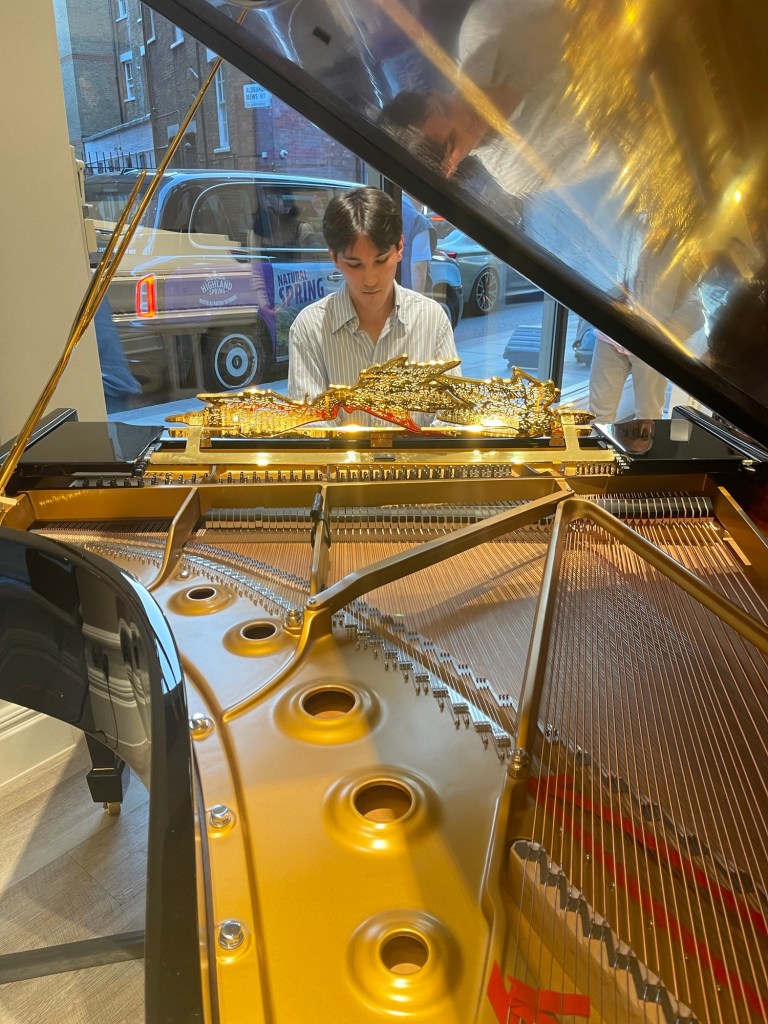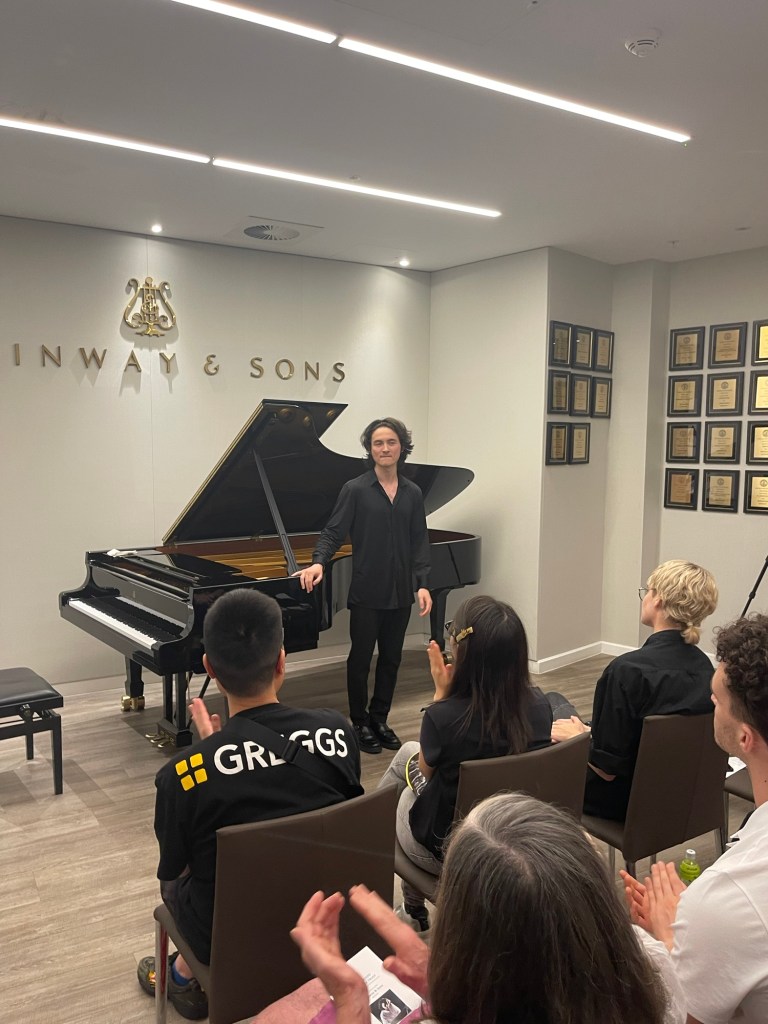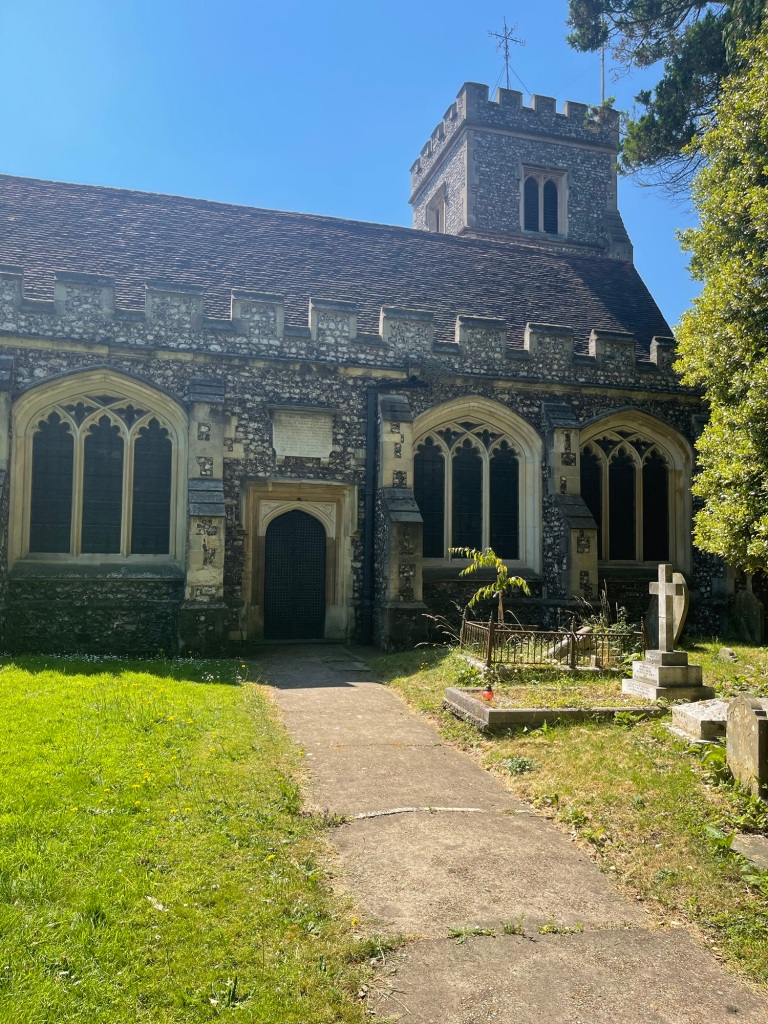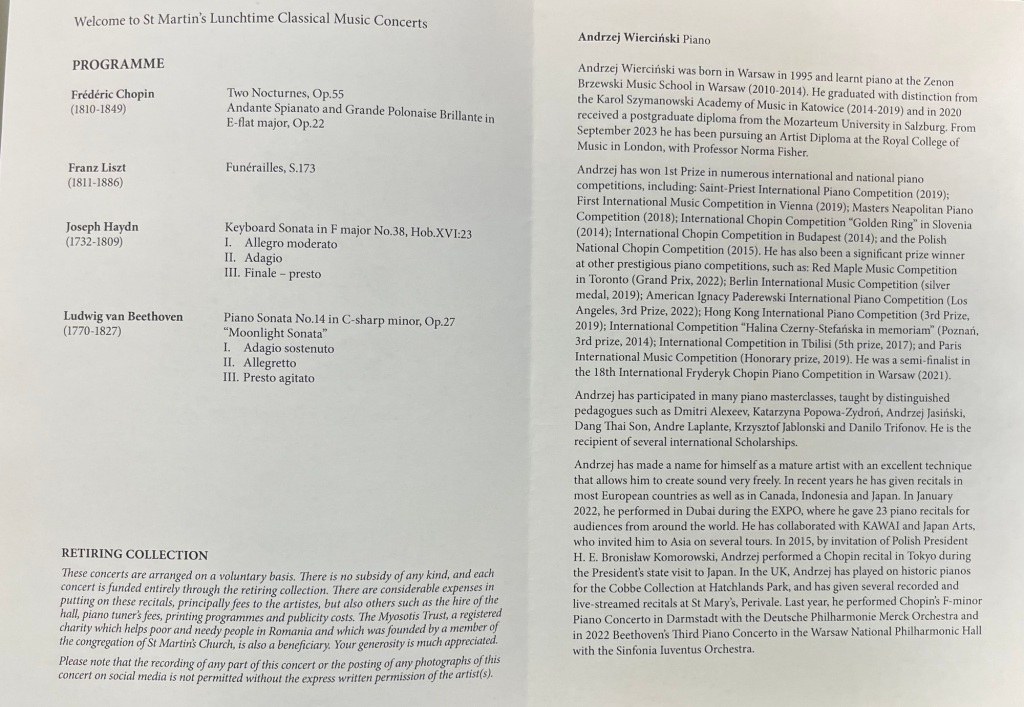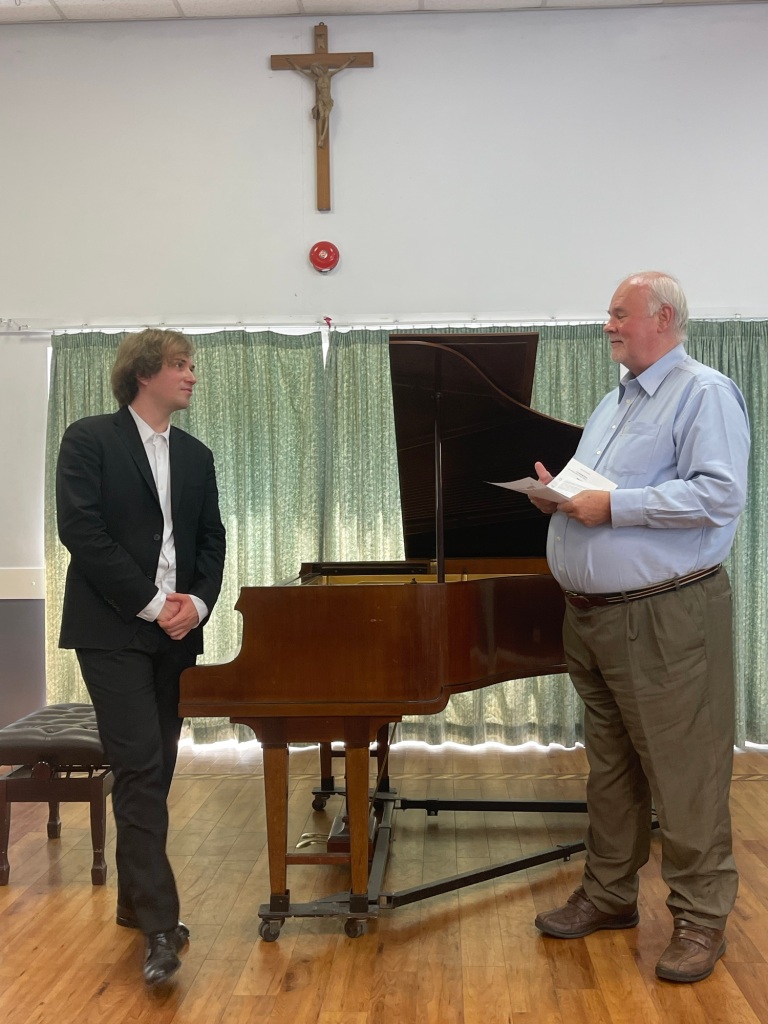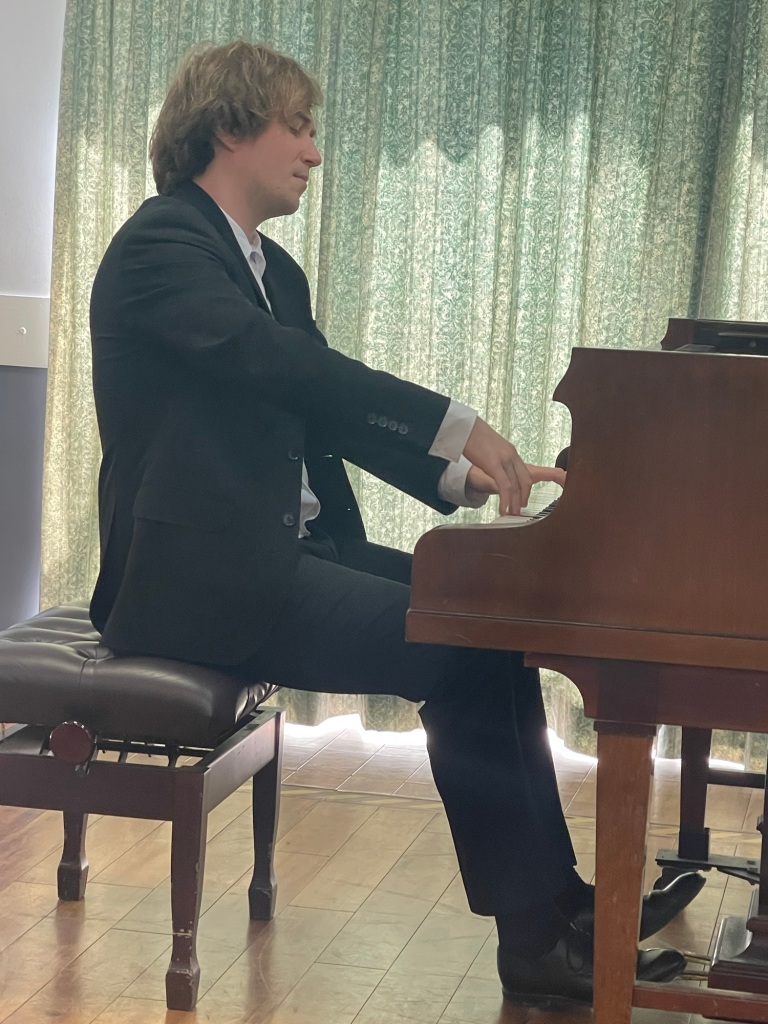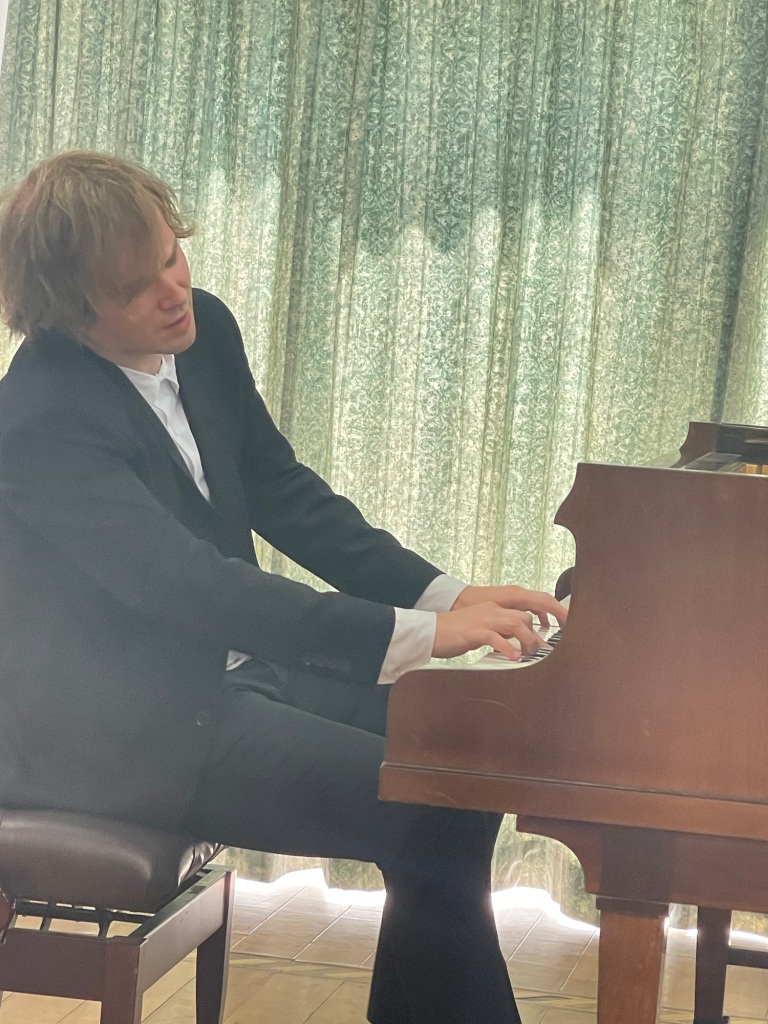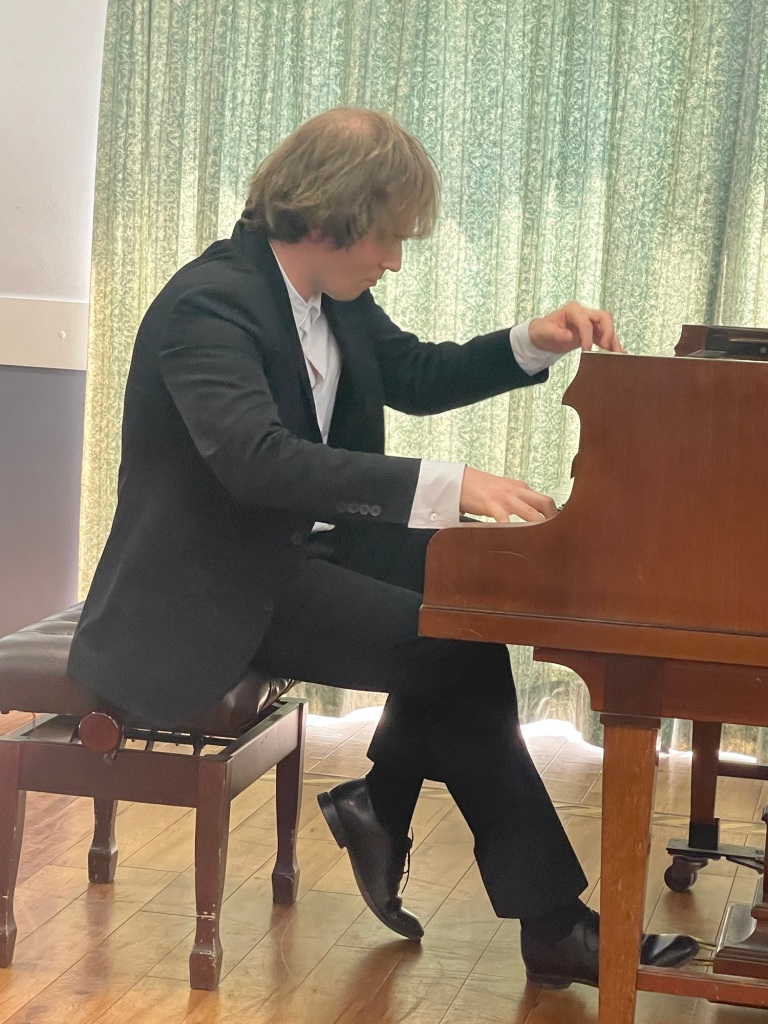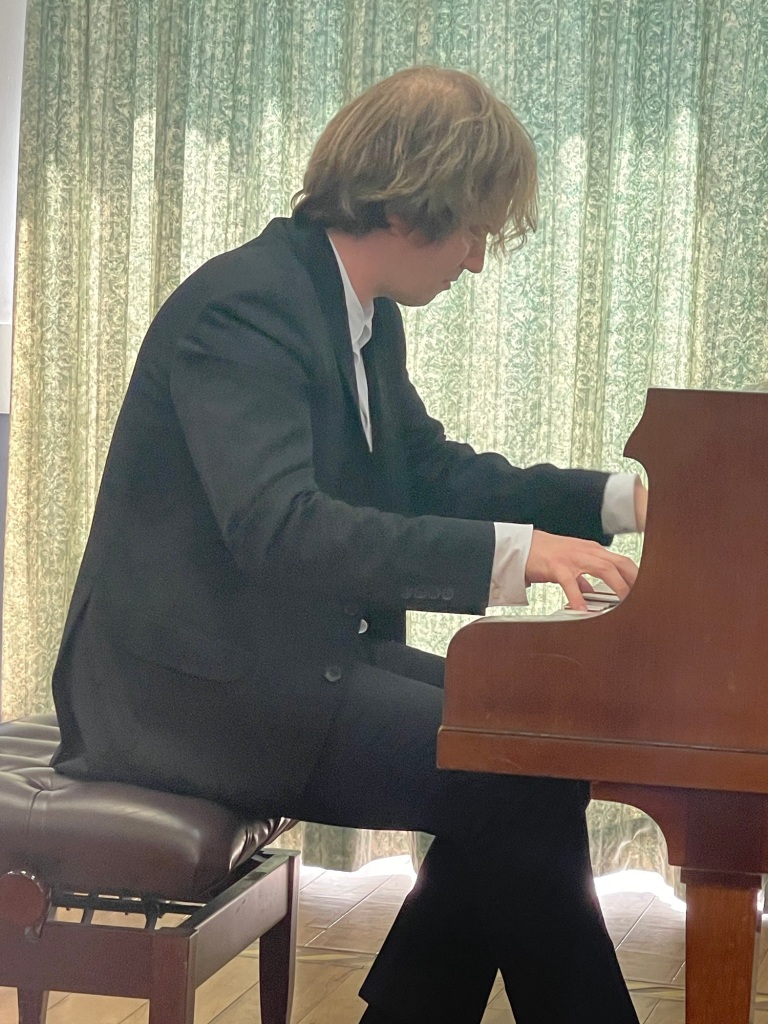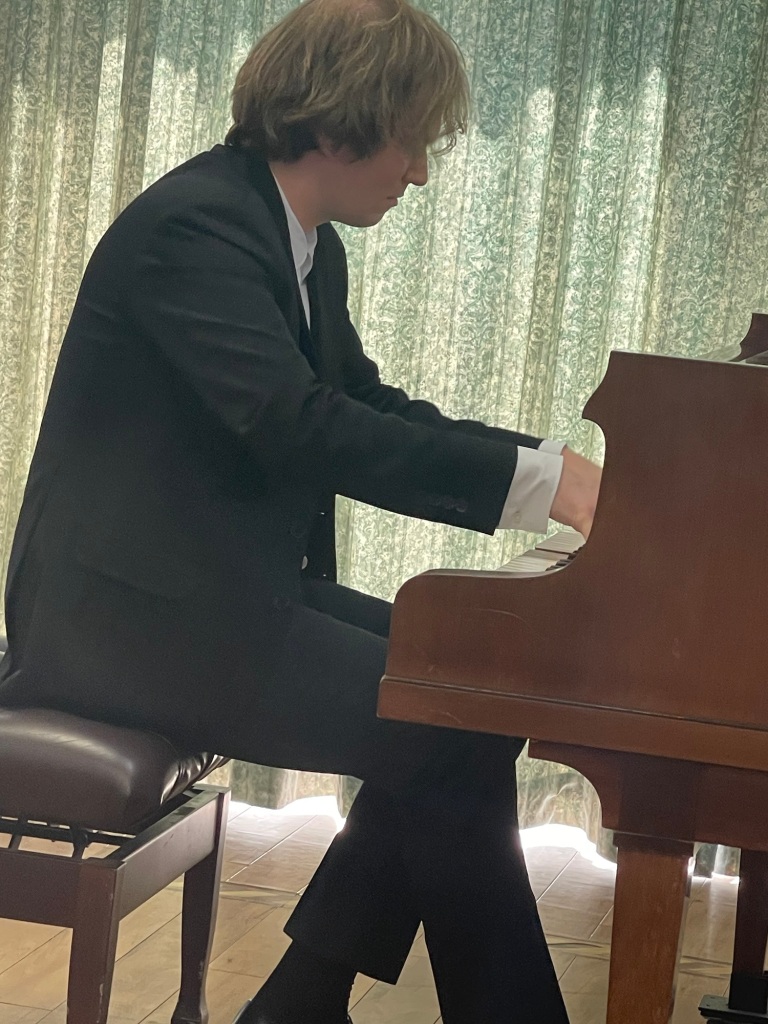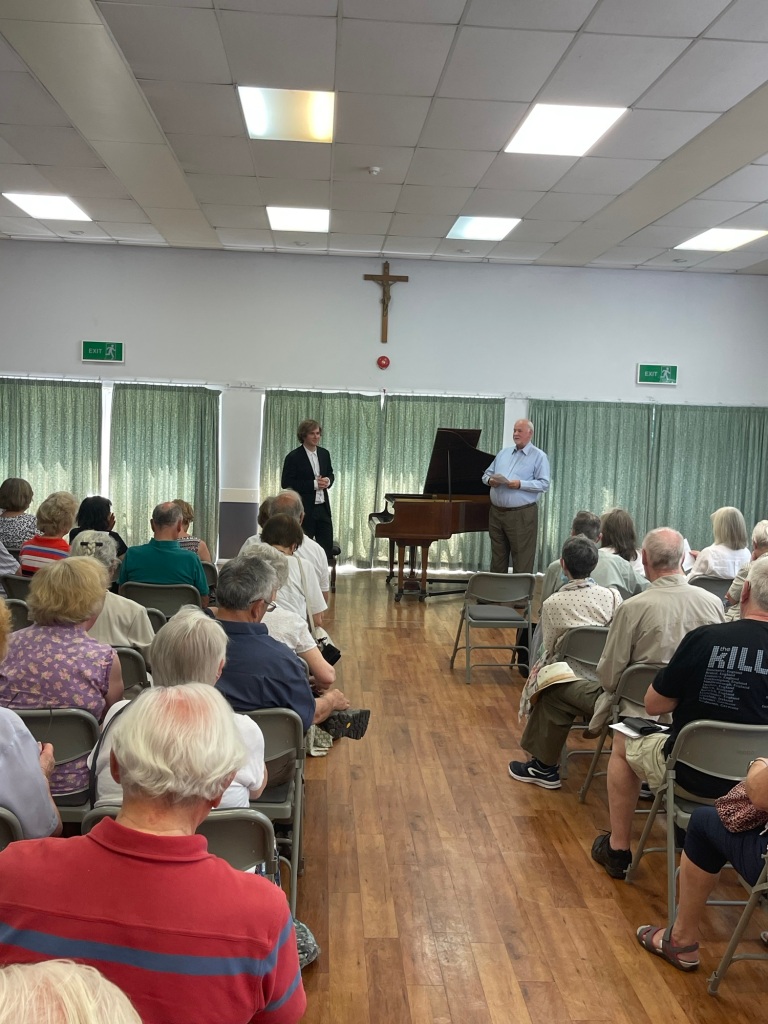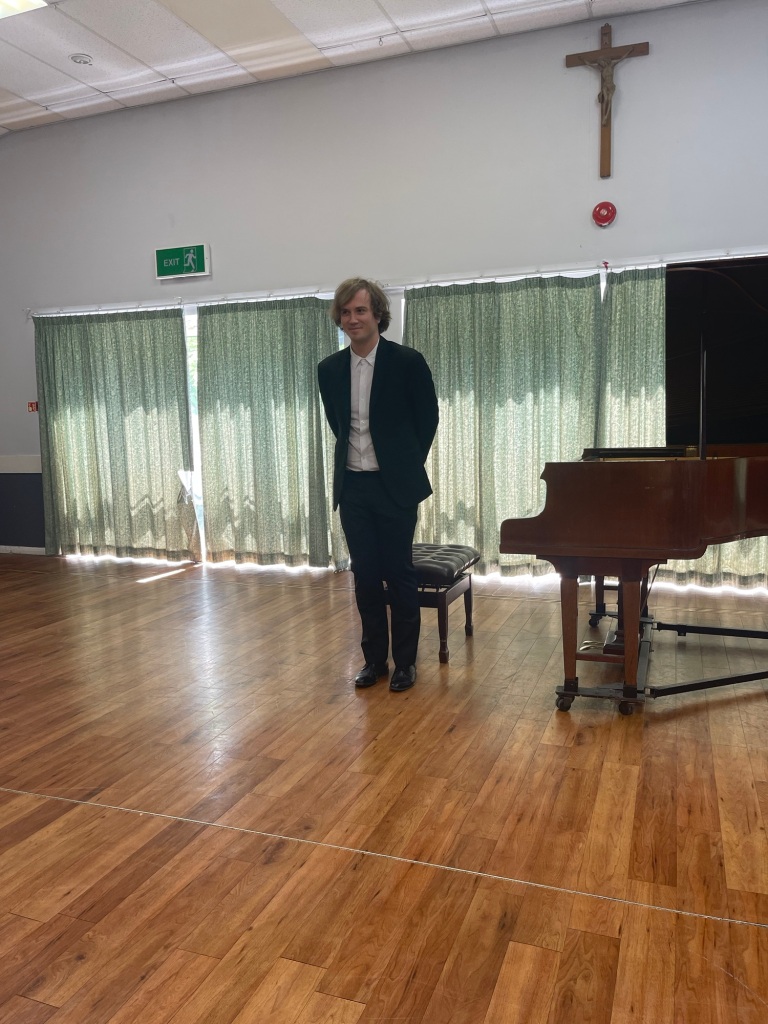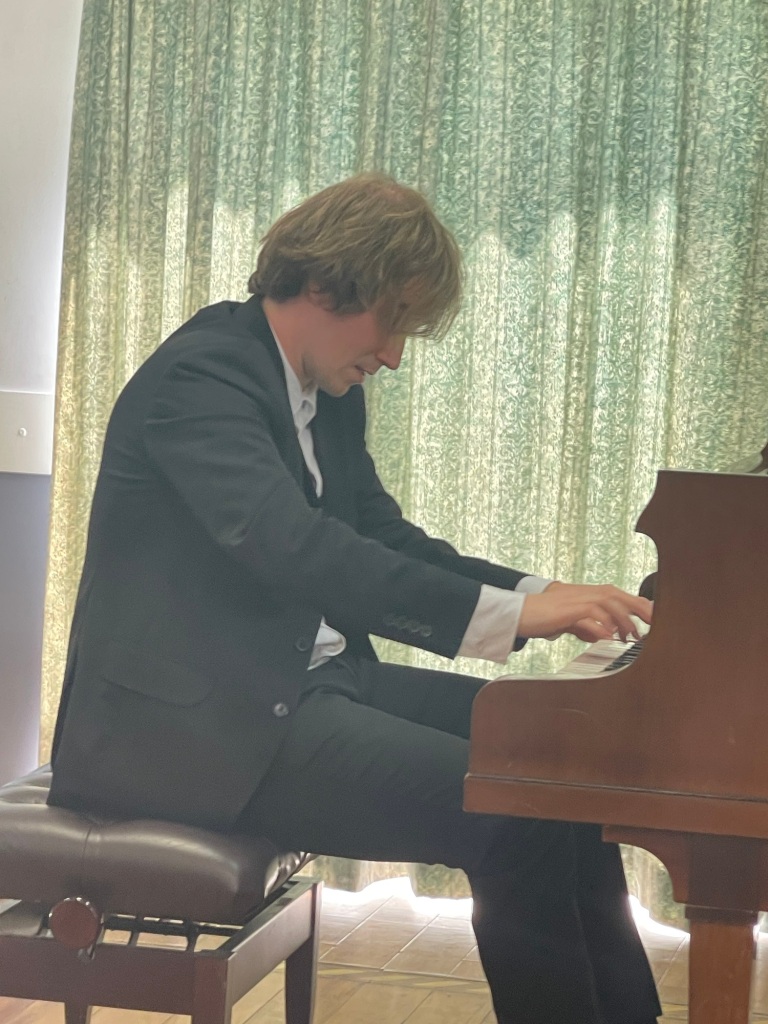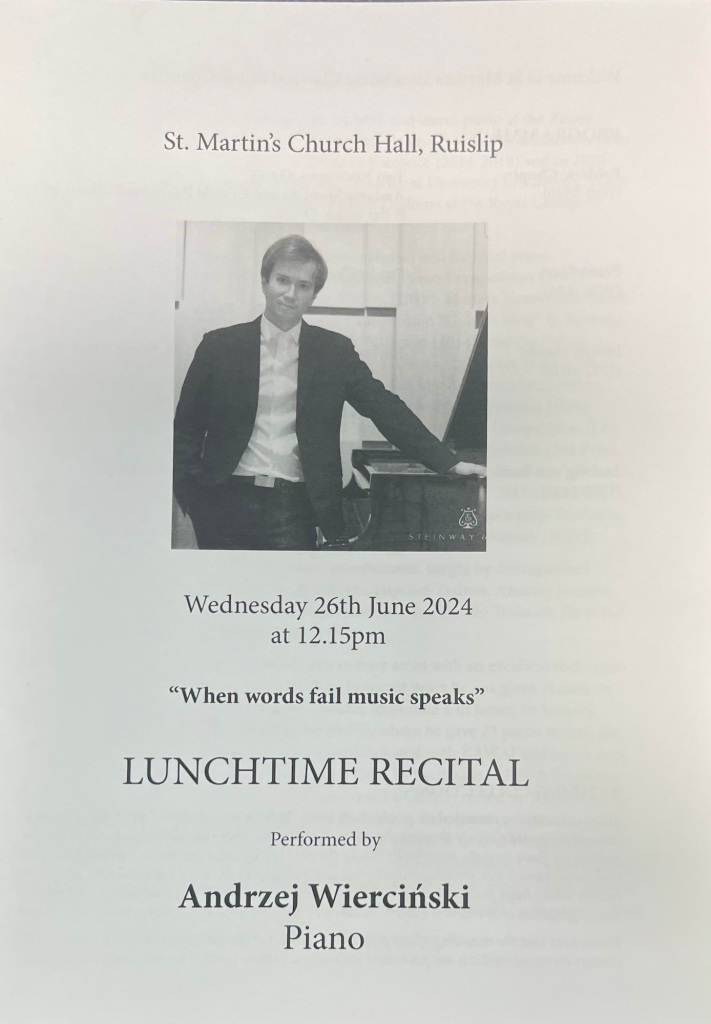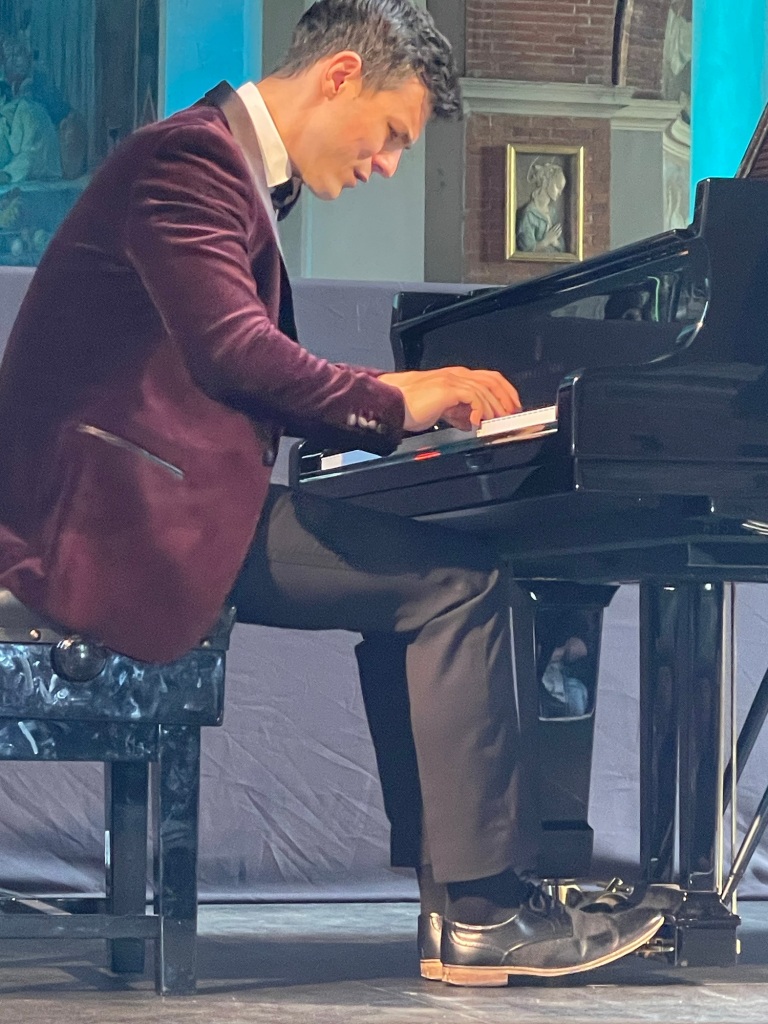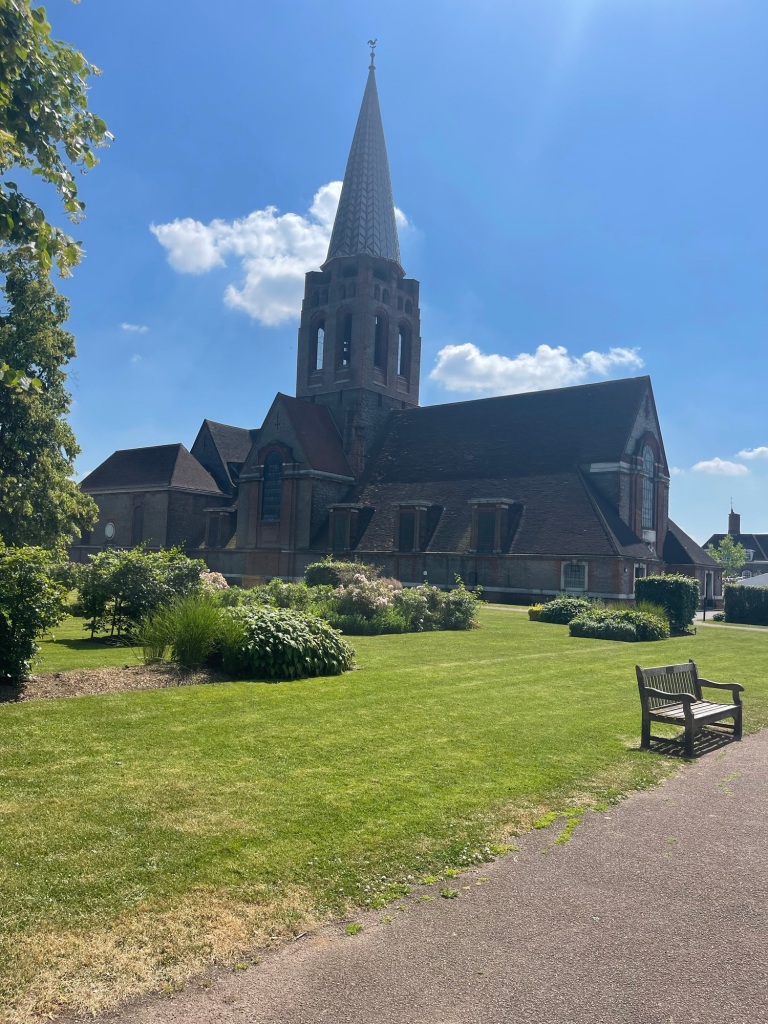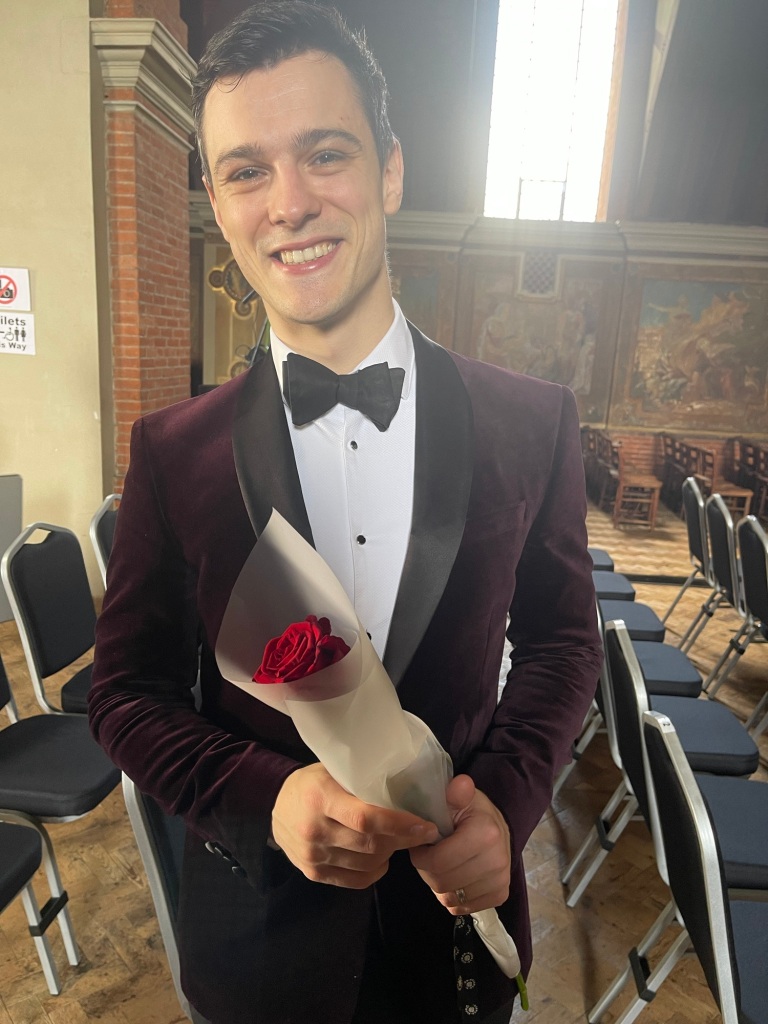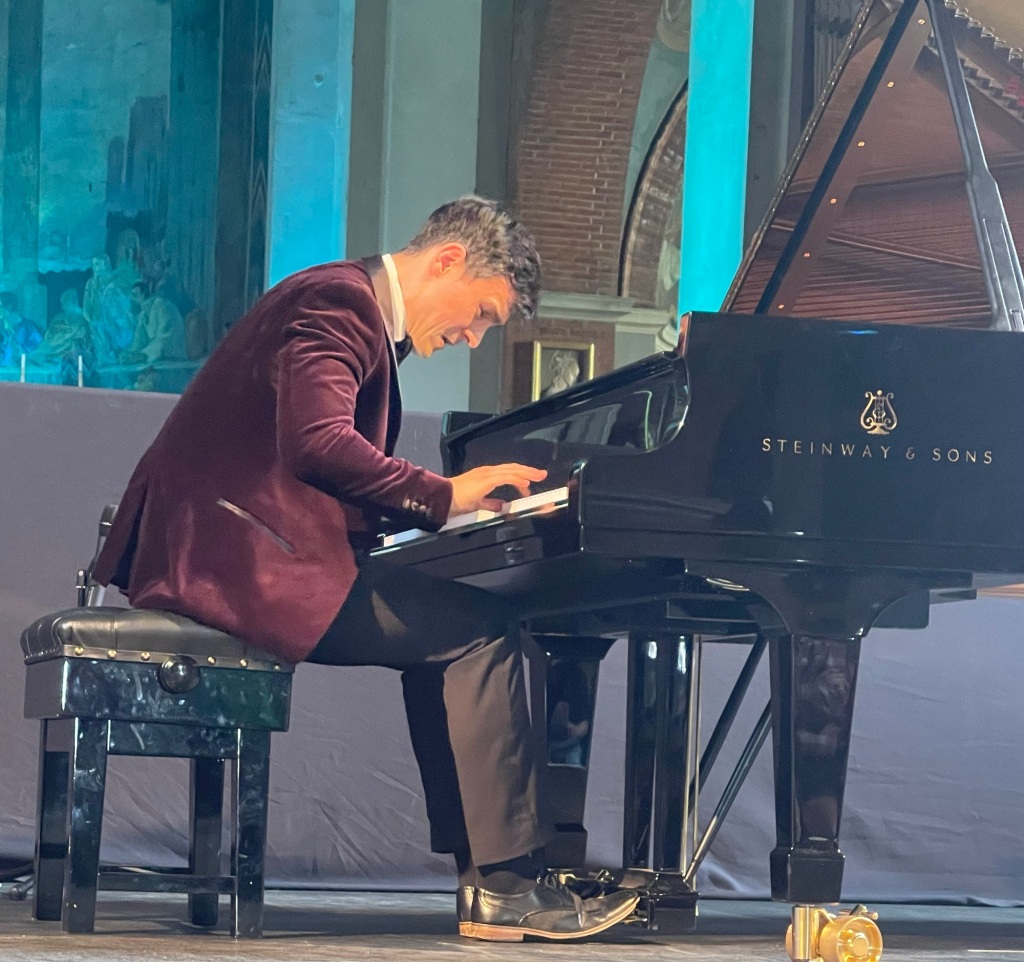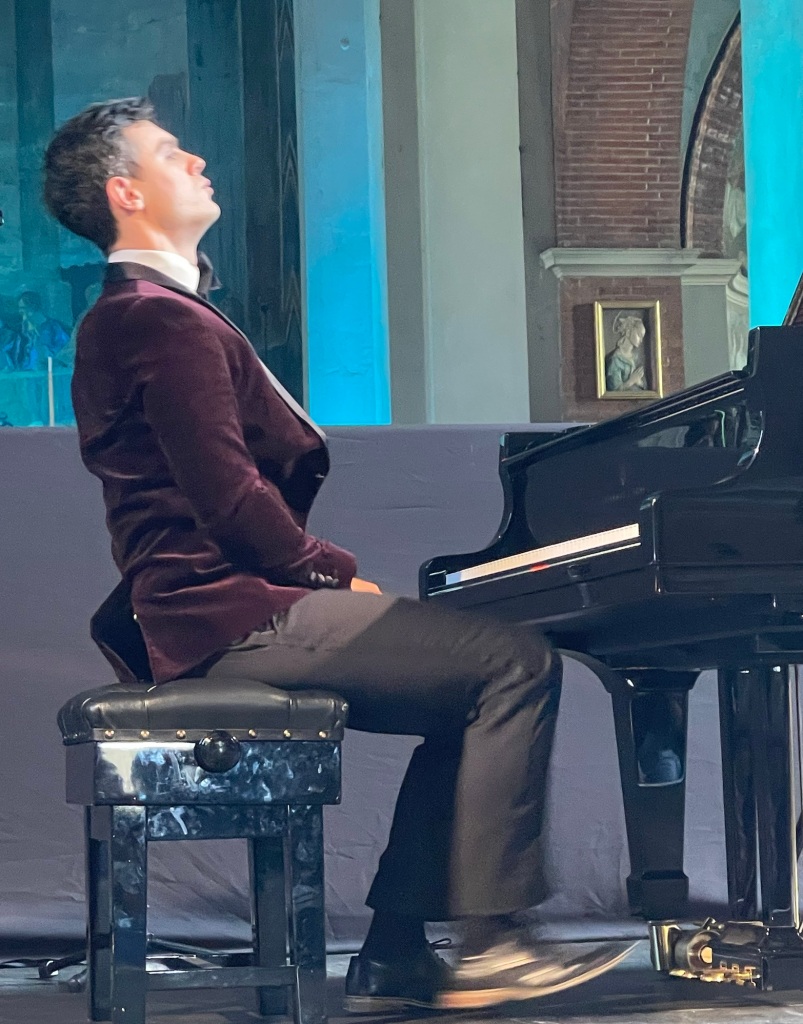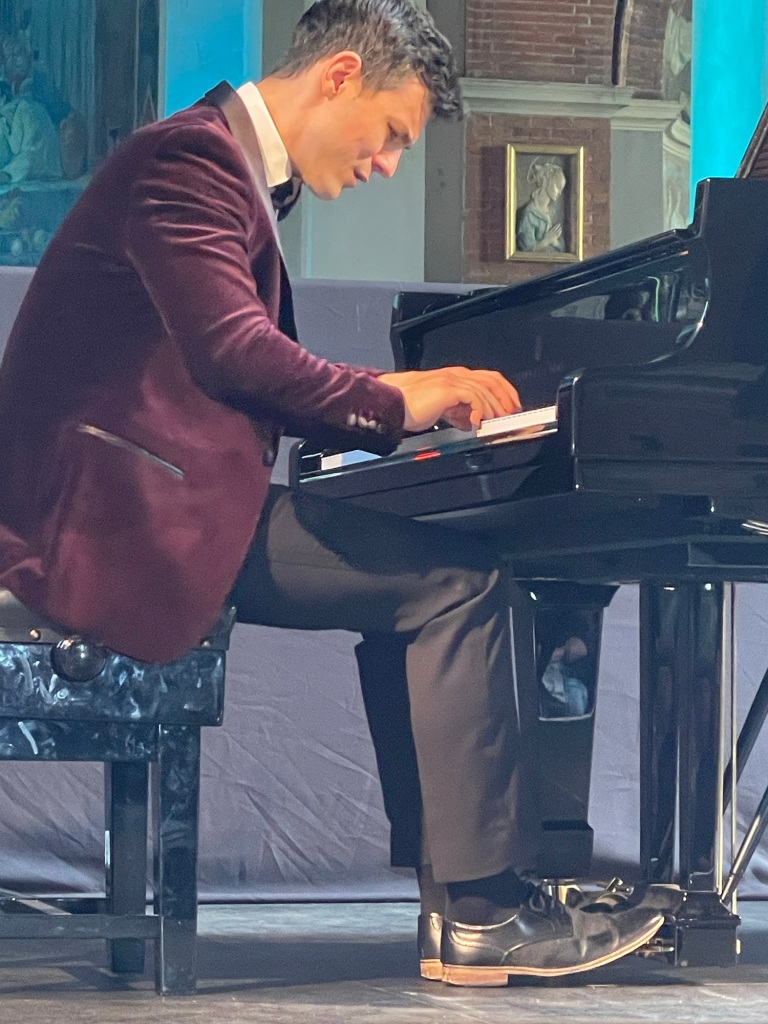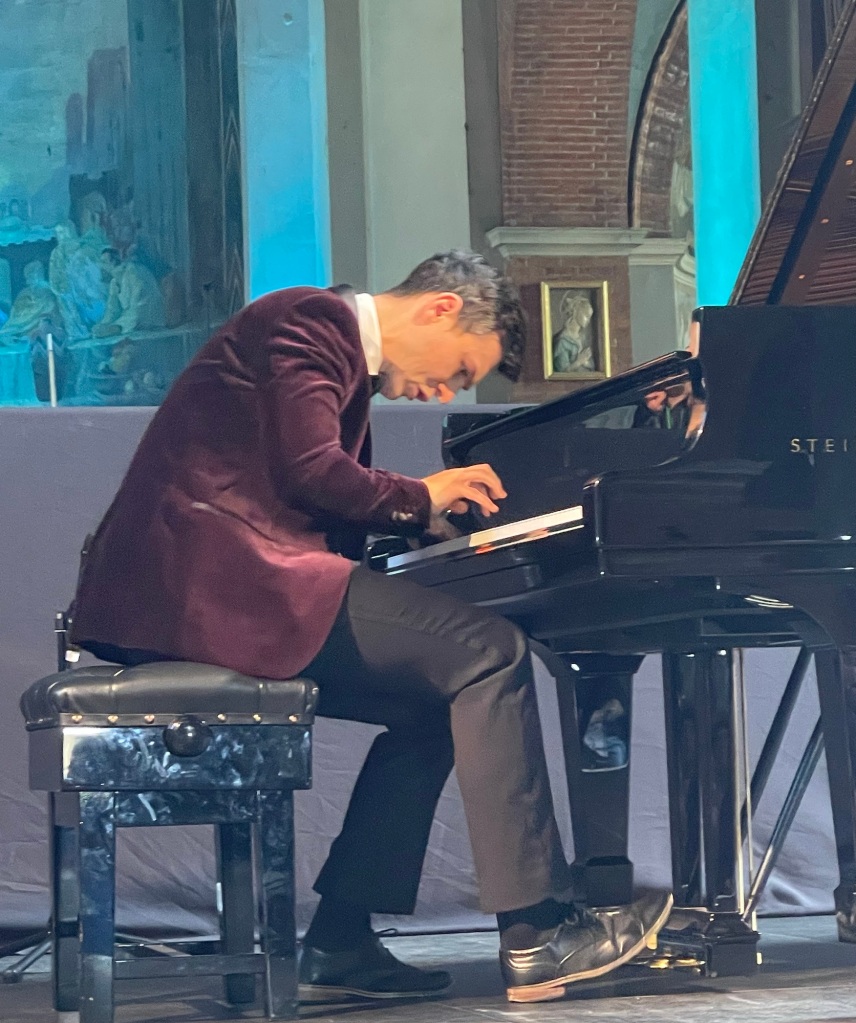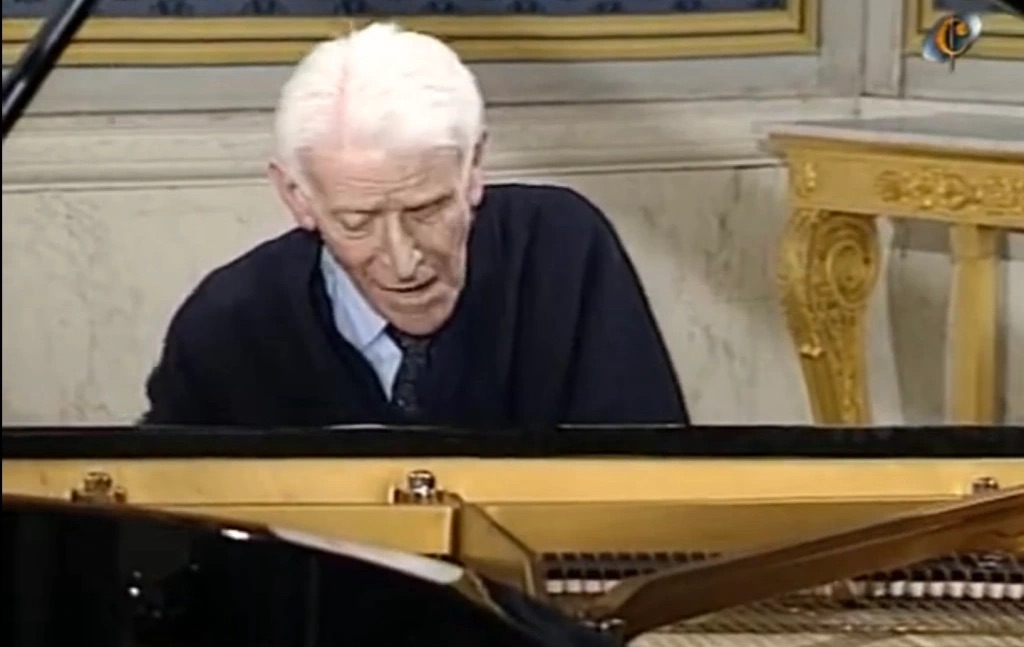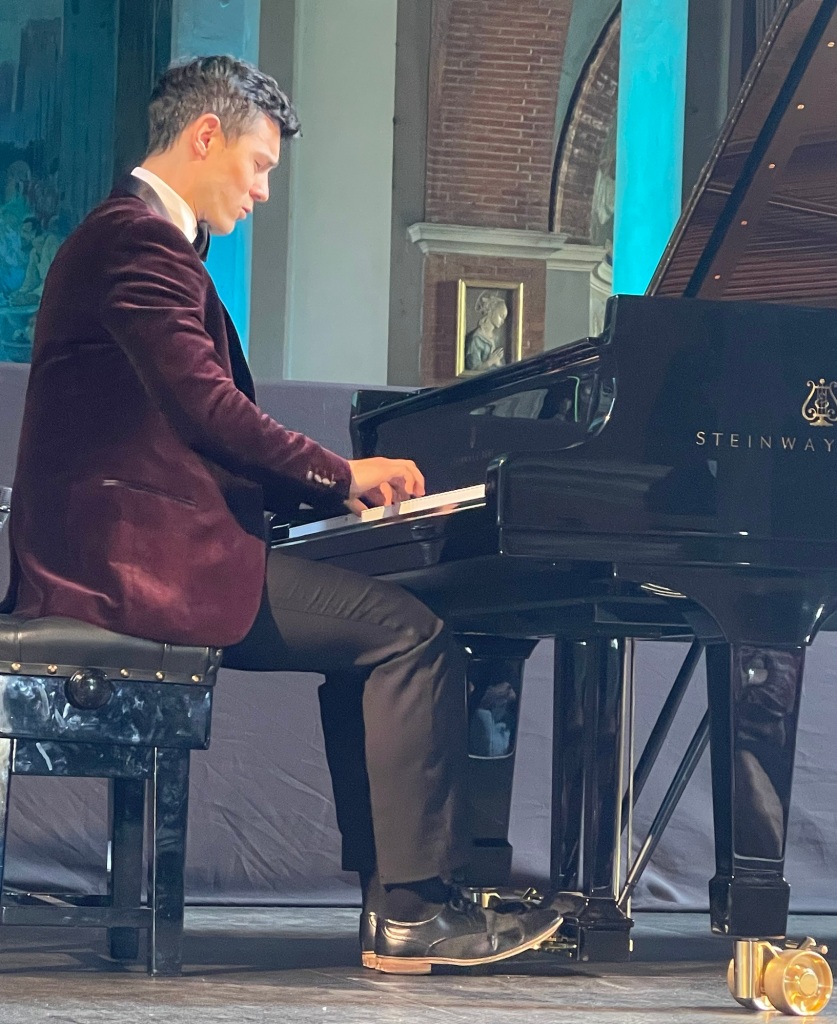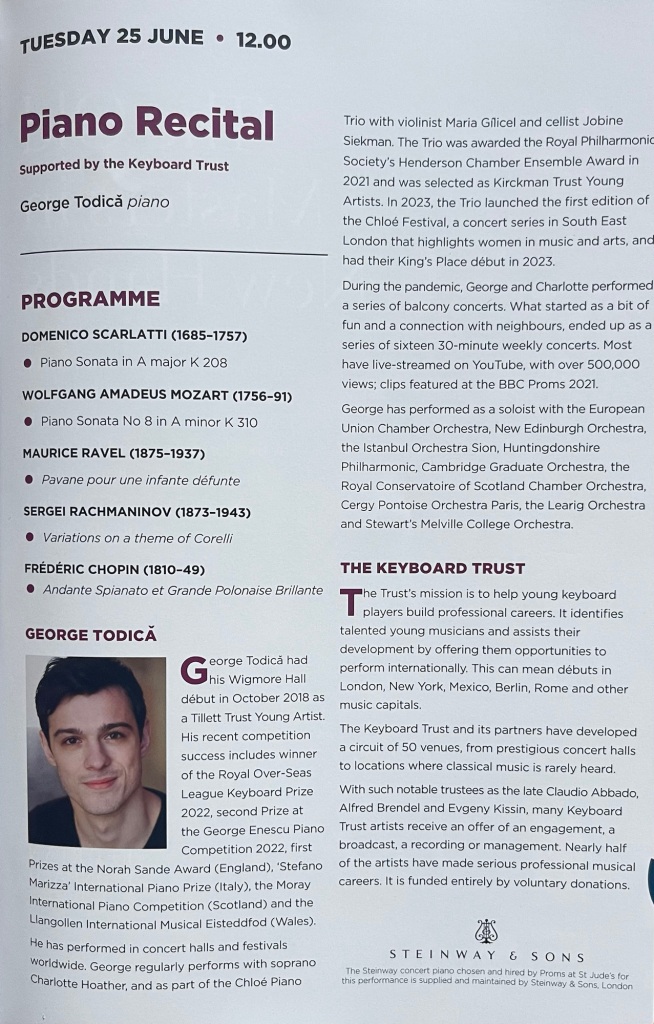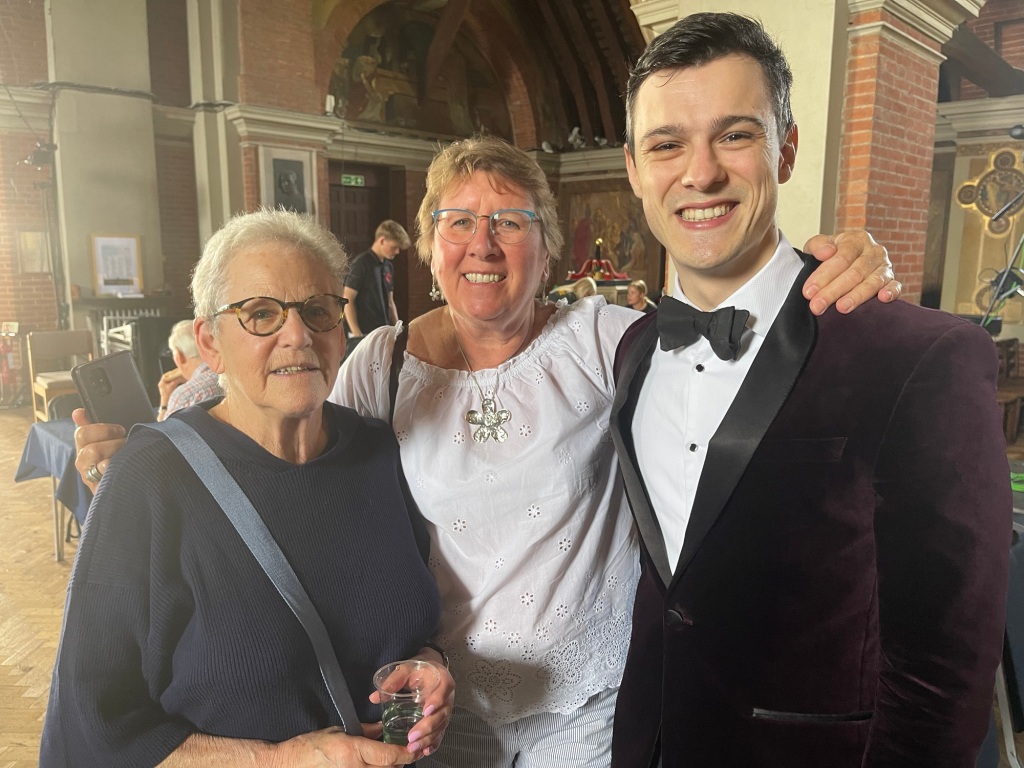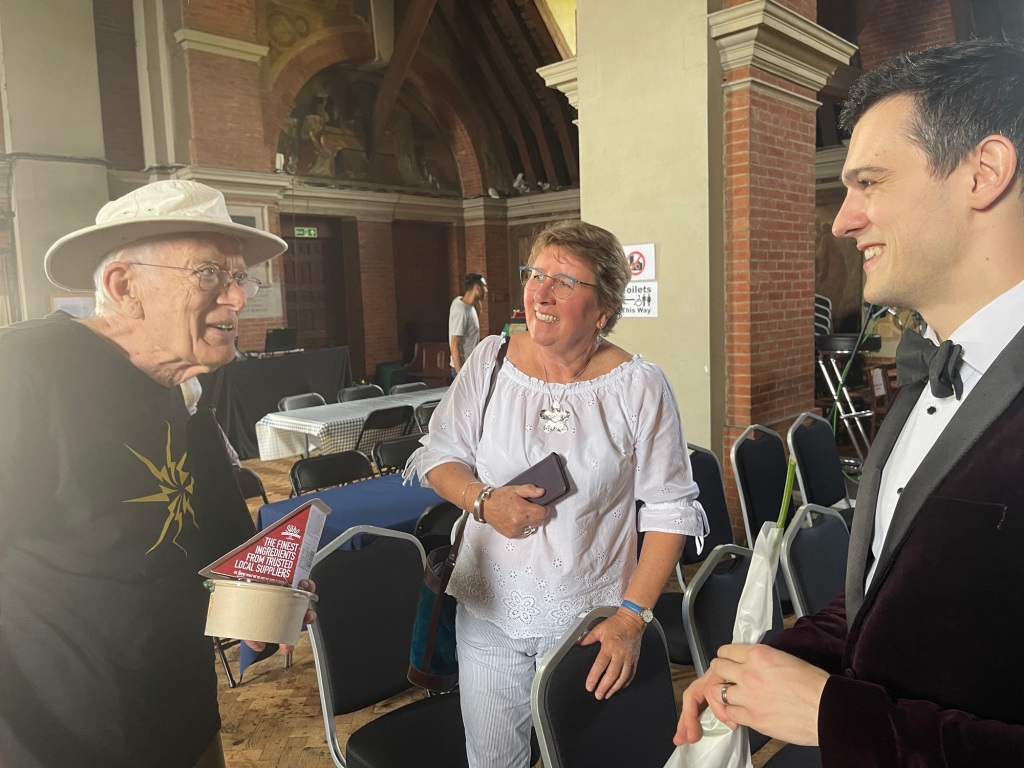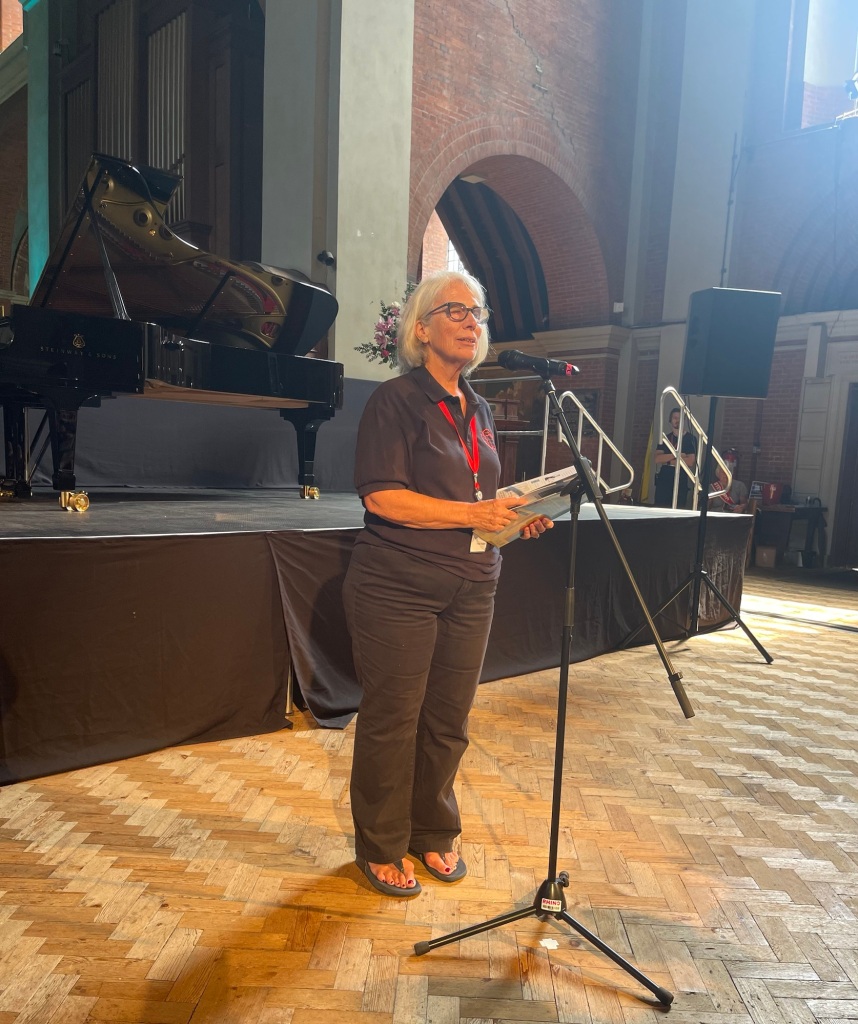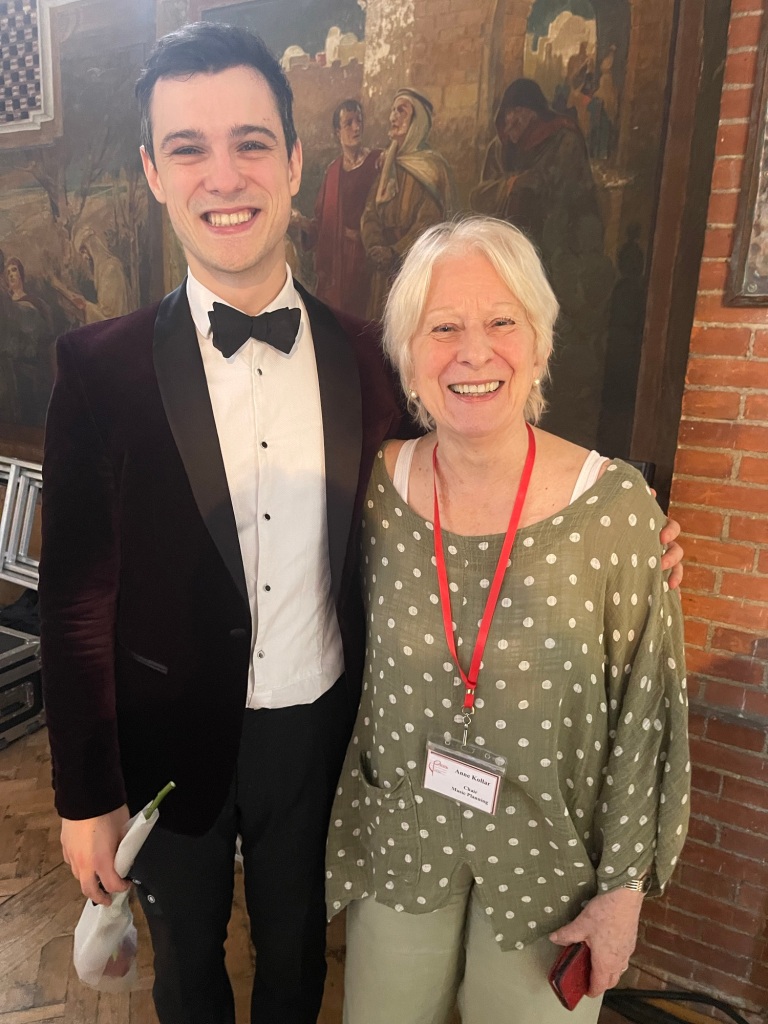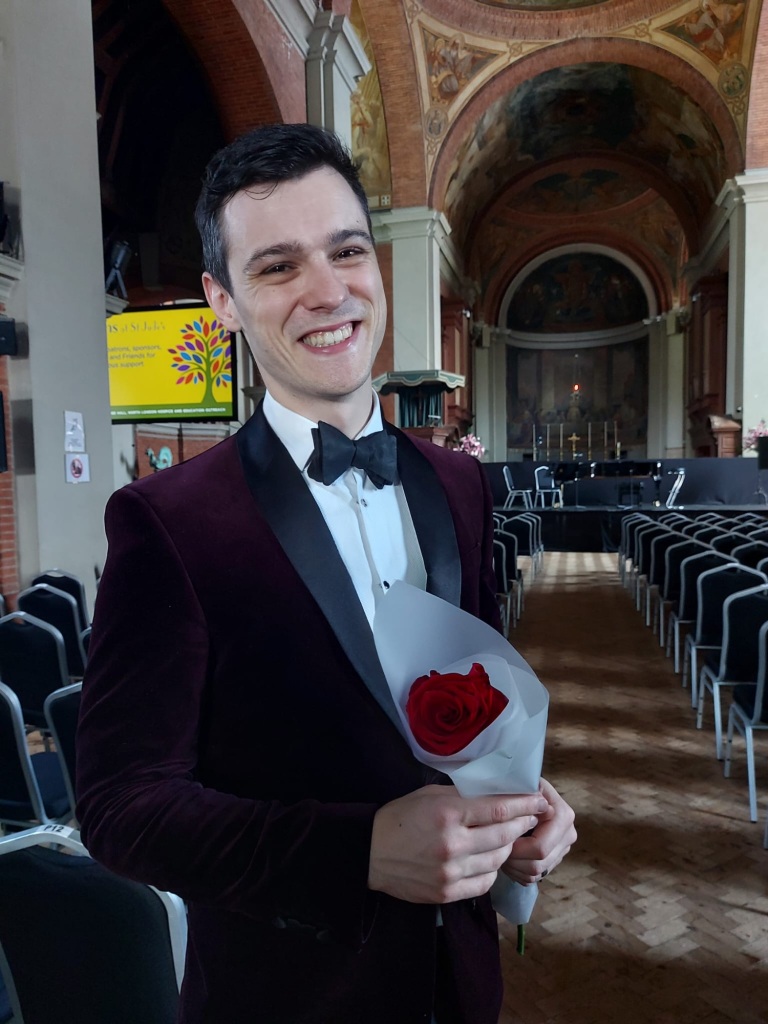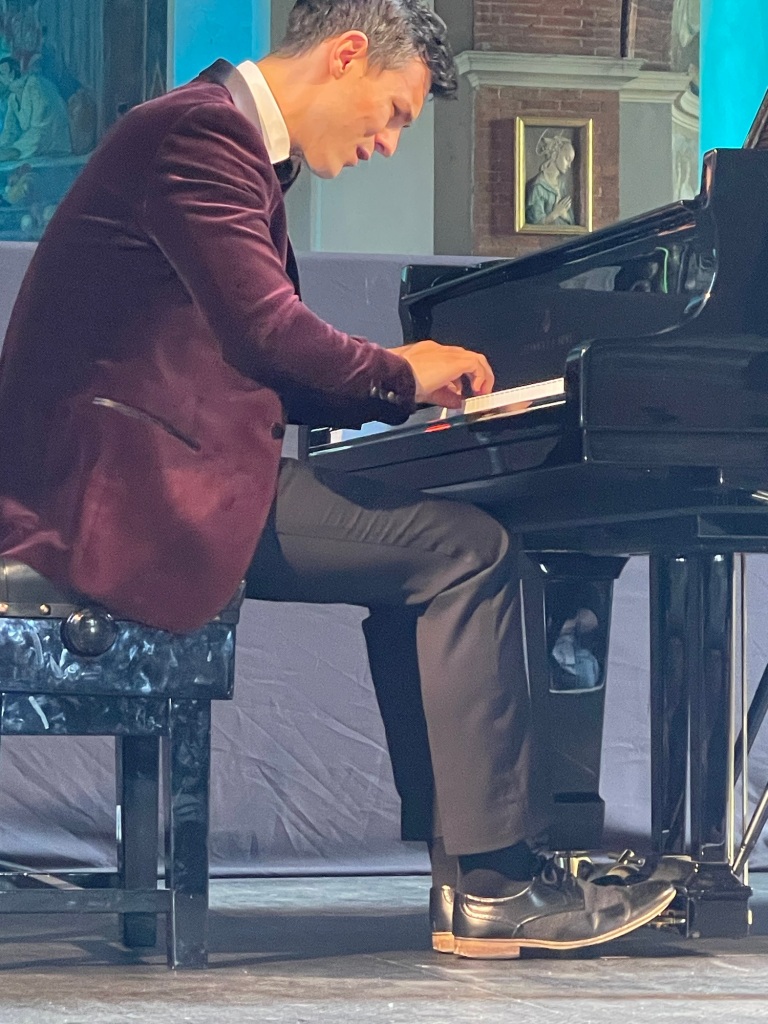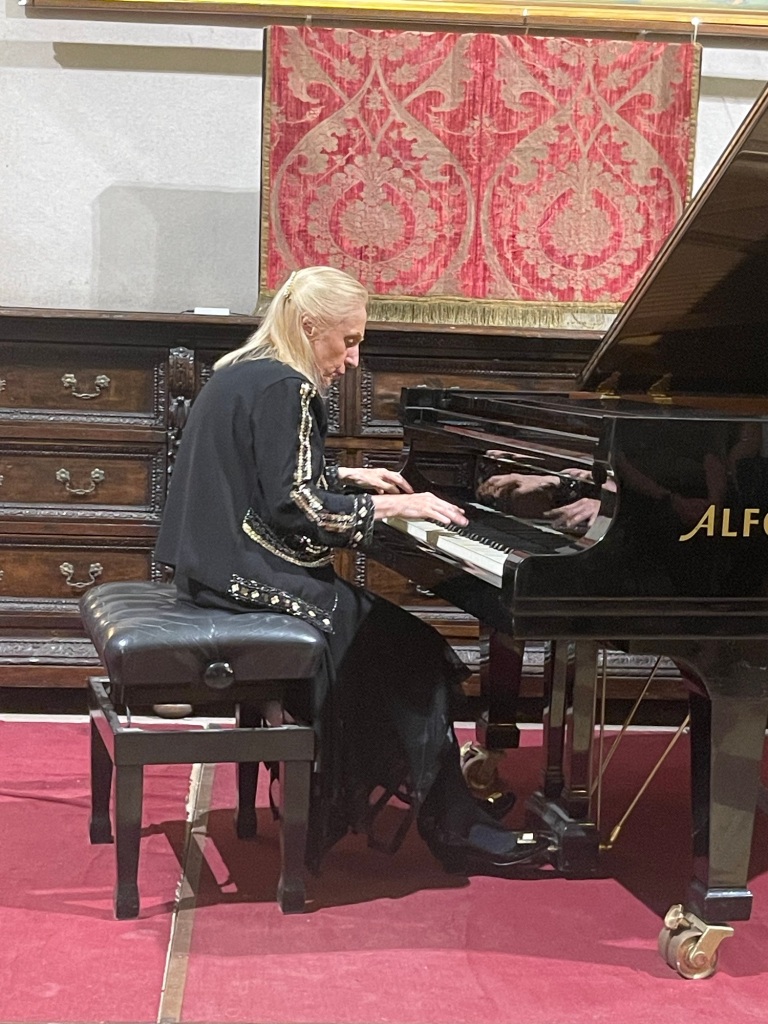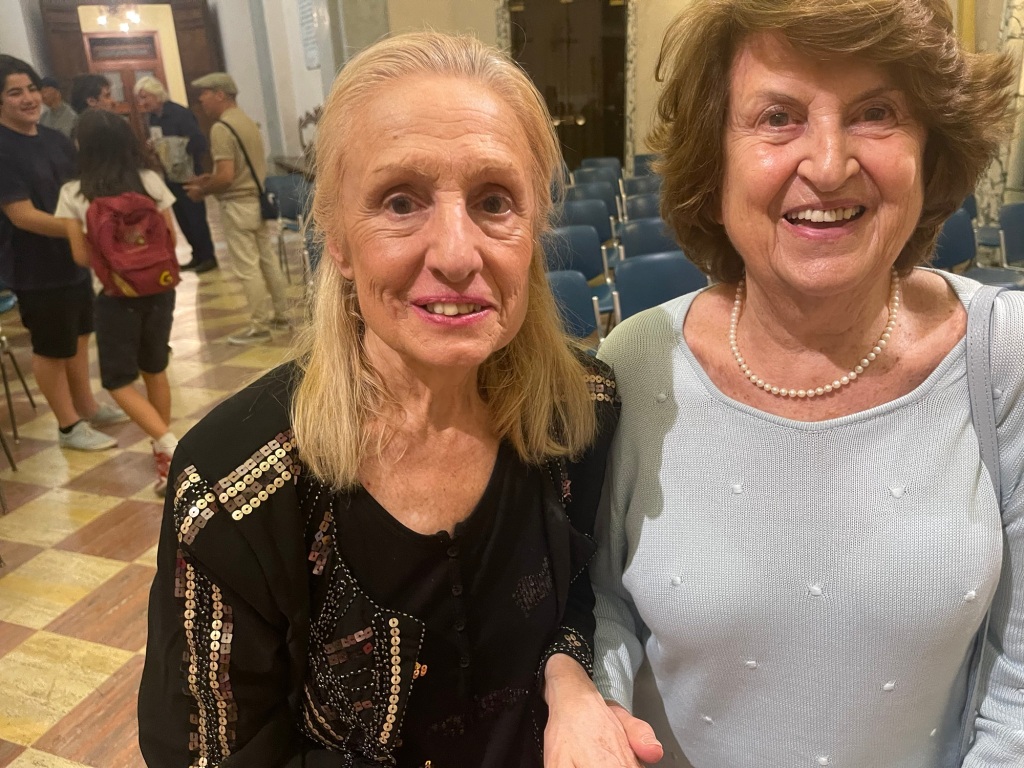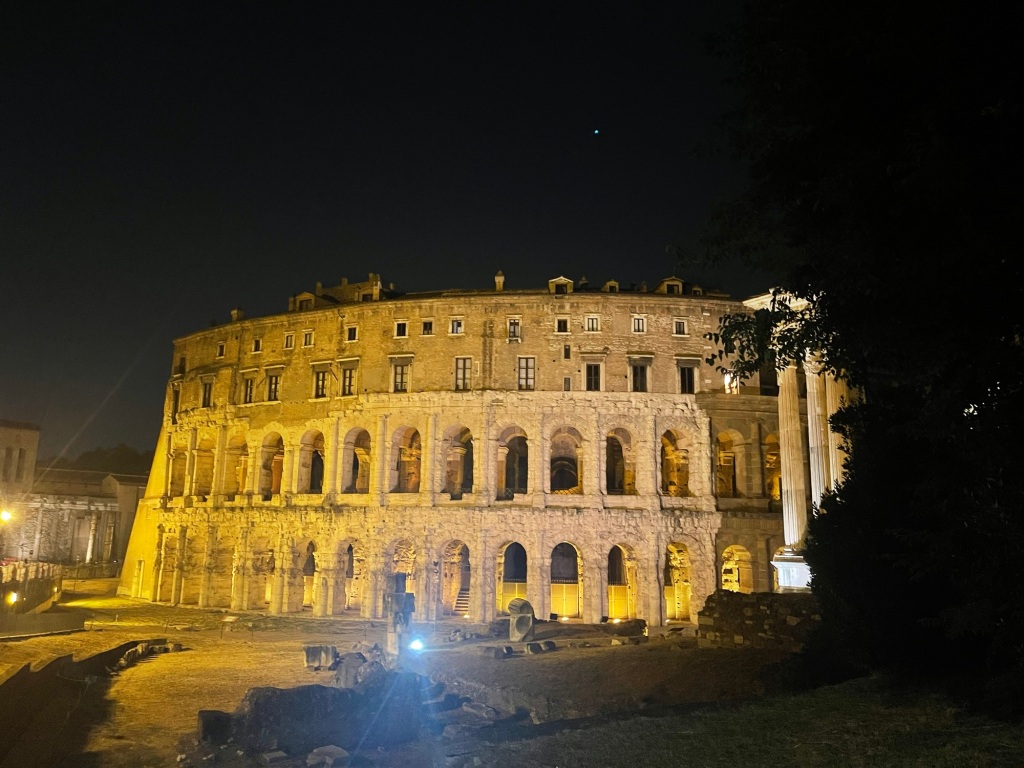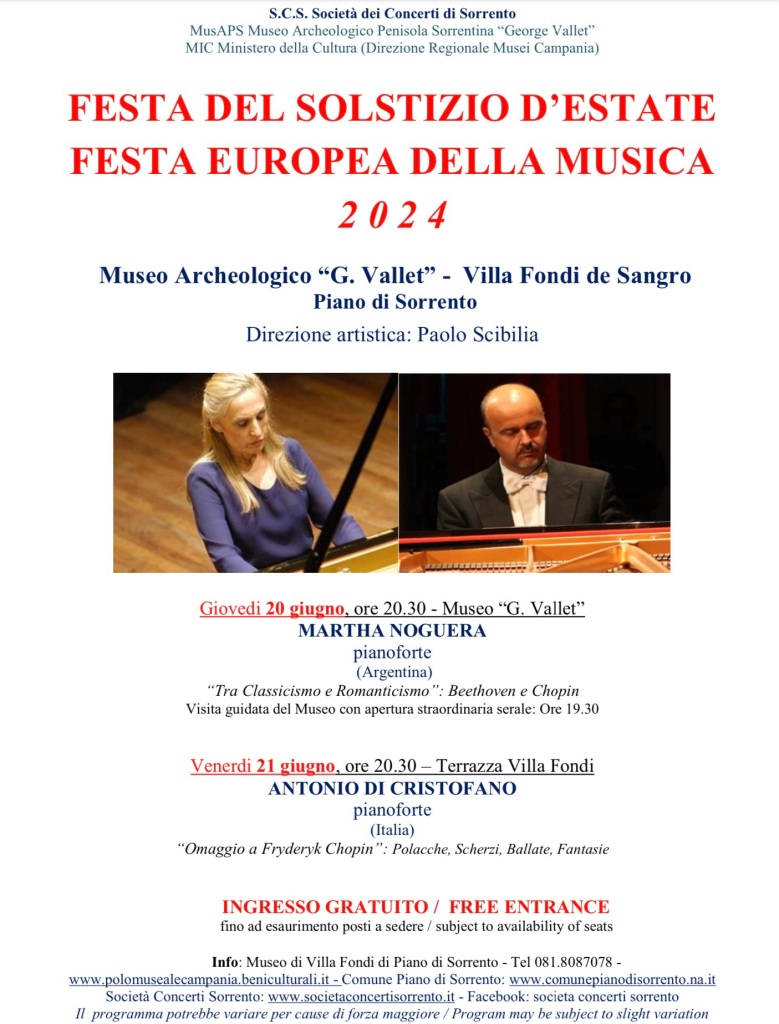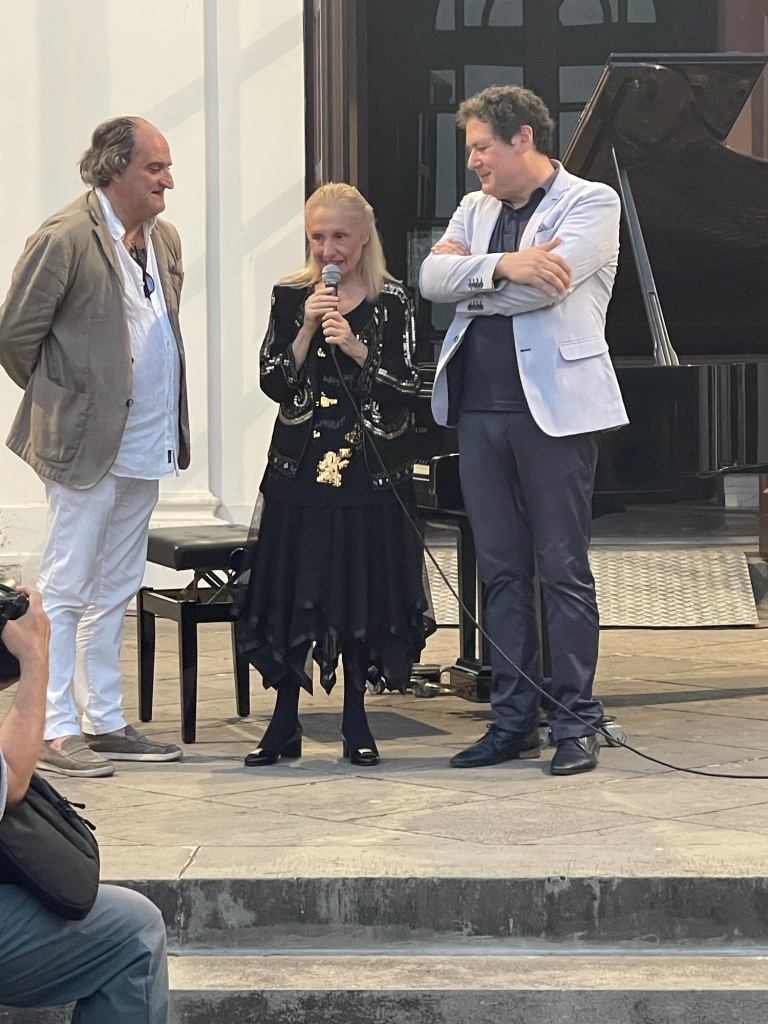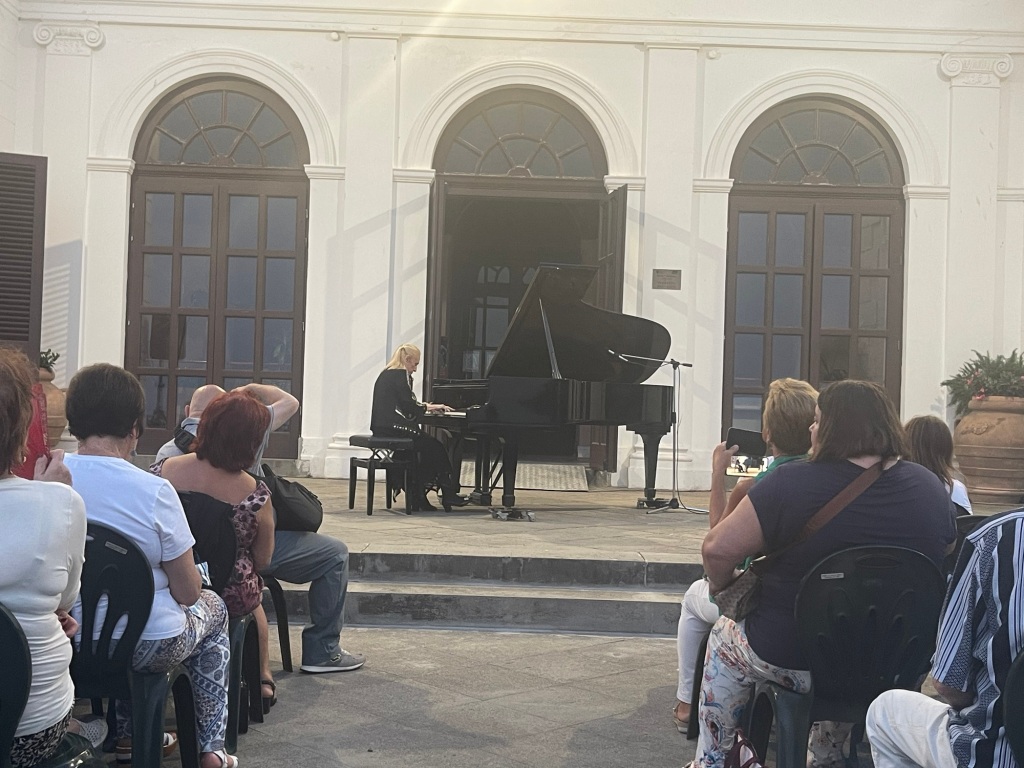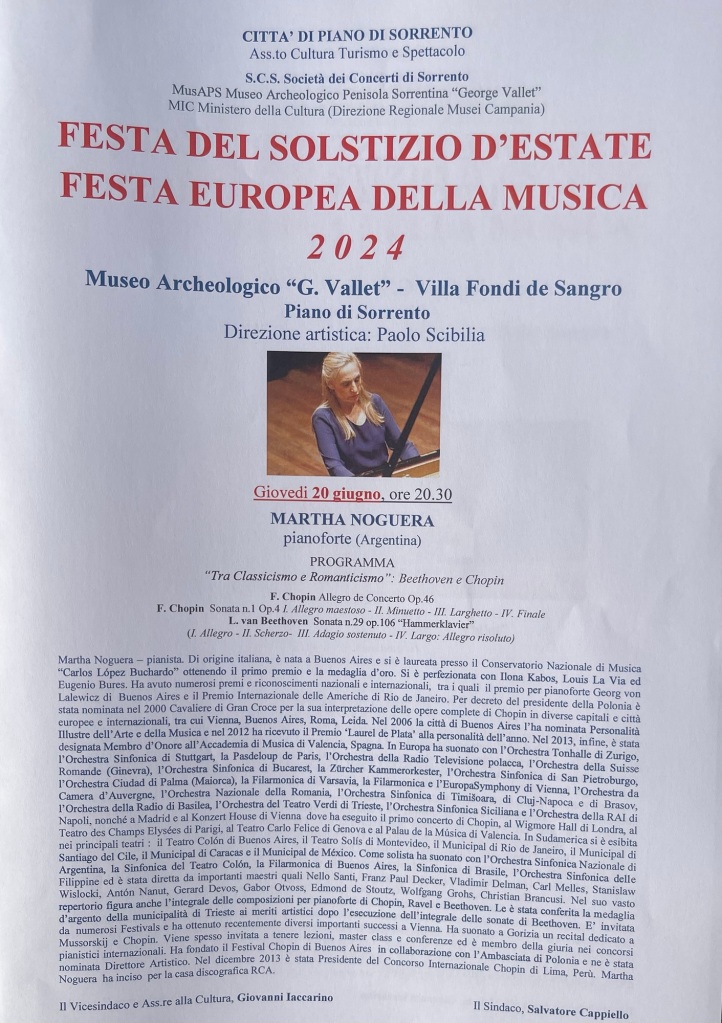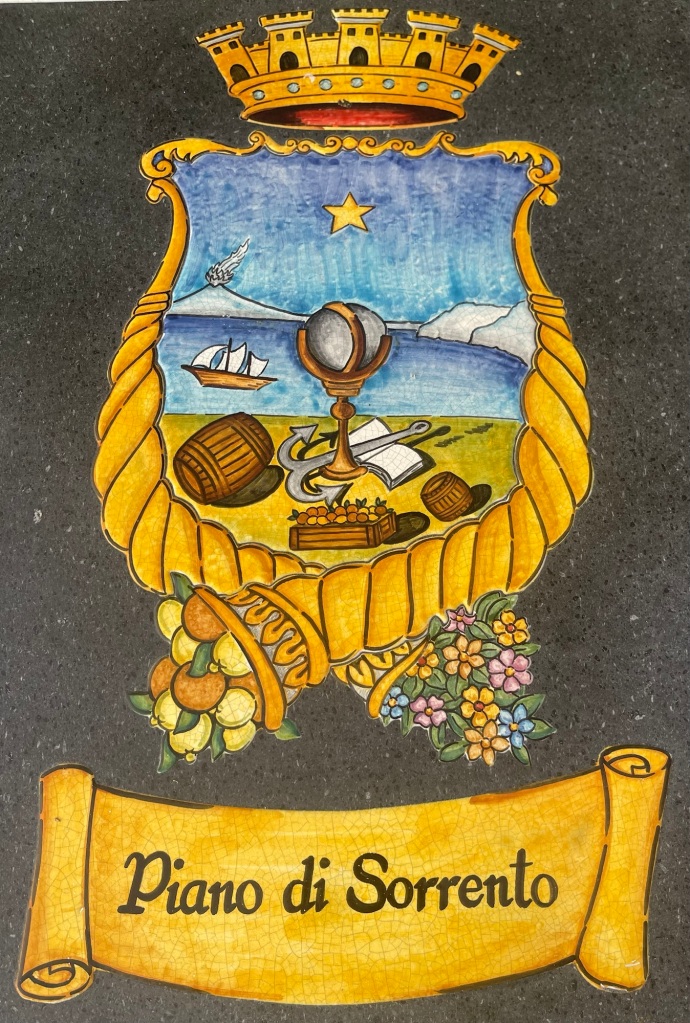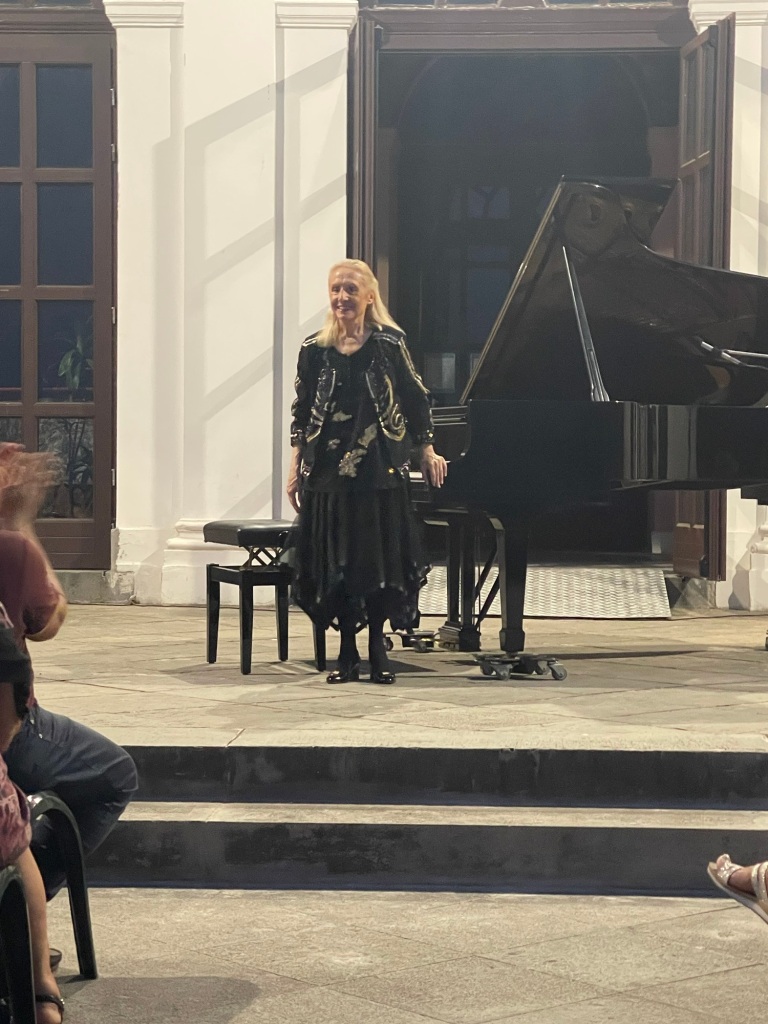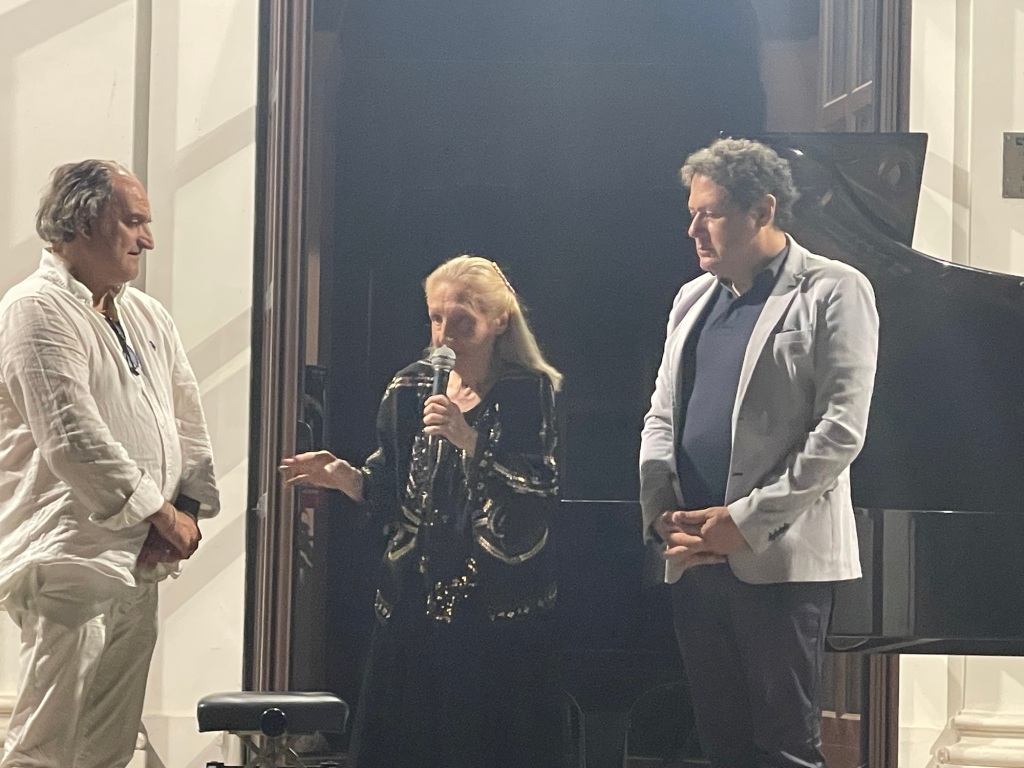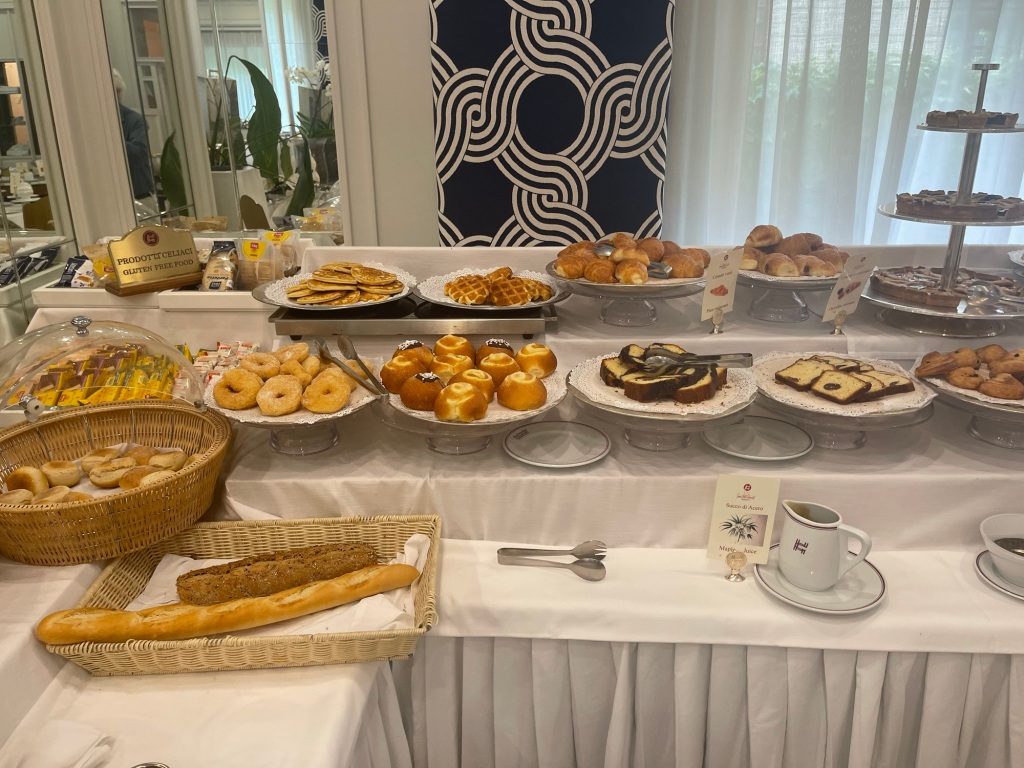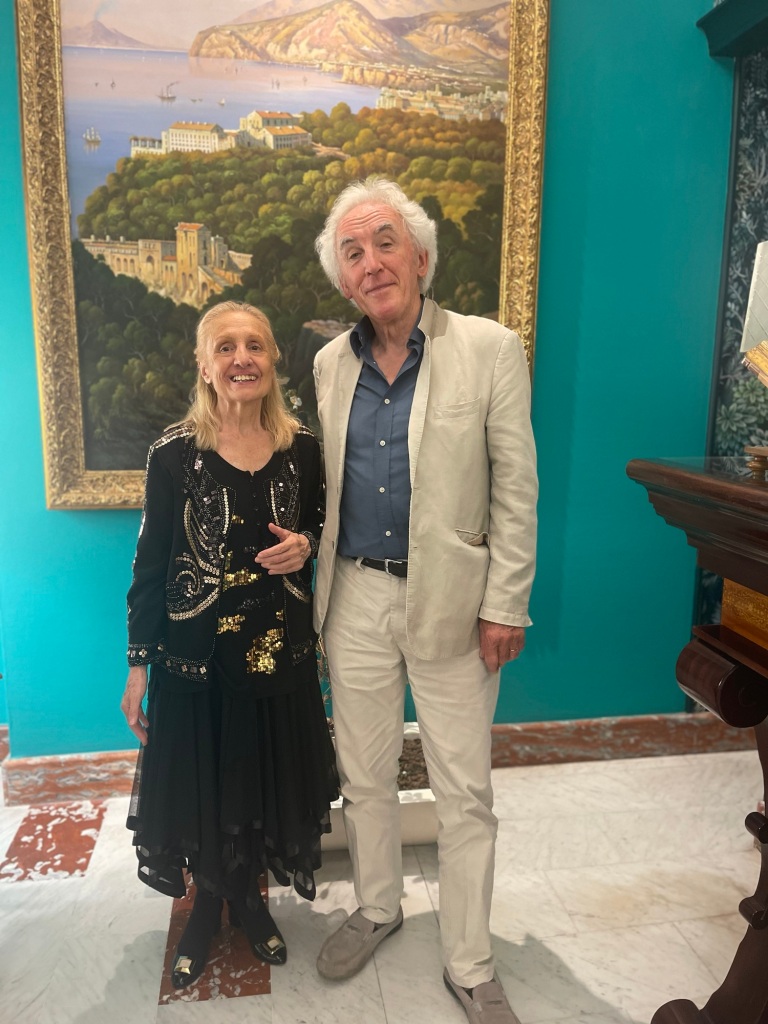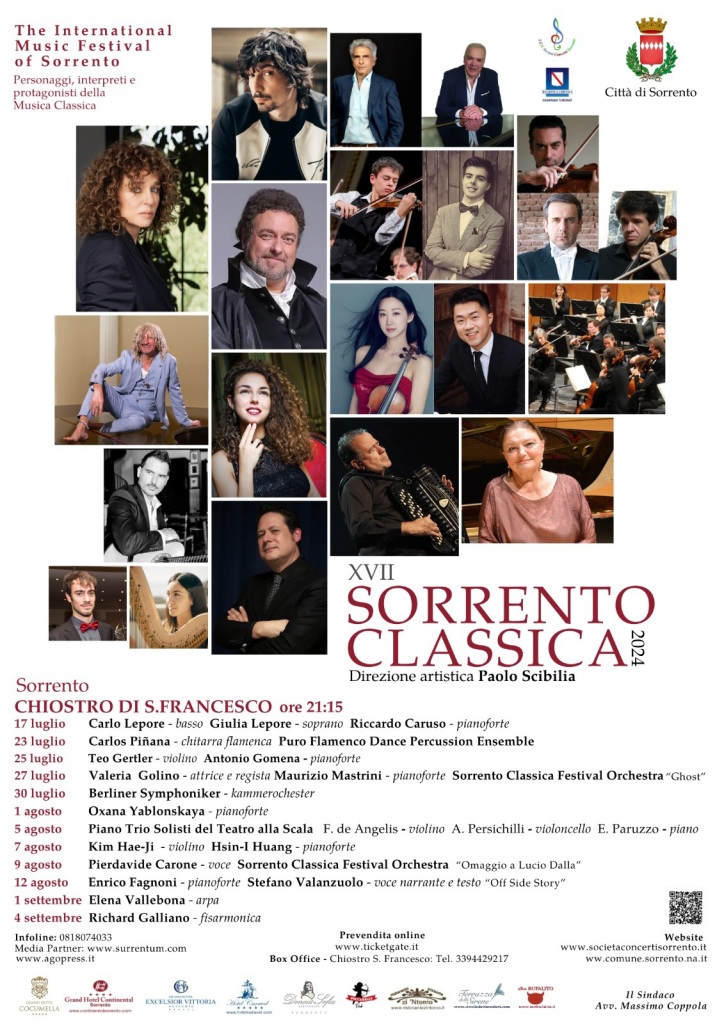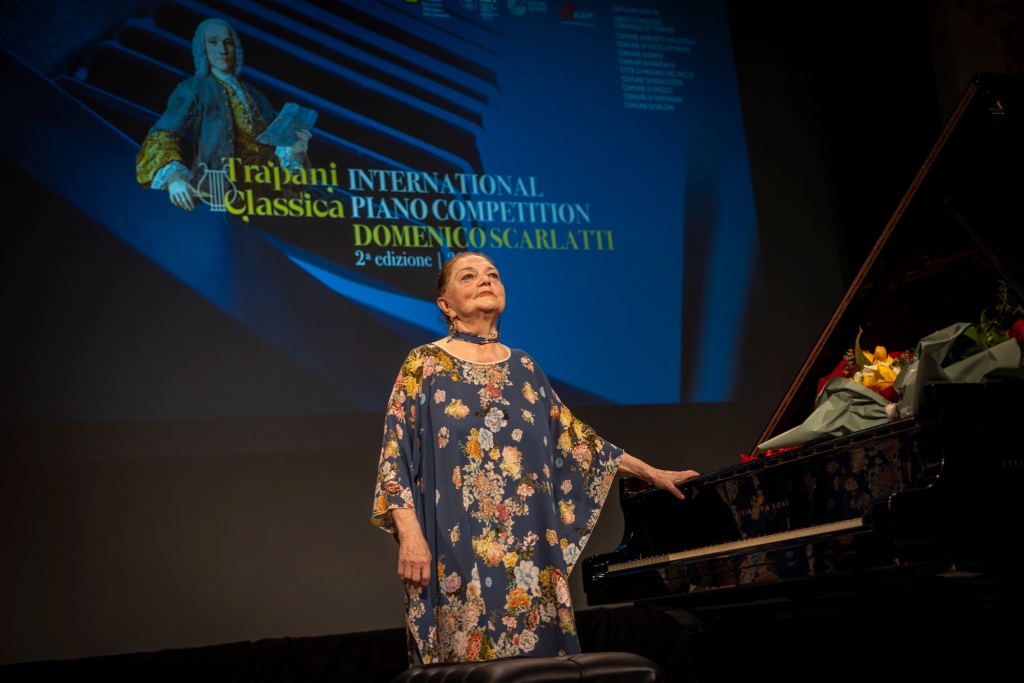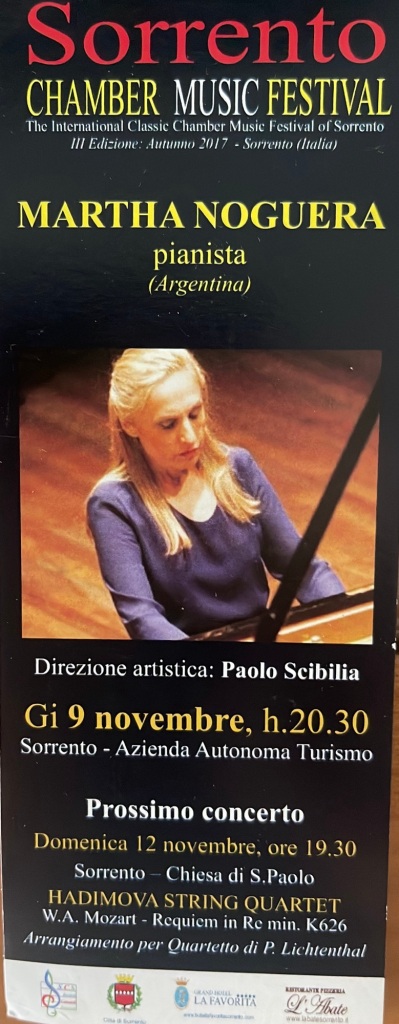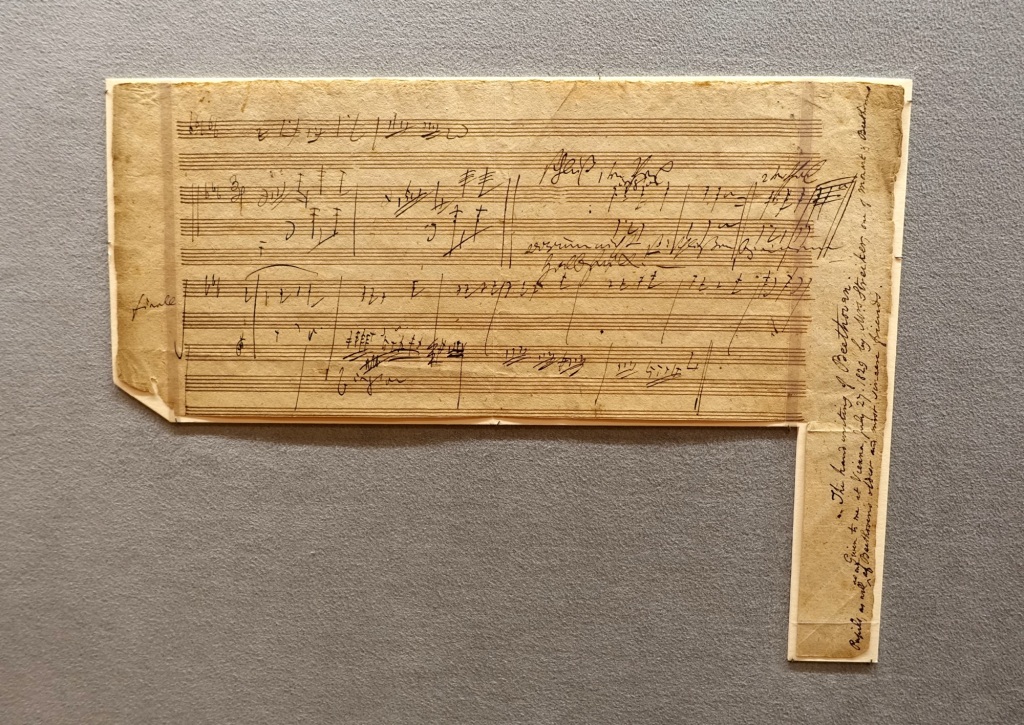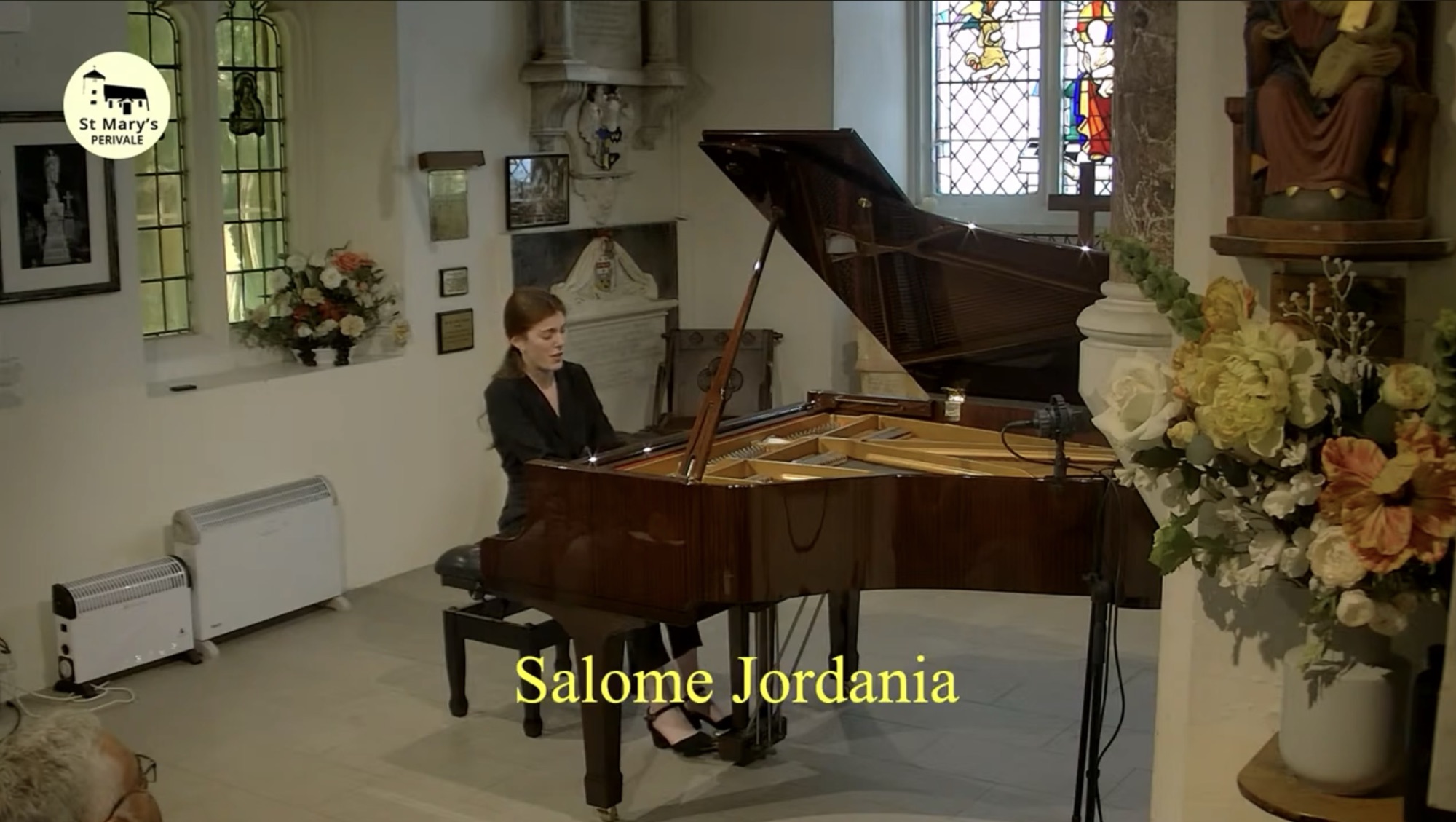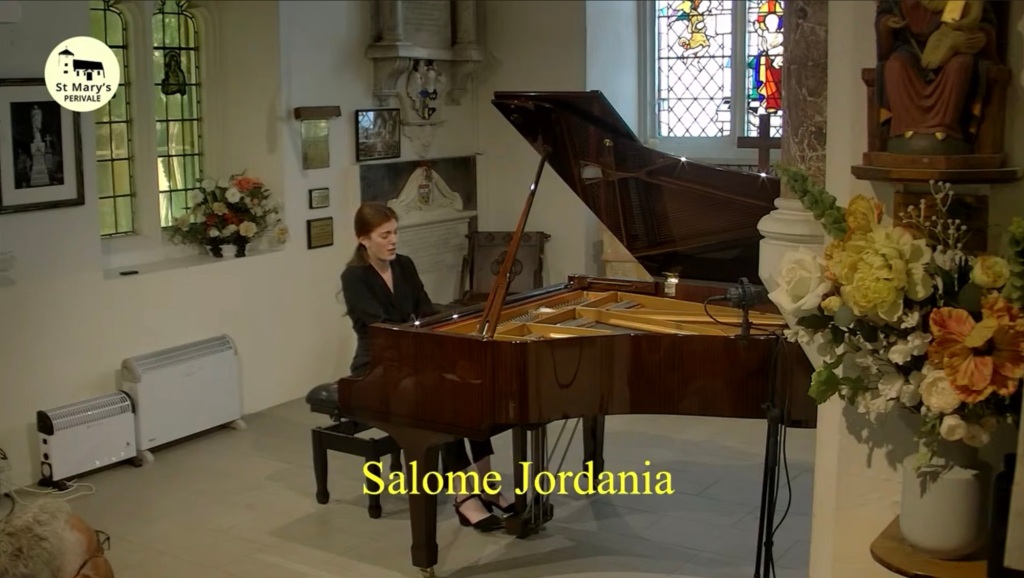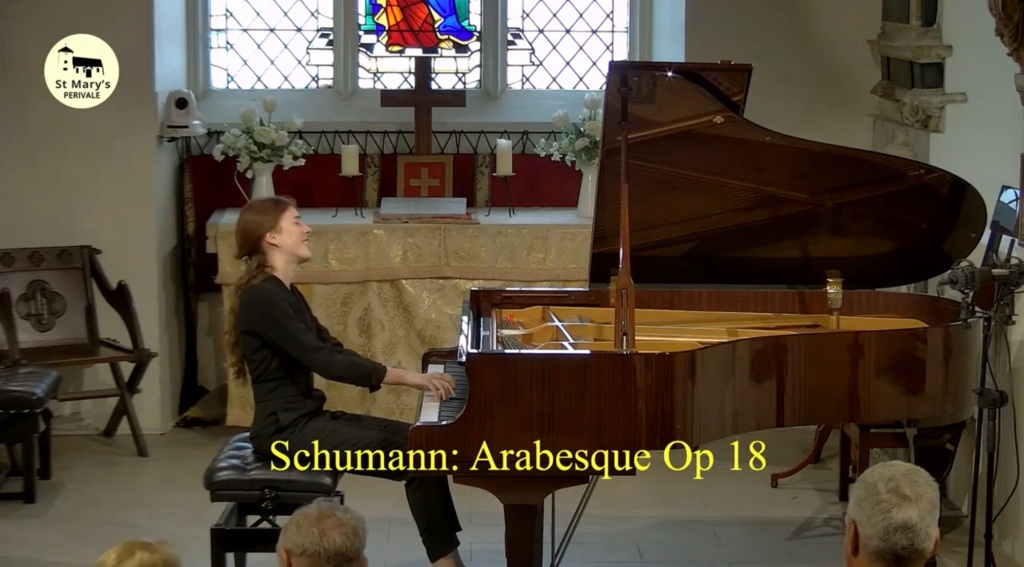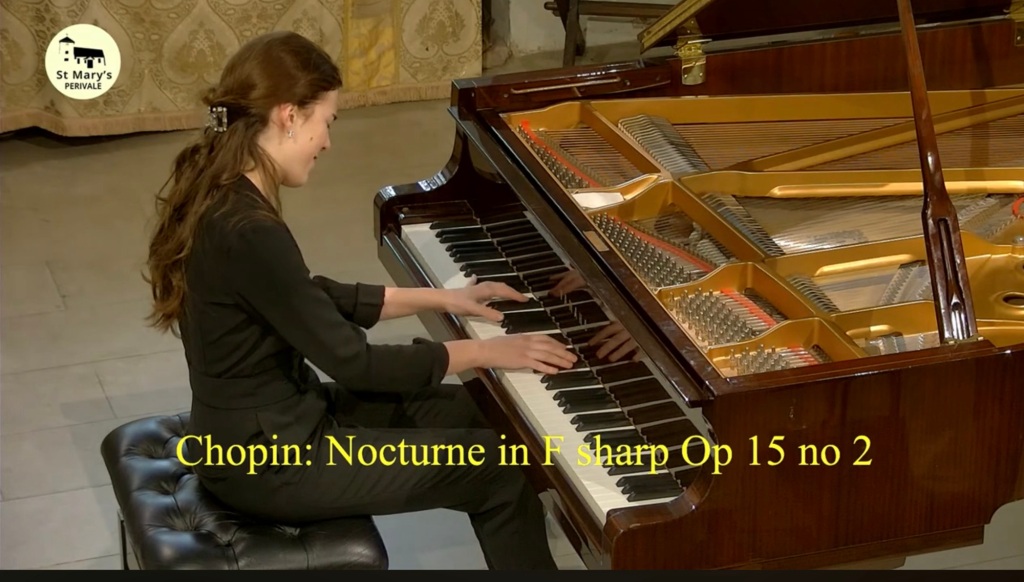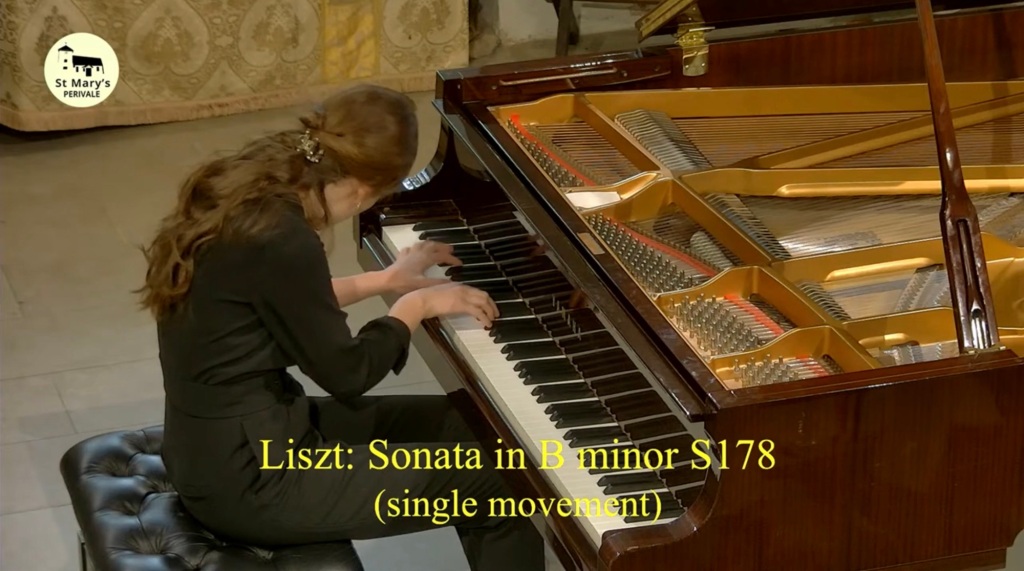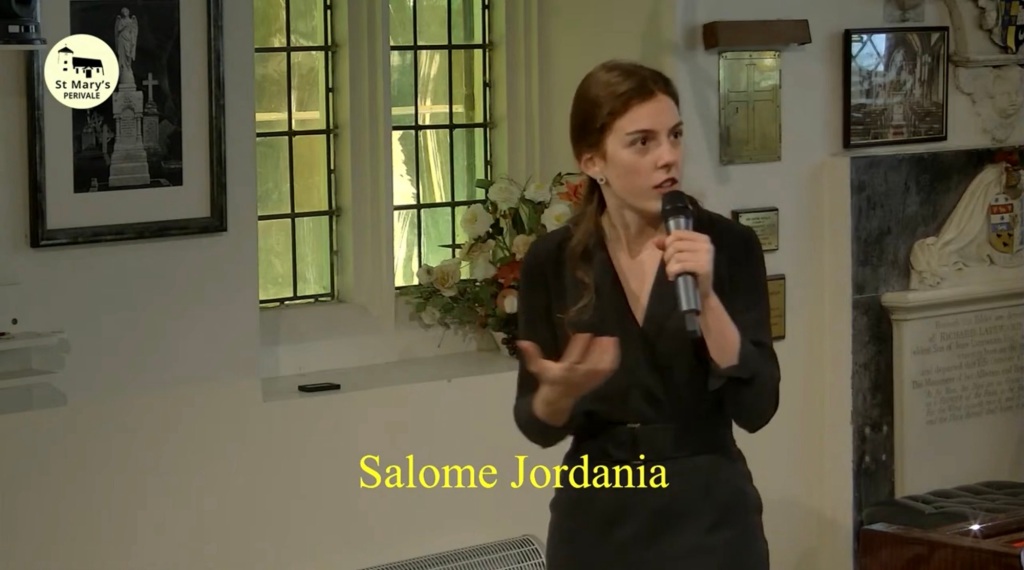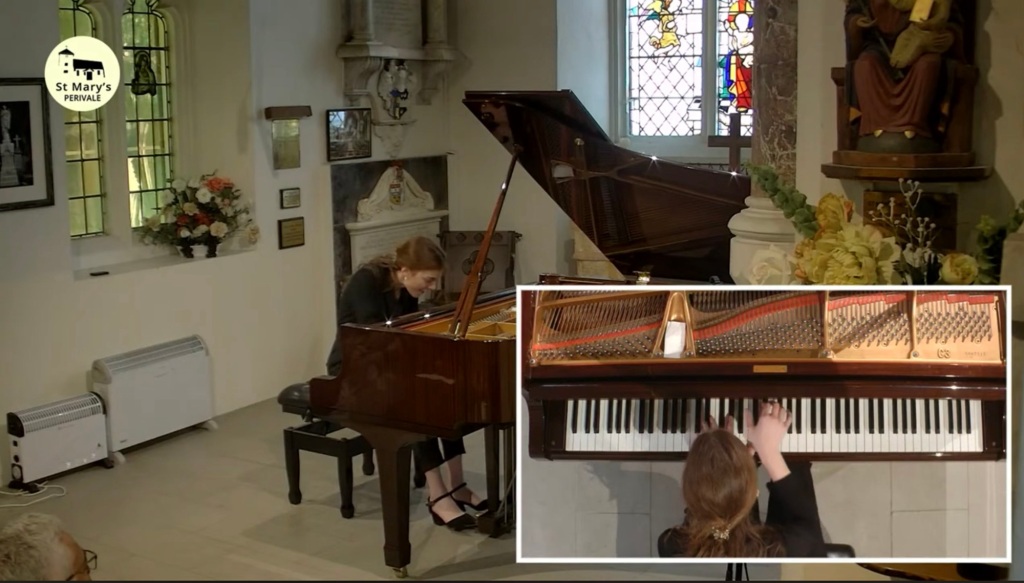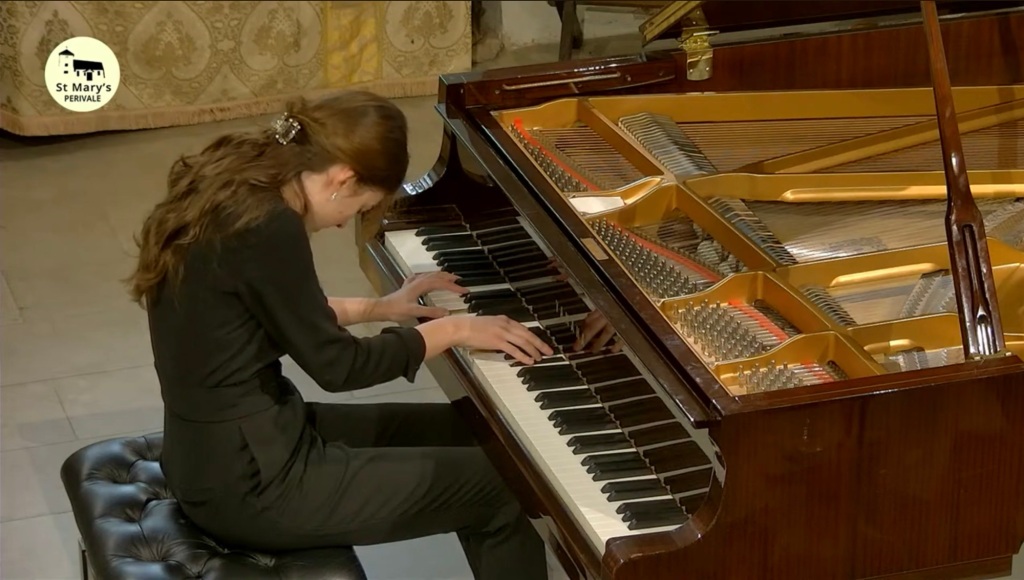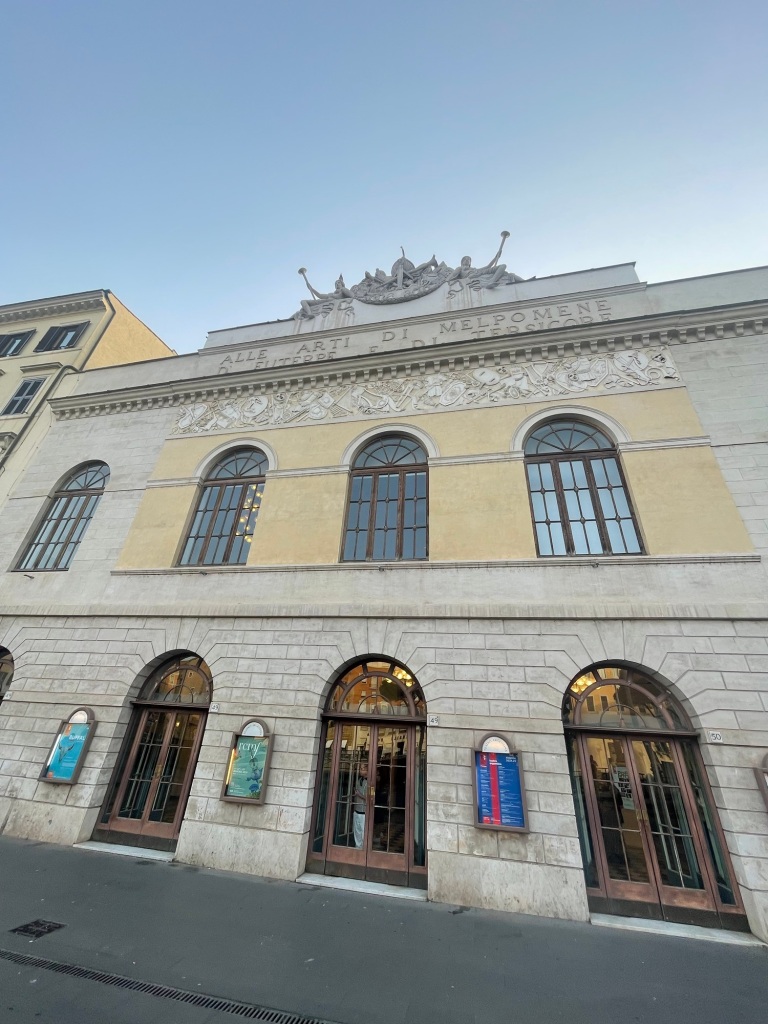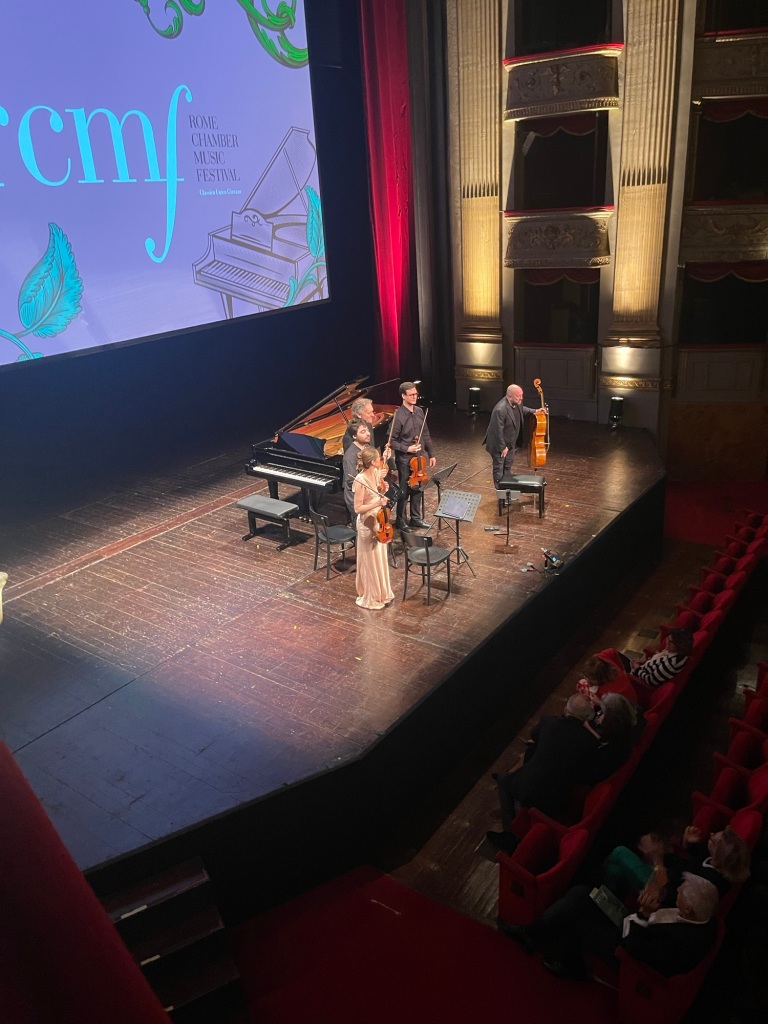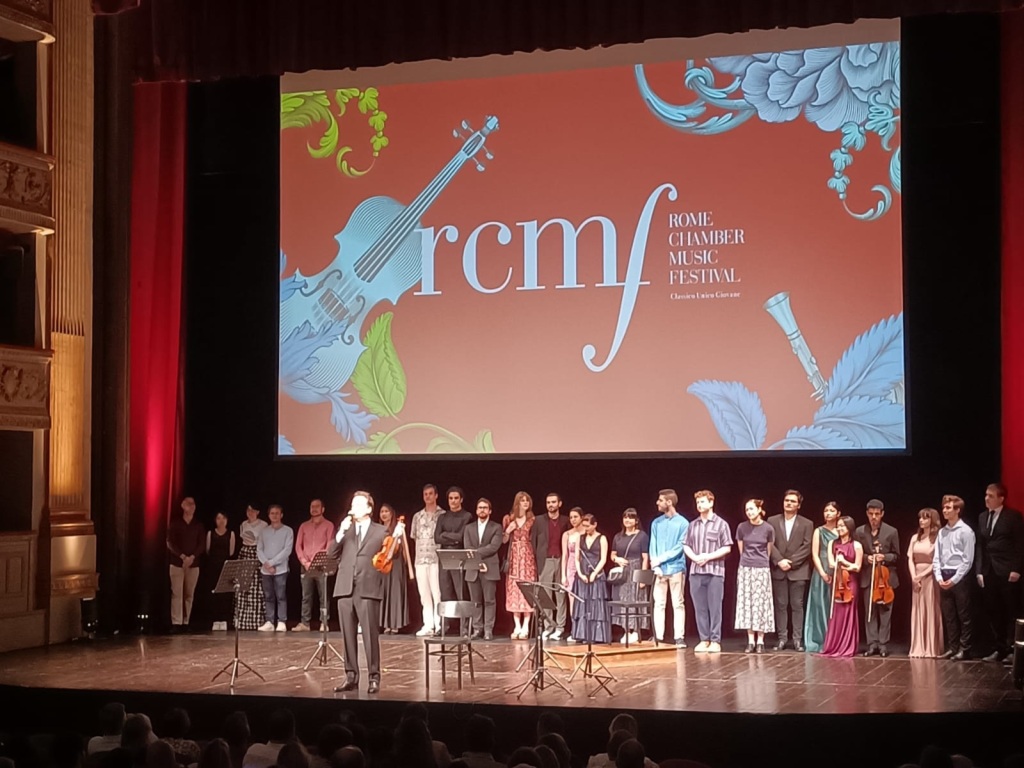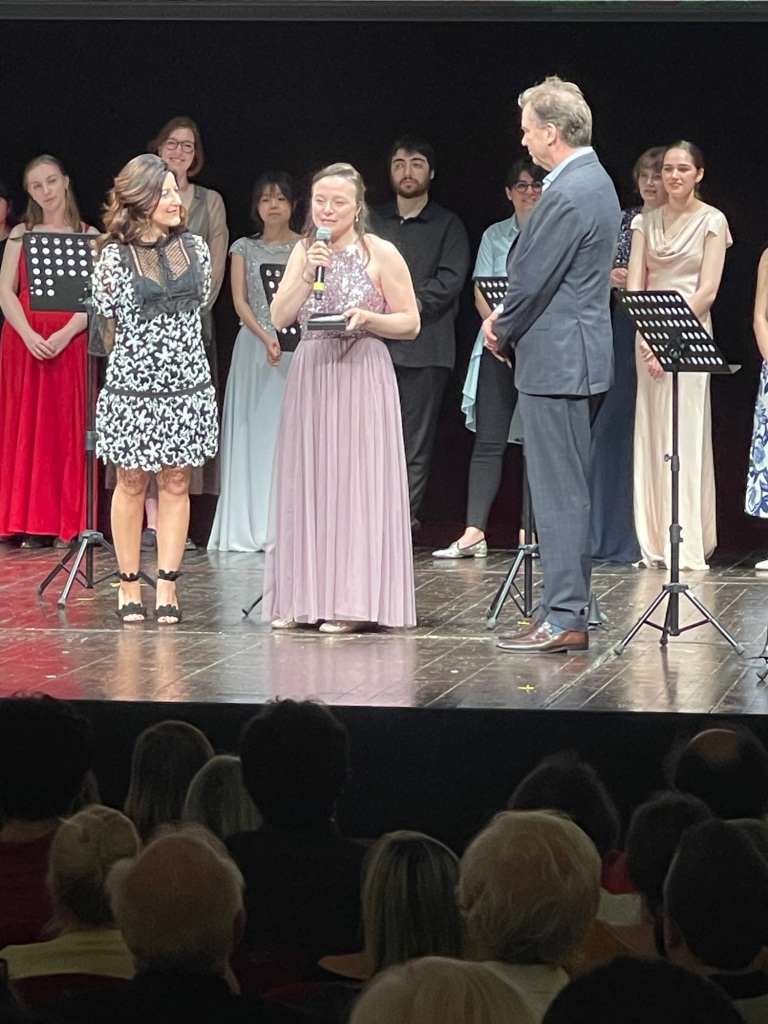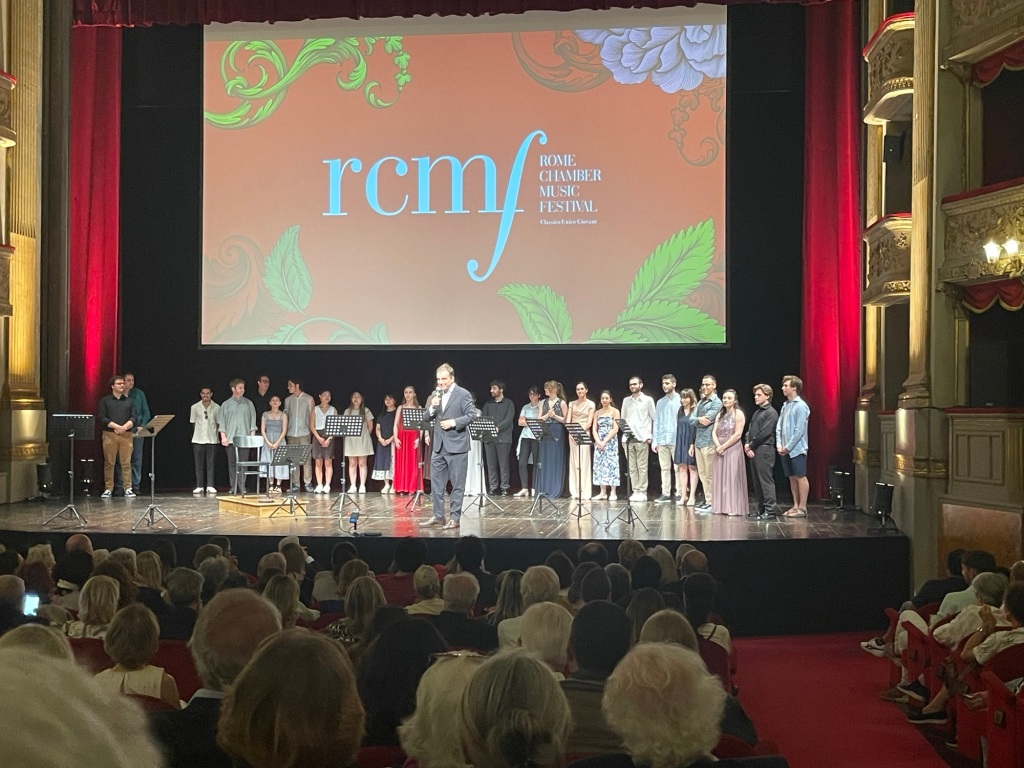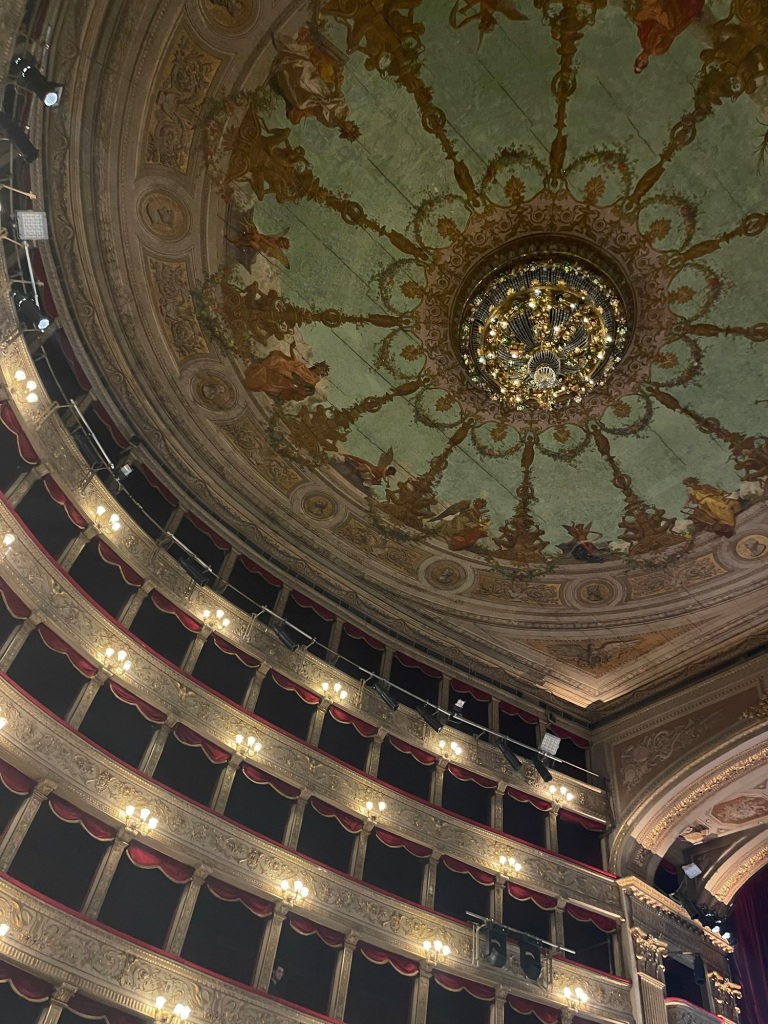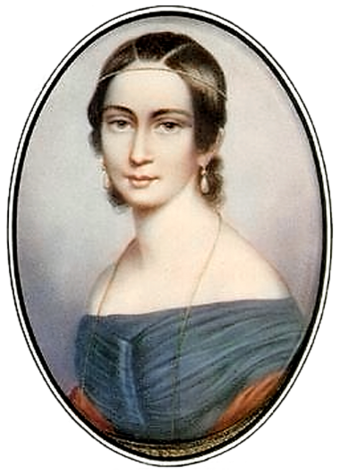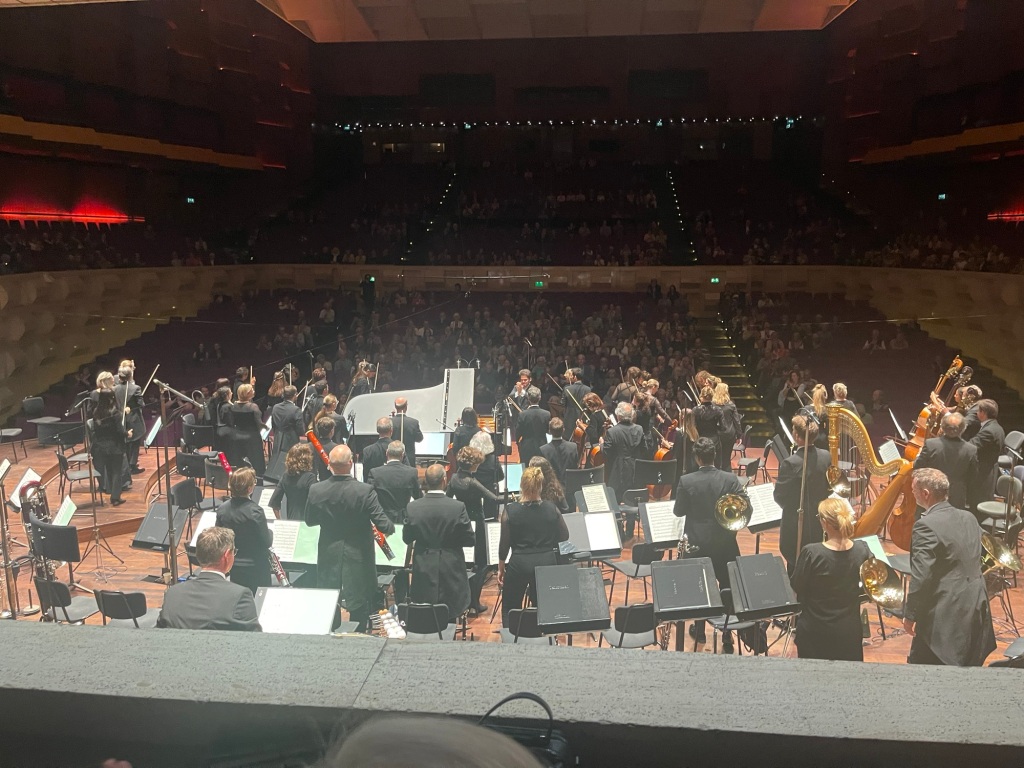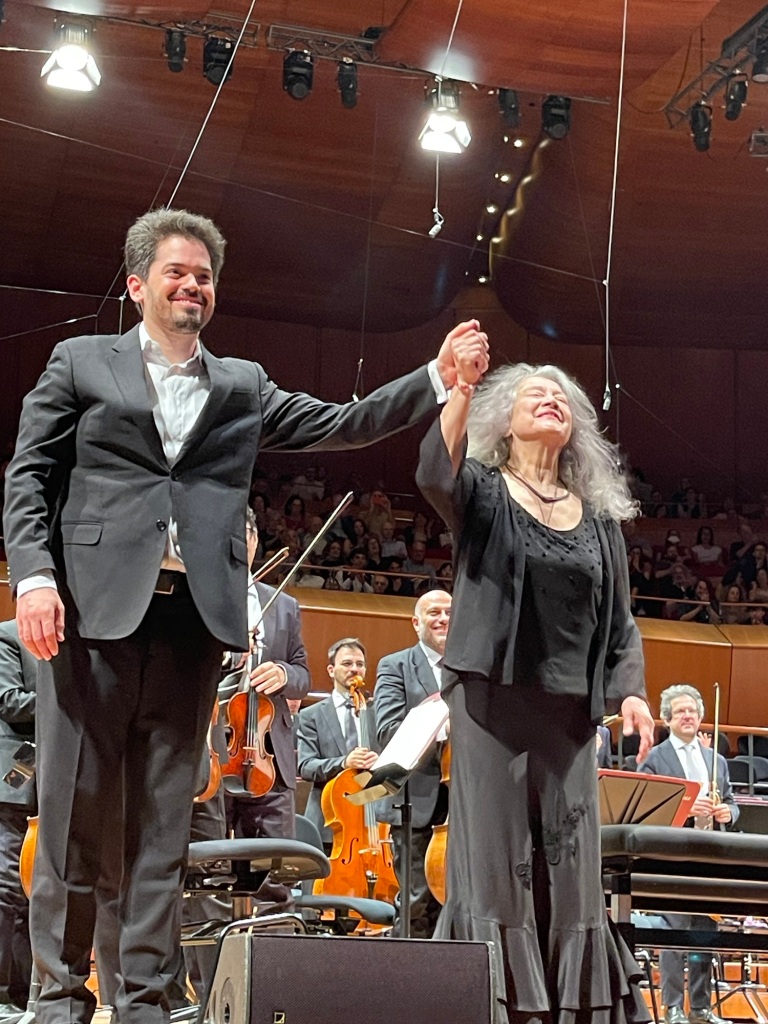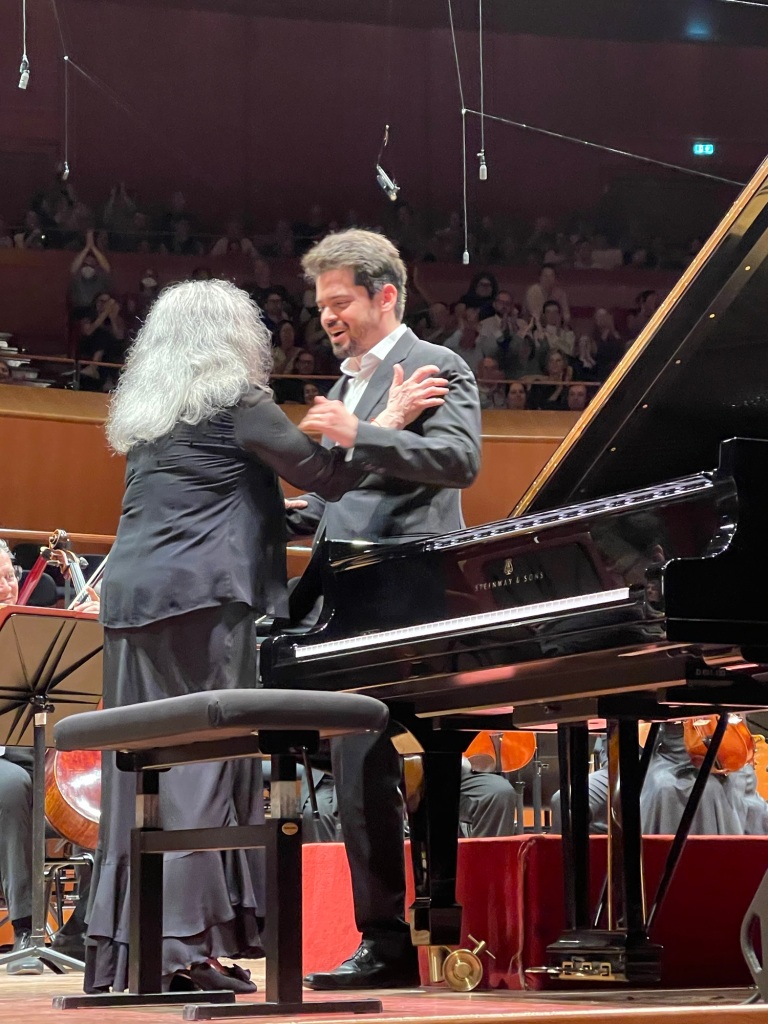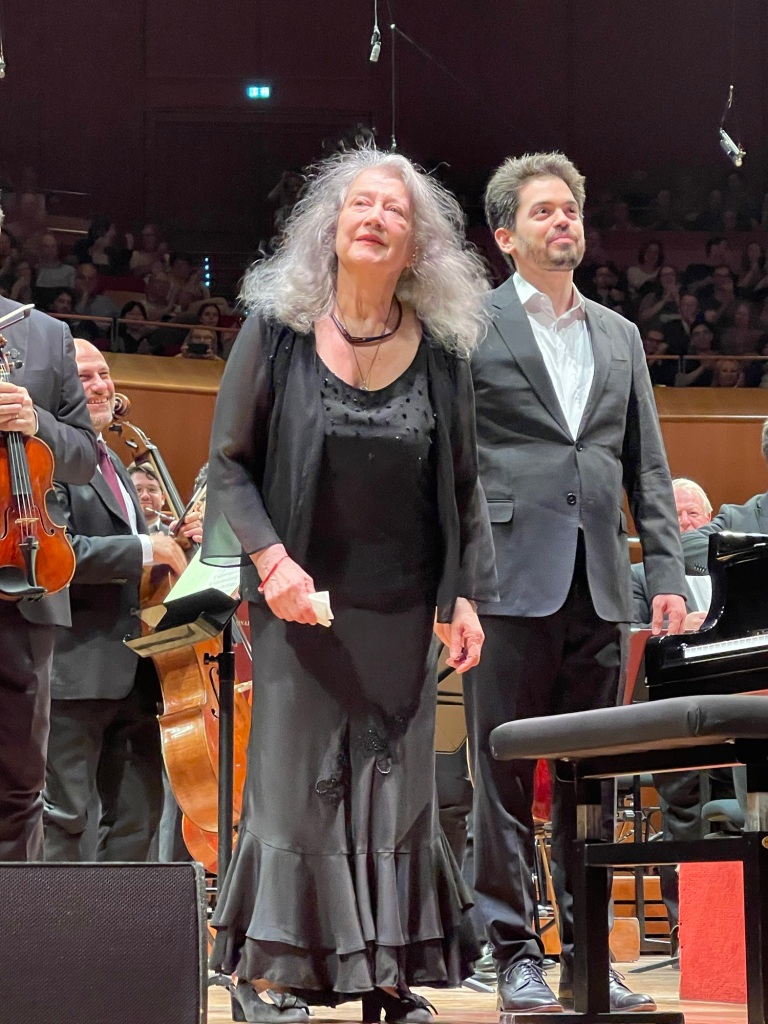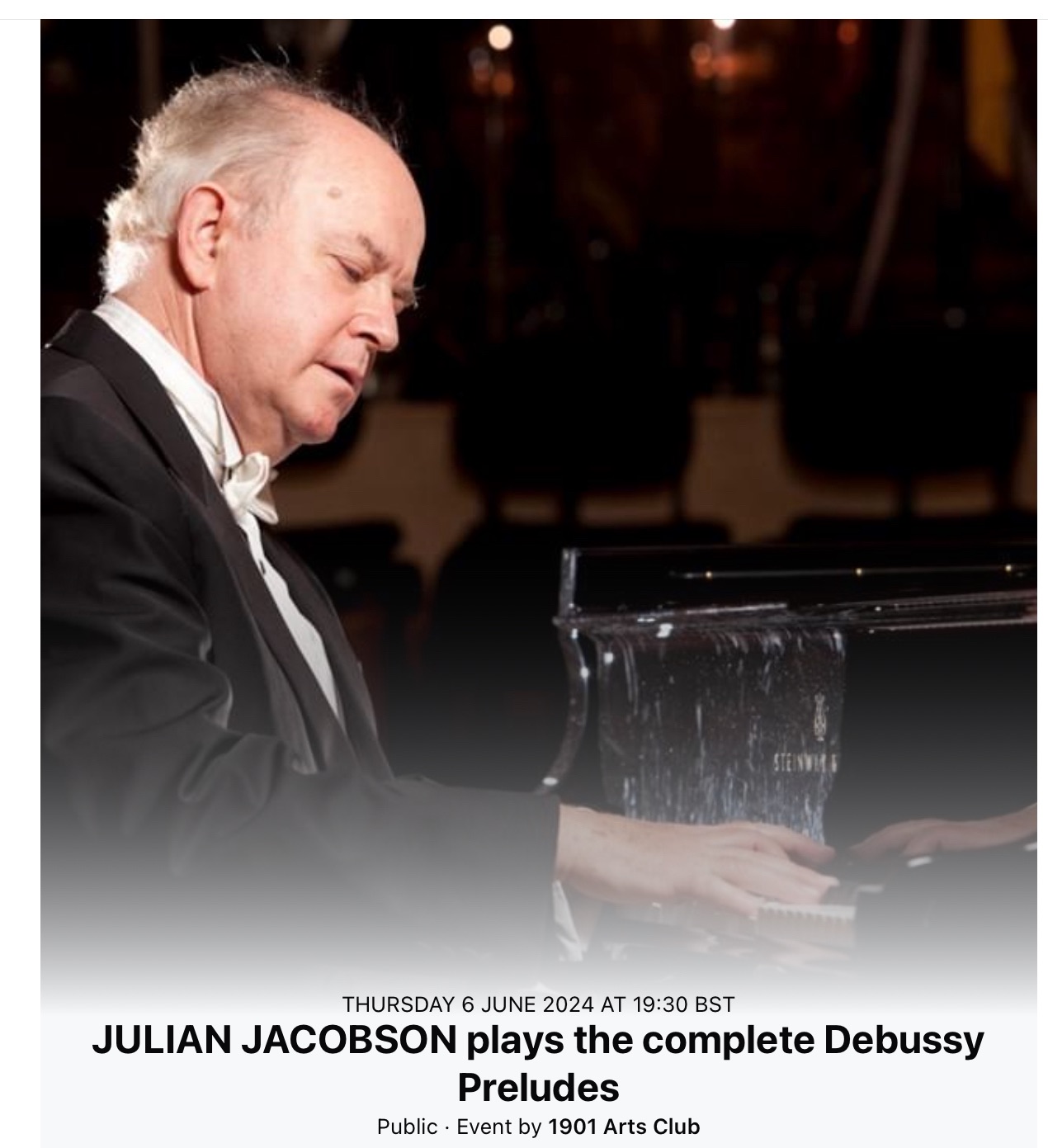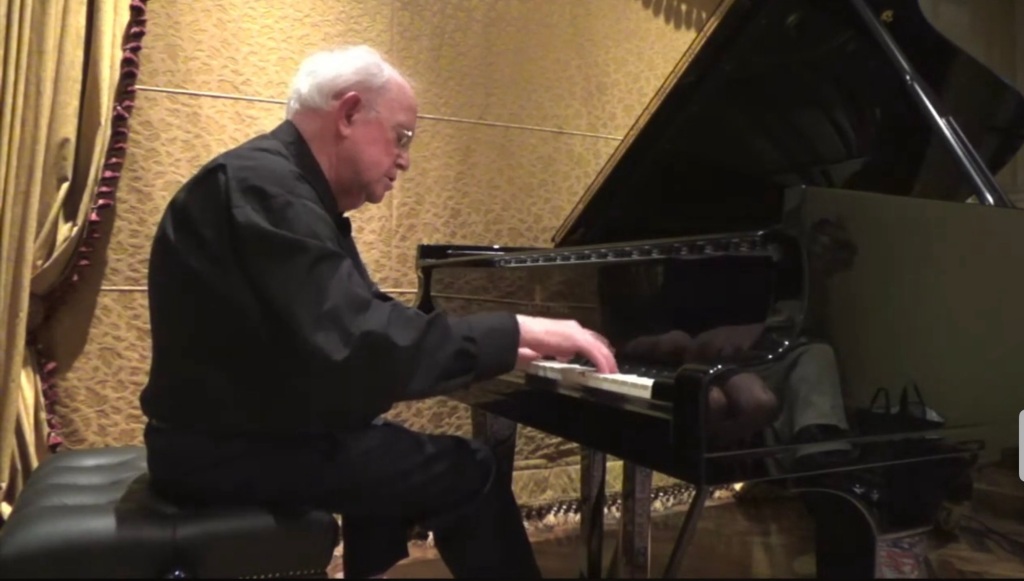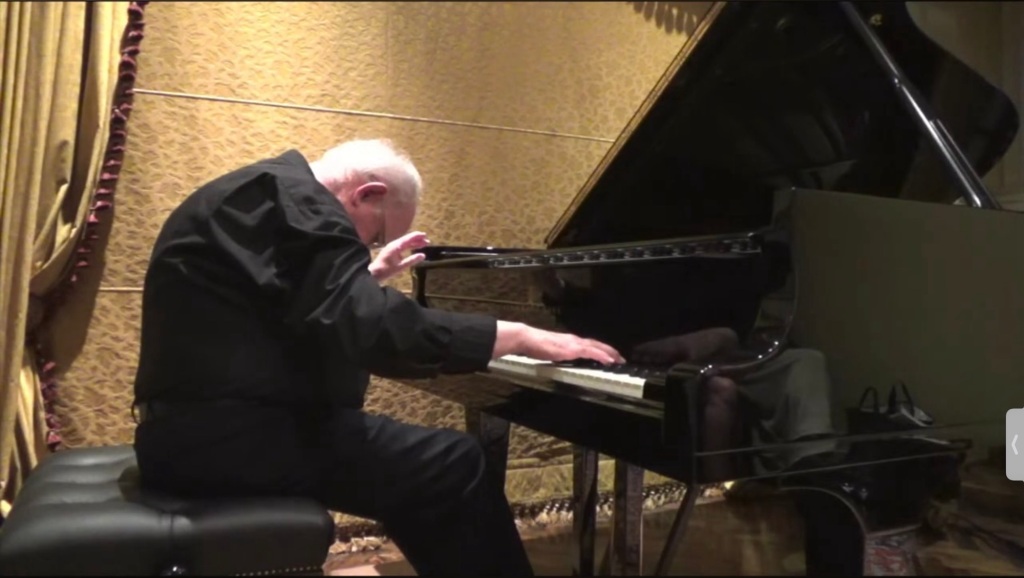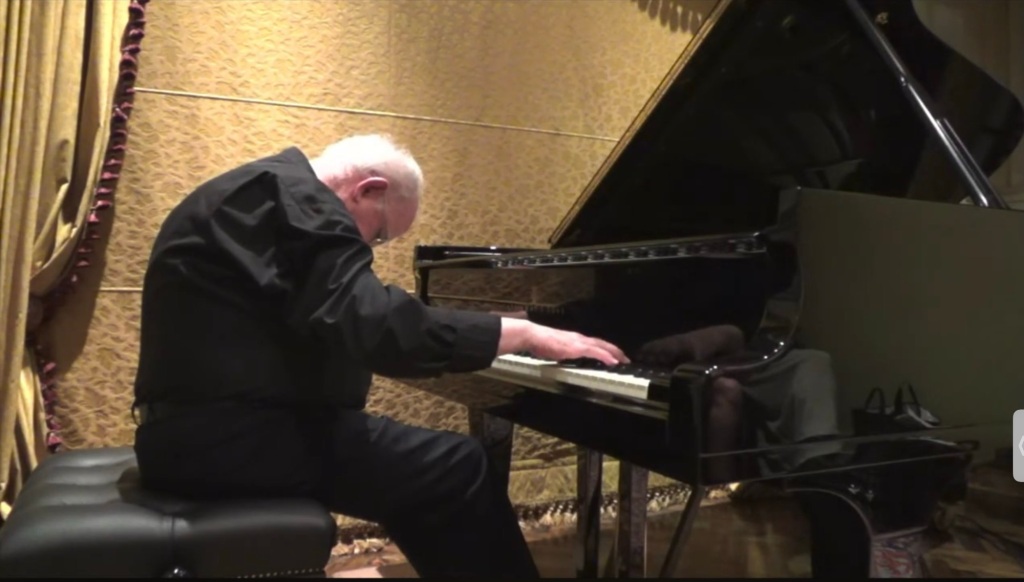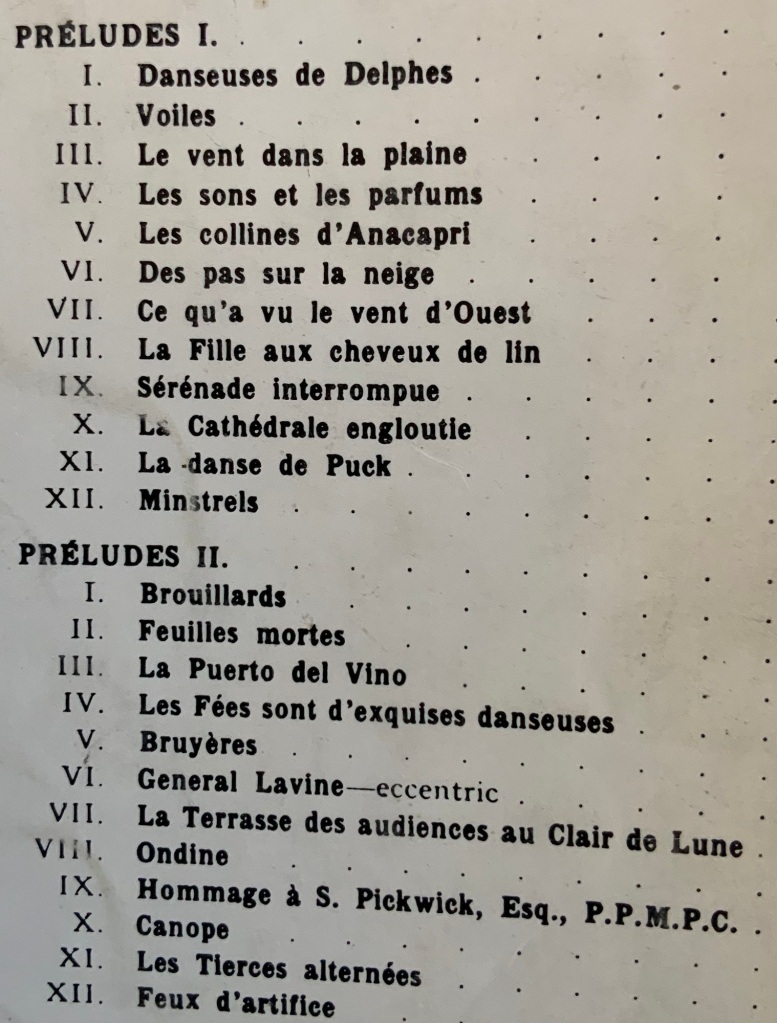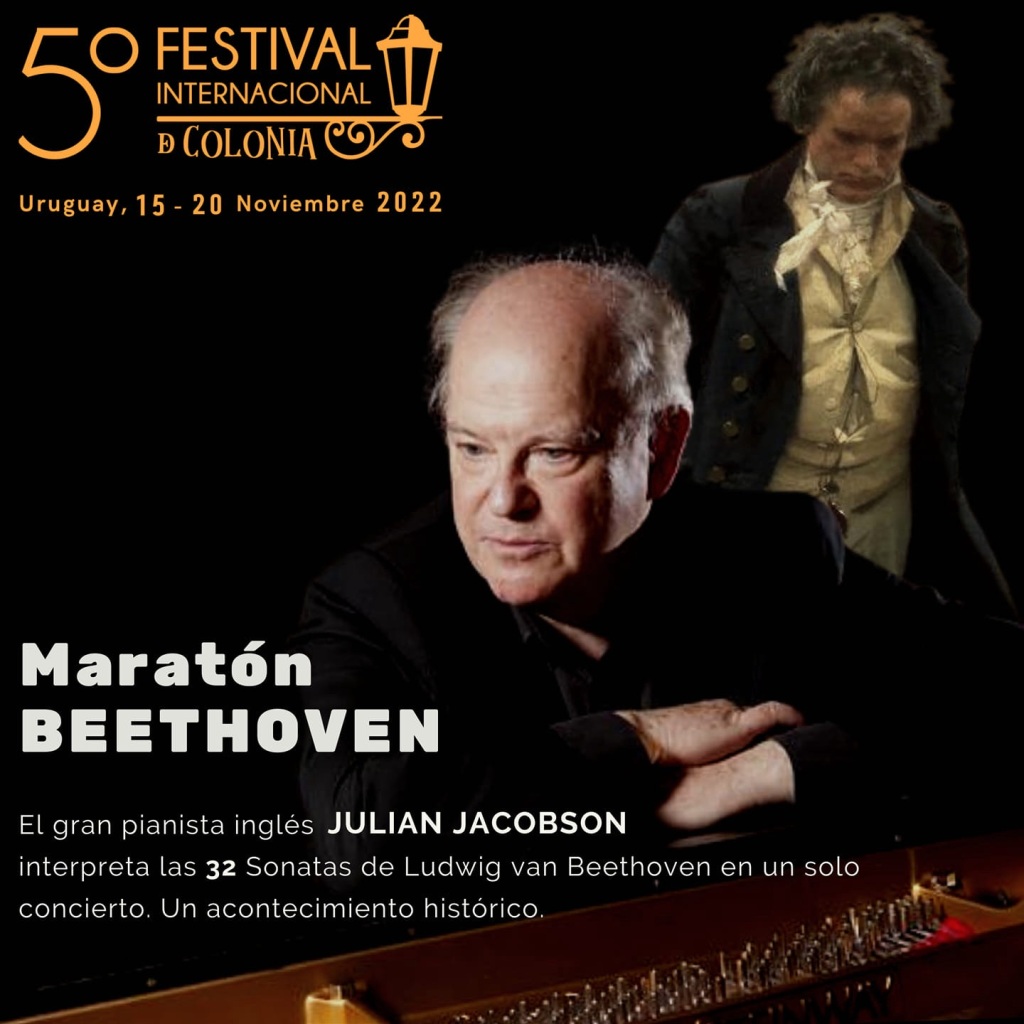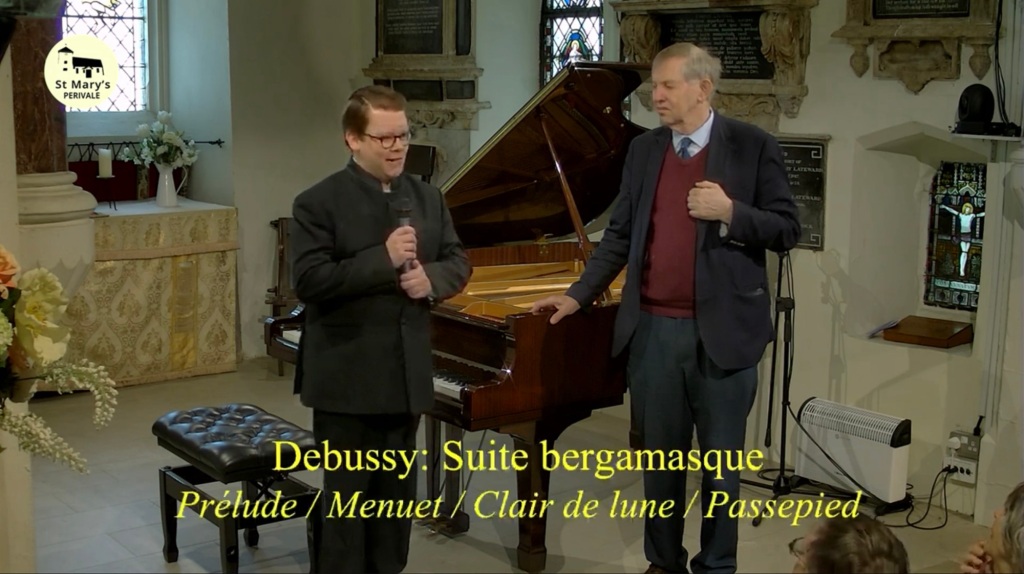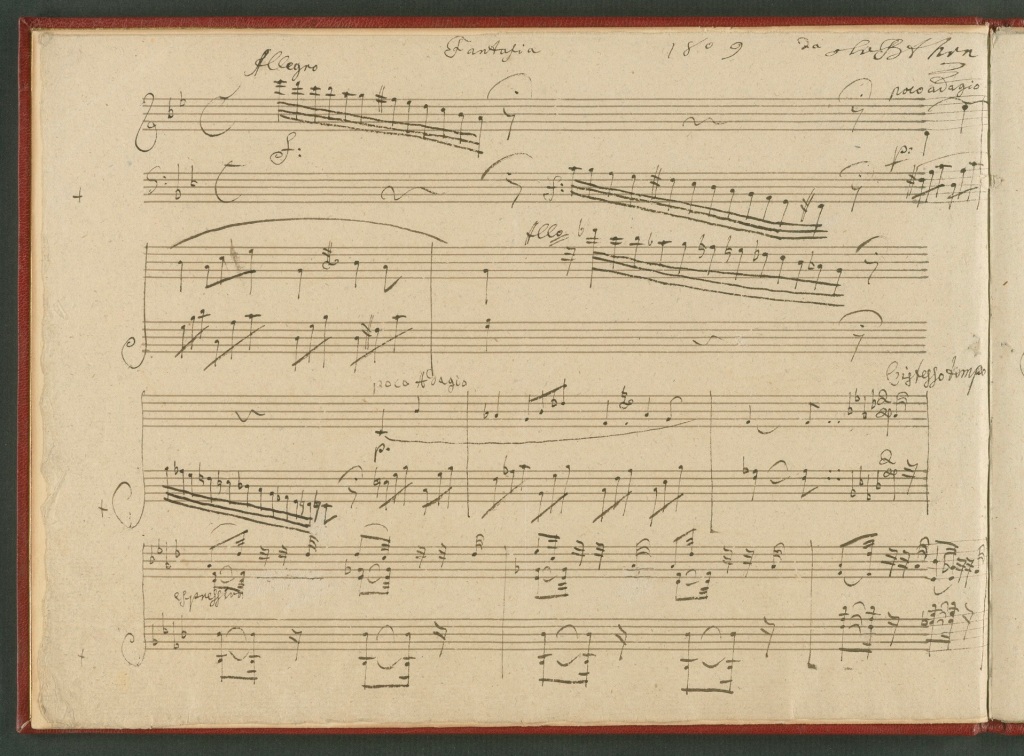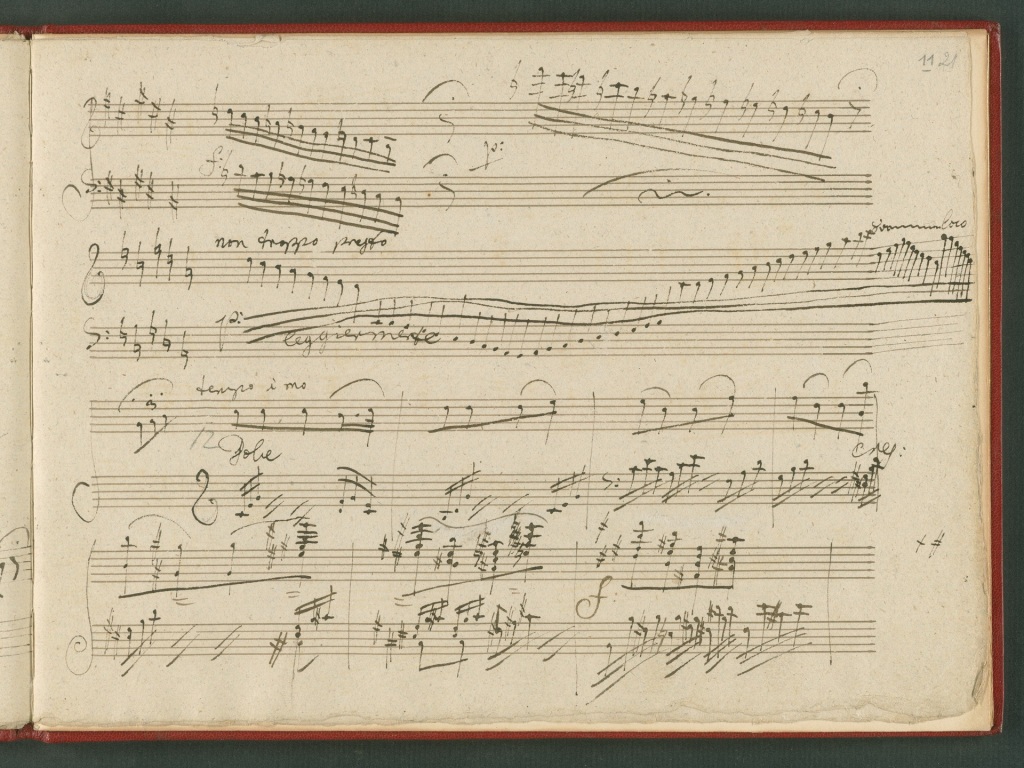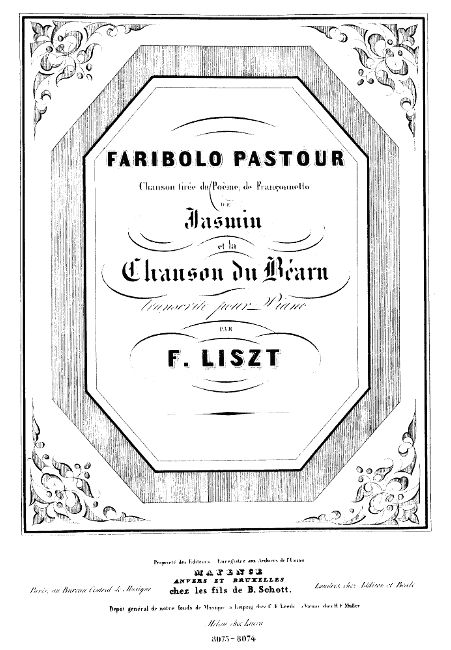

Kerry Waller at St Mary’s Perivale with an eclectic programme that was played with simplicity and intelligence .
Three preludes by Respighi played with crystal clarity, purity and the grace and ease that he brought to all he did .Mozart was beautifully shaped with simple elegance and brilliance and well oiled fingers that shaped all they touched with eloquent musicianship.If the Liszt Ballade lacked a great architectural shape it gained from being played with such clarity and beauty A fearless technical mastery as the tempest of Hero and Leander played itself out in Liszt’s great tone poem of such a sad tale.Bacewicz I have only once heard before and it is a work as Kerry said touched by the period of war with desolation ,isolation and dynamic drive.
A charming little pieces by Poulenc were played as an encore :Villageoises – six petites pièces enfantines :Valse tyrolienne,Staccato,Rustique,Polka,Petite ronde Coda and dedicated to Jean Giradoux and they showed off his simple innocence and clarity and yet again the eclectic choices of this remarkably inquisitive musician .




Kerry Waller began his piano studies at the age of five under Wolfram Linnebach. He later pursued his studies under Jacques Després at the University of Alberta, Paul Stewart at the University of Montreal and Katya Apekisheva and Ronan O’Hora at the Guildhall School of Music and Drama. Summer programmes attended include Encuentro de Santander, Meadowmount School of Music and the International Summer Academy of the University of Music and Performing Arts Vienna. He has played in masterclasses with Piers Lane, Victor Rosenbaum, Boris Berman, Idil Biret, Claudio Mehner-Martinez, Dennis Lee, Ann Schein, Christiane Karajeva, David Jalbert and Eric Larsen, among others.

Kerry has performed concertos with the University of Alberta Symphony Orchestra, Montreal Sinfonia and Quebec Symphony Orchestra and has worked with conductors such as Petar Dundjerski, Louis Lavigueur, Gilles Auger, Simon Wills and Michael Tilson Thomas. Kerry has collaborated with the cellist Ivan Monighetti and the horn player Richard Watkins and recent engagements include recitals in the London Symphony Orchestra lunchtime recital series, the Blüthner recital series, the London City Music Society concert series, the Sarah Walker Festival and the Guildhall Chamber Festival.




Grażyna Bacewicz5 February 1909 Łódź Poland 17 January 1969 Warsaw
Her father, Wincenty Bacewicz, gave Grażyna her first piano and violin lessons.In 1928 she began studying at the Warsaw Conservatory where she studied violin with Józef Jarzębski and piano with Josef Turczynski, and composition with Kazimierz Sikorski graduating in 1932 as a violinist and composer.She continued her education in Paris having been granted a stipend by Paderewski to attend the Ecole Normale de Musique and studied there in 1932–33 with Nadia Boulanger (composition) and André Touret (violin). She returned briefly to Poland to teach in Łódź, but returned to Paris in 1934 in order to study with the Hungarian violinist Carl Flesch After completing her studies, Bacewicz took part in numerous events as a soloist, composer, and jury member. From 1936 to 1938 she was the principal violinist of the Polish Radio Orchestra, which was directed then by Grzegorz Fitelberg .This position gave her the chance to hear much of her own music. During World War 11,Grażyna Bacewicz lived in Warsaw .She continued to compose and gave secret underground concerts, where she premiered her Suite for Two Violins.Bacewicz also dedicated time to family life. She was married in 1936, and in 1942 gave birth to a daughter, Alina Biernacka who became a recognized painter.Following the Warsaw uprising they escaped the destroyed city and temporarily settled in Lublin.After the war, she took up the position of professor at the State Conservatoire of Music in Łódź . At this time she was shifting her musical activity towards composition, drawn by her many awards and commissions. Composition finally became her only occupation from 1954, the year in which she suffered serious injuries in a car accident.She died of a heart attack in 1969 in Warsaw.

Grażyna Bacewicz (1909-1969) is one of the most significant composers of the mid-20th century, and yet her music remains largely unknown. In the period be- tween the two world wars, she studied in Paris with Nadia Boulanger, like so many American, British, and Polish composers, but during her lifetime her reputation rarely translated itself into frequent performances outside her native Poland. Bacewicz had a distinctive creative personality and an intuitive approach to form that rewards close study. Her experience as an orchestral leader and concert violinist informed and enriched the string writing in the string quartets, violin concerts and sonatas which have received some attention on record. However, distinguished pianists such as Krystian Zimerman have recently begun to make a persuasive case for Bacewicz’s piano writing, which may be appreciated at its freest and most demanding in the Second Piano Sonata.

Bacewicz declared that she did not see herself as an innovator but as a progressive composer: ‘Each work completed today becomes the past yesterday.’ Her two sets of etudes tackle different techniques of pianism within clear, often ternary forms, but the imaginative ideas within them hint at her larger works in a similar way to the etudes and mazurkas of her compatriots Chopin and Szymanowski, highlighting her seemingly endless capacity for reinvention.Grażyna Bacewicz (1909-1969) was one of the foremost and influential Polish composers of the 20th century. Her multi-faceted talent forged a path for female composers in a predominantly male and conservative musical era and climate. After studying in Warsaw she went to Paris to study composition with Nadia Boulanger and violin with Carl Flesch. She became a successful soloist, concertmaster of the Polish Radio Orchestra and, after WWII, a teacher at Łódź Conservatory.


Tre Preludi sopra Melodie Gregoriane, a masterwork of Respighi’s small catalogue of solo piano music and Italy’s piano literature in general, should be appreciated here not only as a most appropriate “filler” but also as the composer’s first homage to his beloved Gregorian modes. Respighi owed his acquaintance with Gregorian chant to his wife and former pupil Elsa, holder of a degree in Gregorian chant and a gifted singer and composer in her own right. During their honeymoon in the hills of Anacapri, Elsa would sing daily as her wedding gift to Respighi the themes of the Graduale Romanum. Under this spell Respighi became more and more enamoured of the ancient melodies, and he composed the Tre Preludi. They were apparently written in 1919, thought the manuscript bears the final date of 1921 along with an unexpected dedication to Alfredo Casella.
The first prelude in G-sharp minor is a nocturnal piece with passionate, hymn-like crescendos. Its motif reappears metamorphosed as a bass figuration in the second prelude, a tempestuous piece in C-sharp minor with a short, visionary episode of cadenza-like character. The final F-sharp minor prelude in 5/4 meter is a lament over a bell-like ostinato accompaniment. Descending arpeggios in the bass create an effect perhaps more evocative of an Oriental caravan than of a sacral procession.
Later Respighi made rare exception to his notorious refusal to rework his earlier compositions, and he followed Elsa’s suggestion to orchestrate the pieces. With the addition of a fourth movement, they became his Vetrate di Chiesa. The origin as absolute music of the four “symphonic impressions” of 1927 is generally ignored, and it would be out of place here to quote the aptly conceived titles and programmatic texts which were inscribed on the score. Since gramophone recordings of Vetrate have long been available, the Respighi connoisseur may not find it easy to forget the descriptions and the luxuriant orchestral sound when discovering the original.

